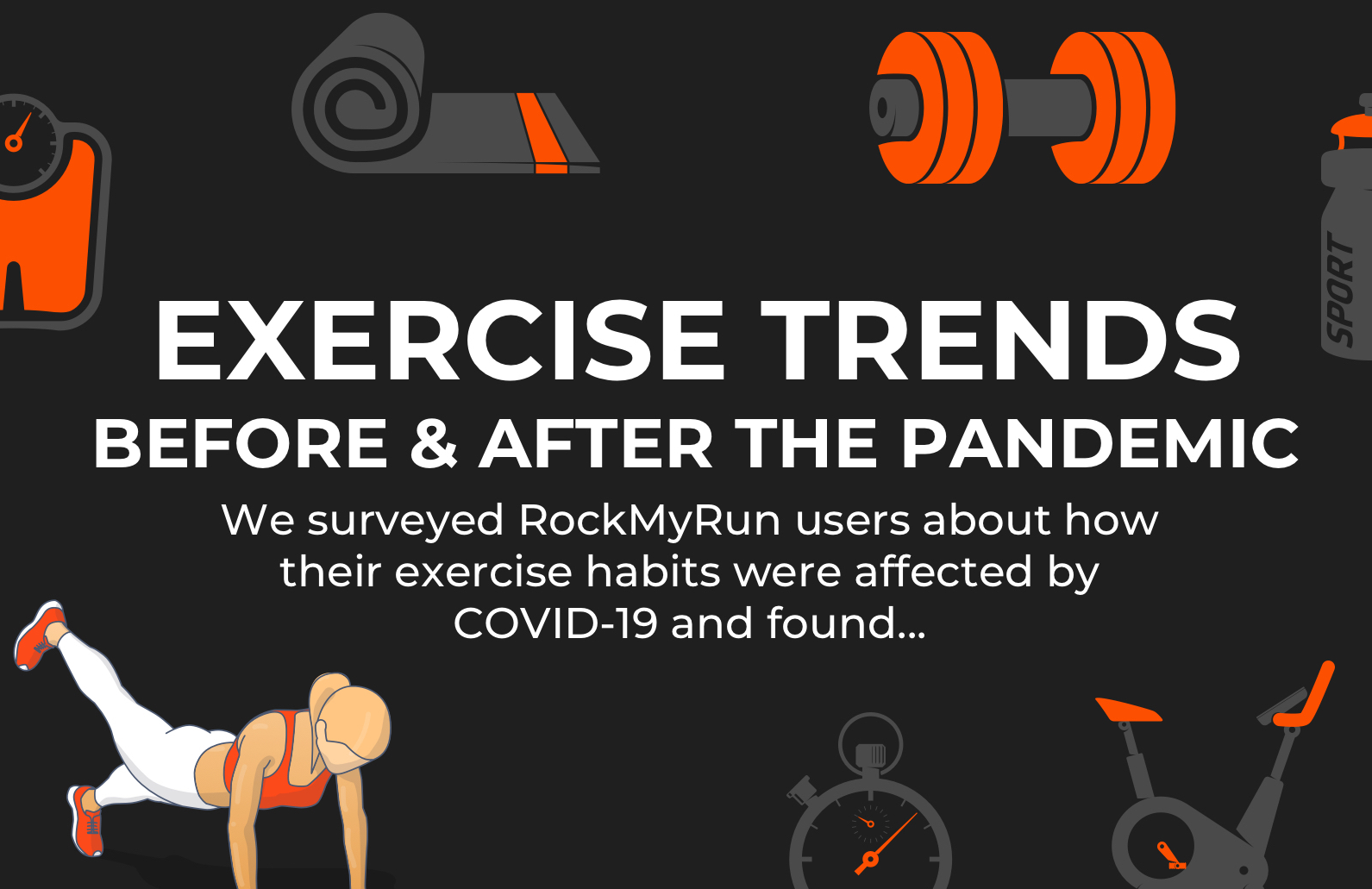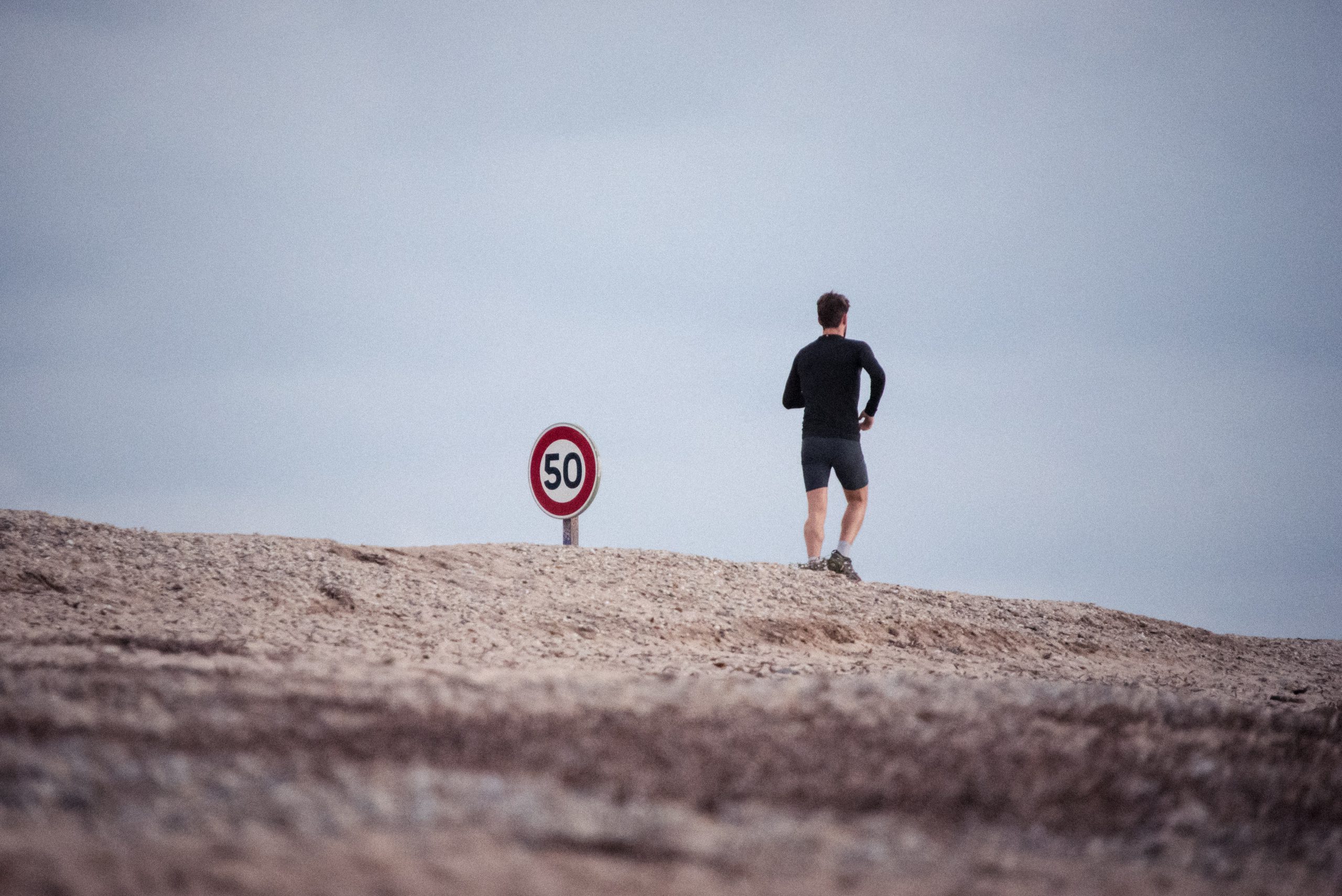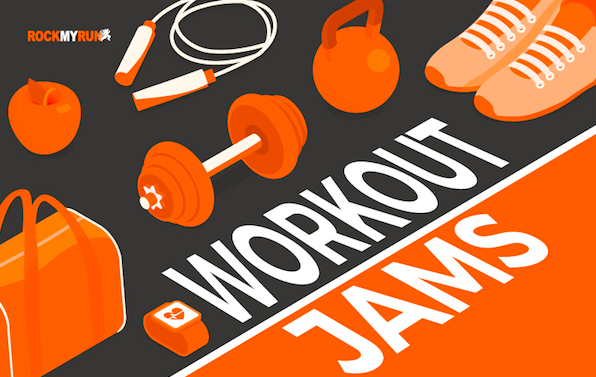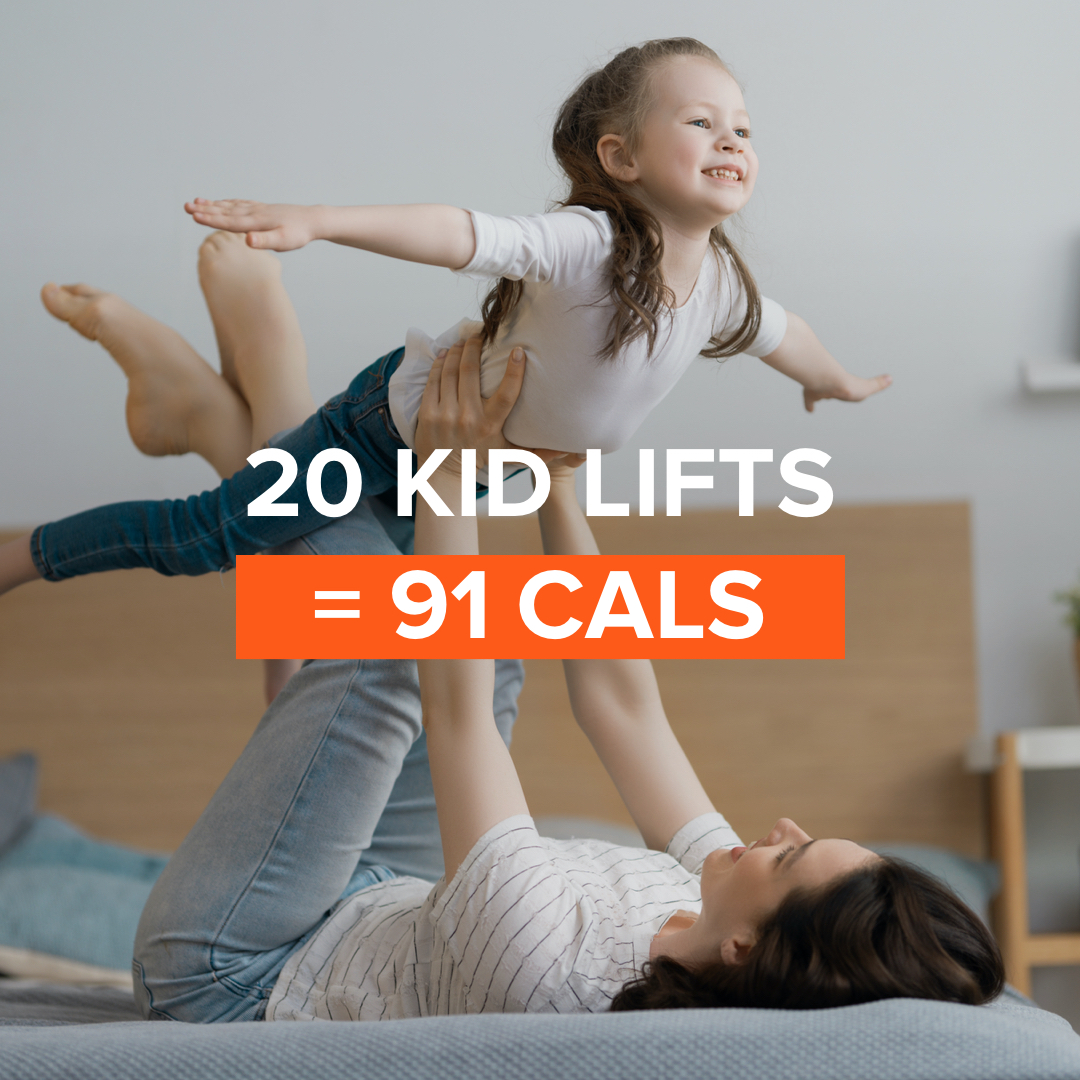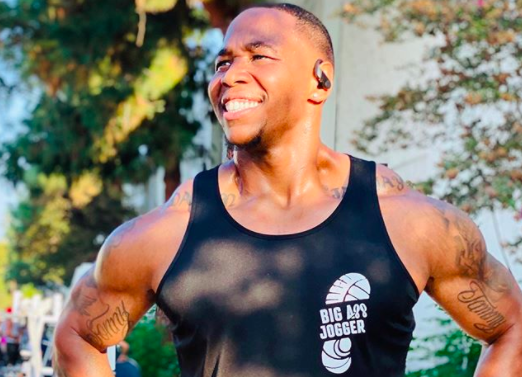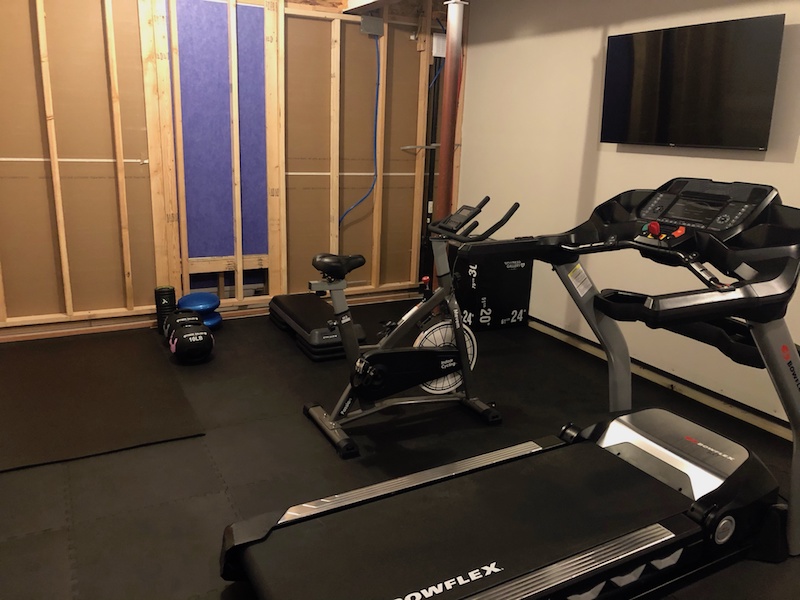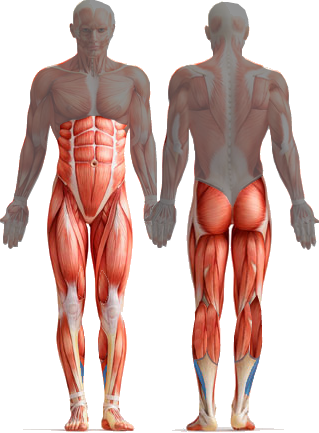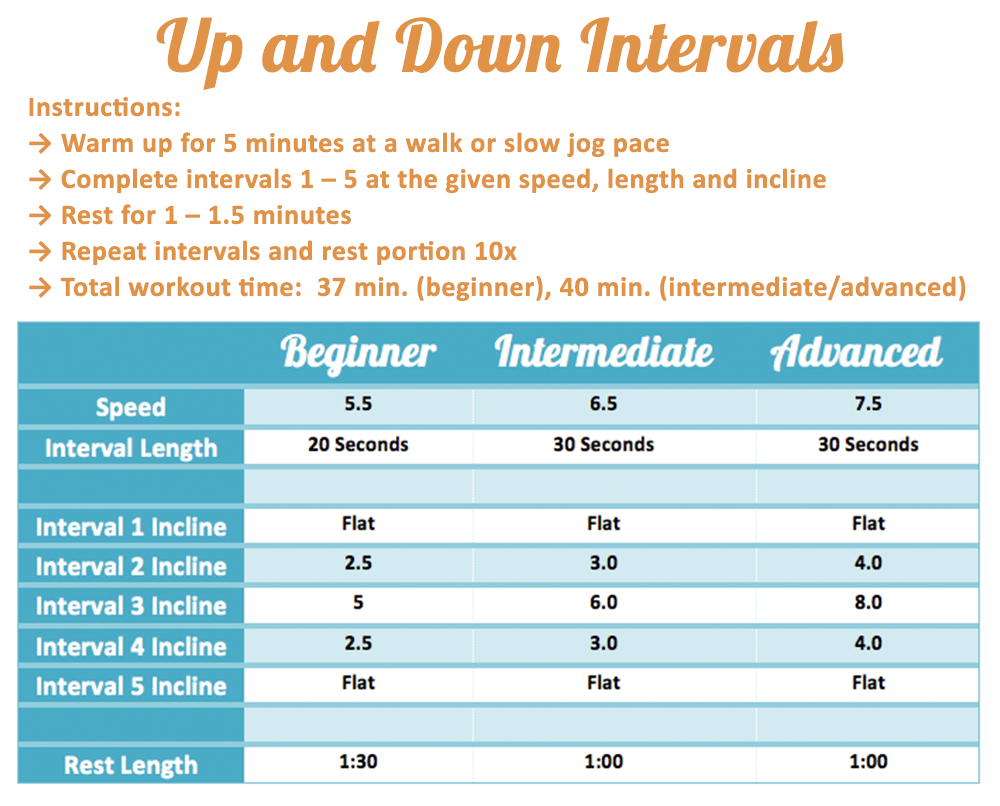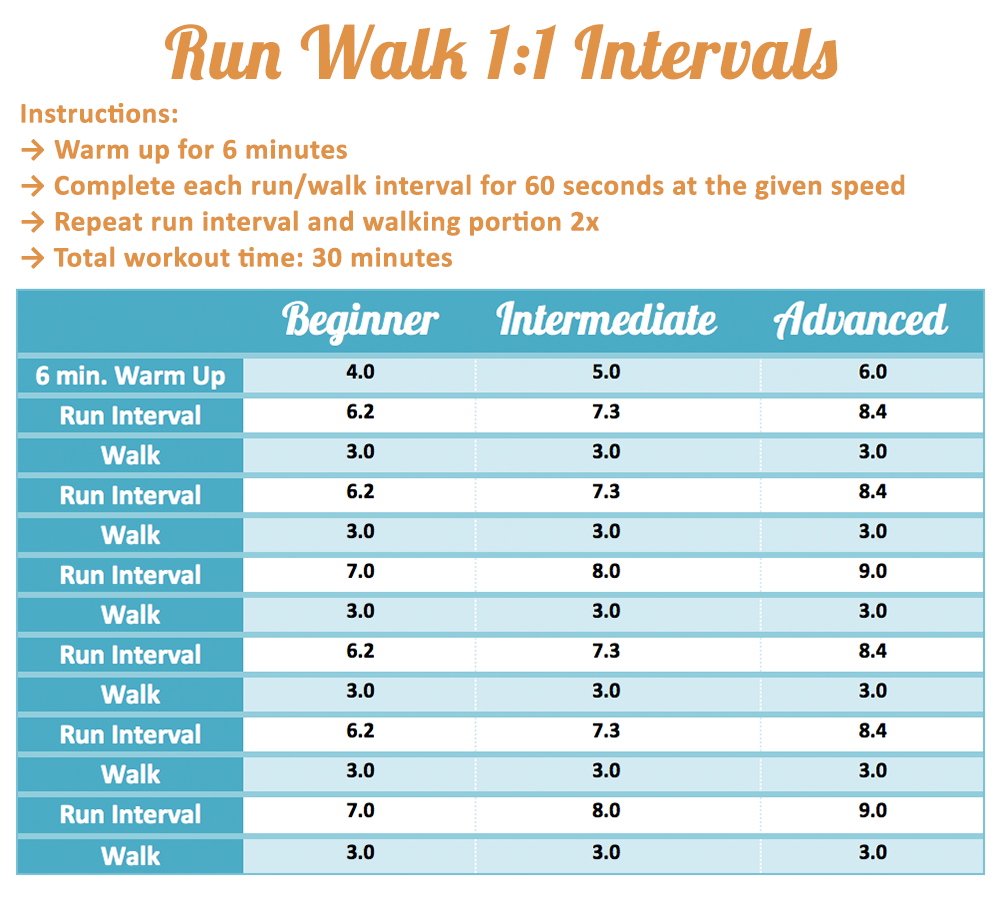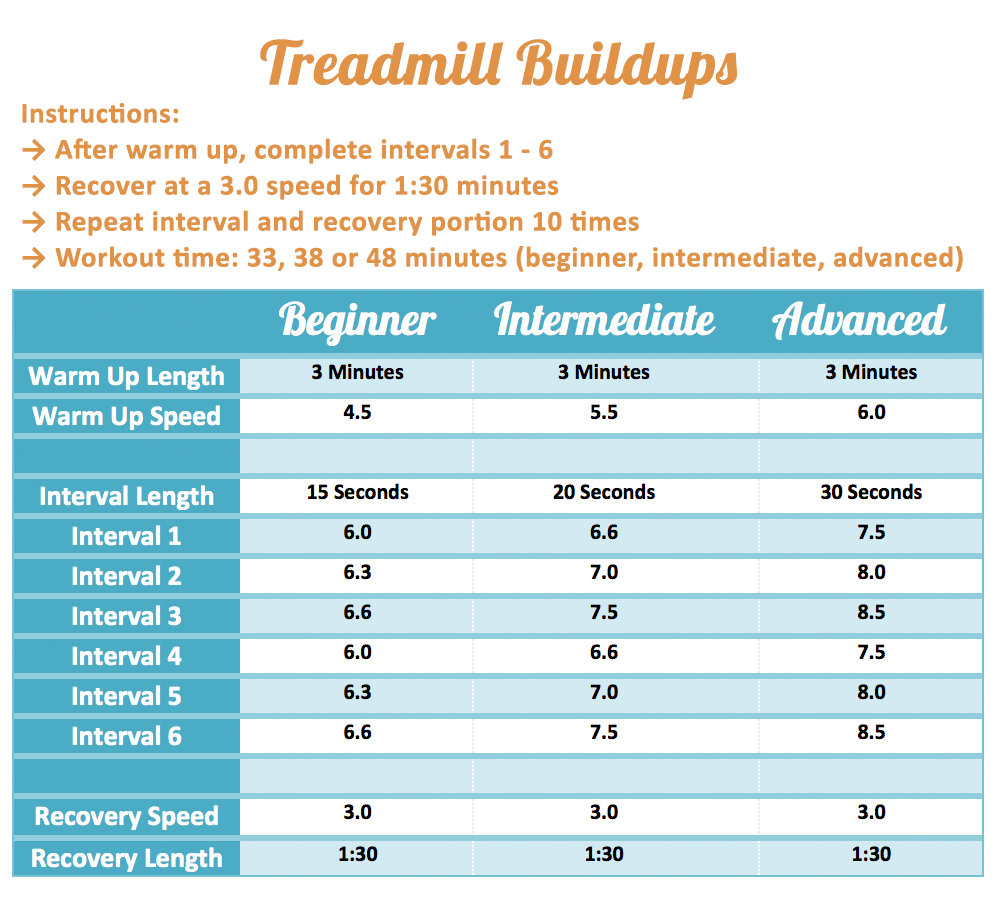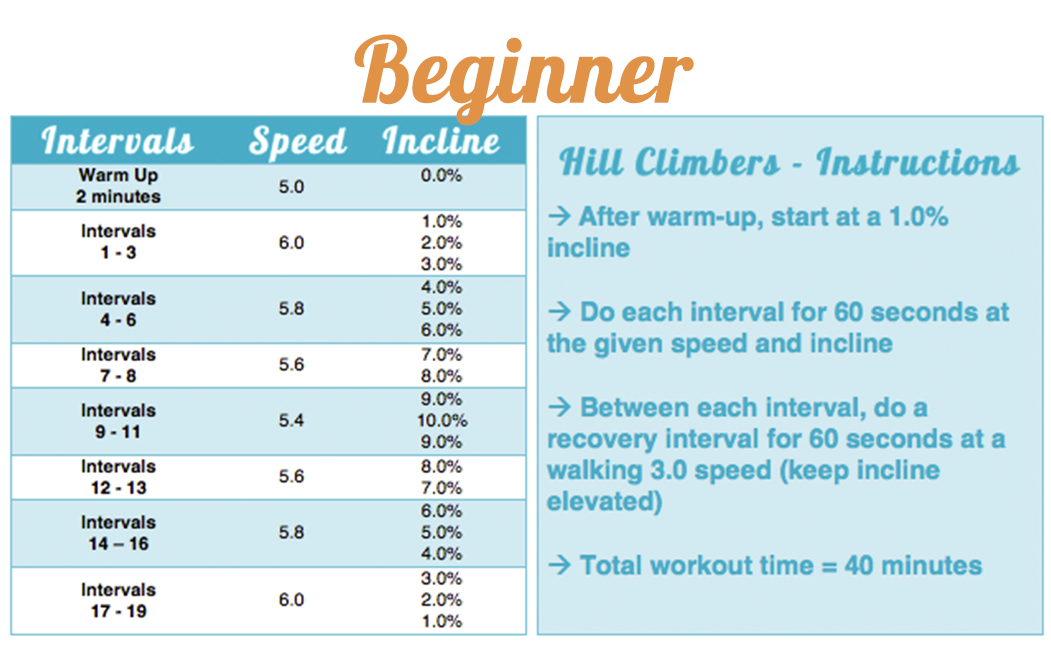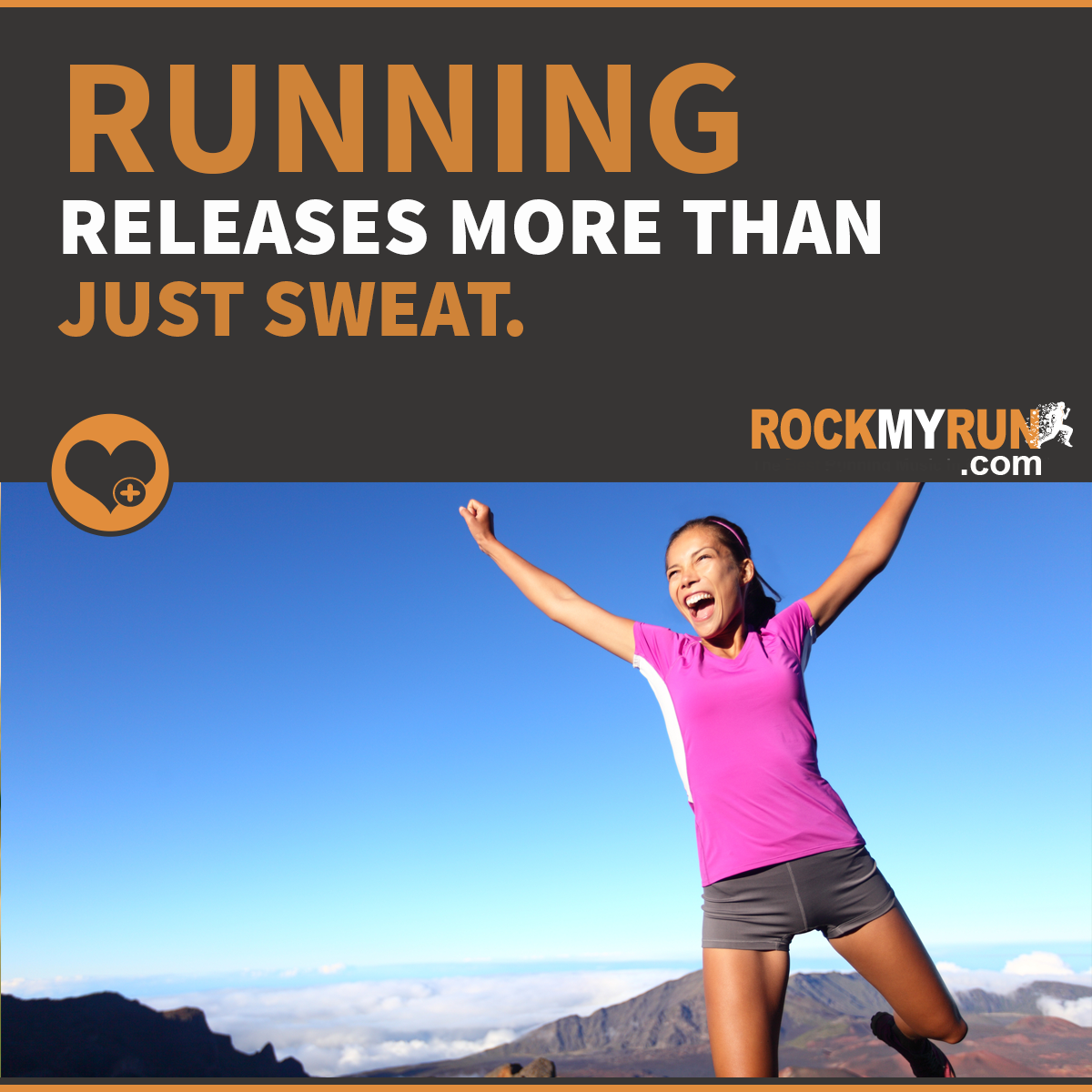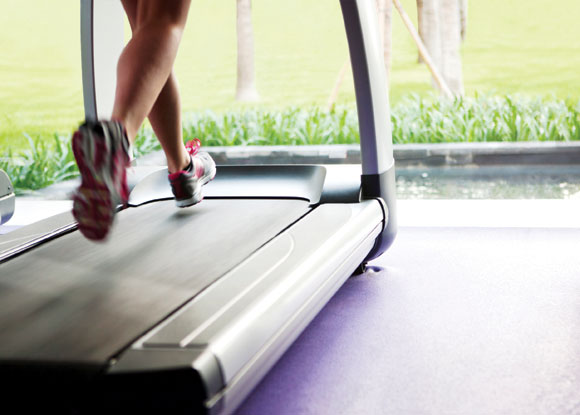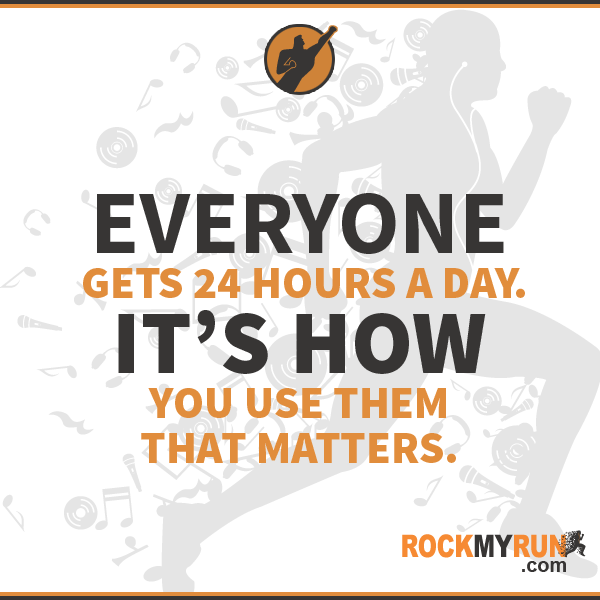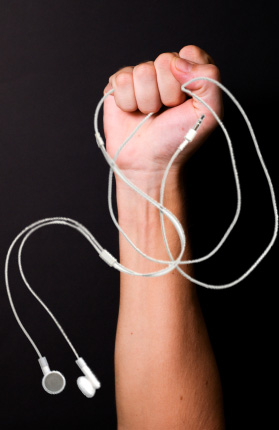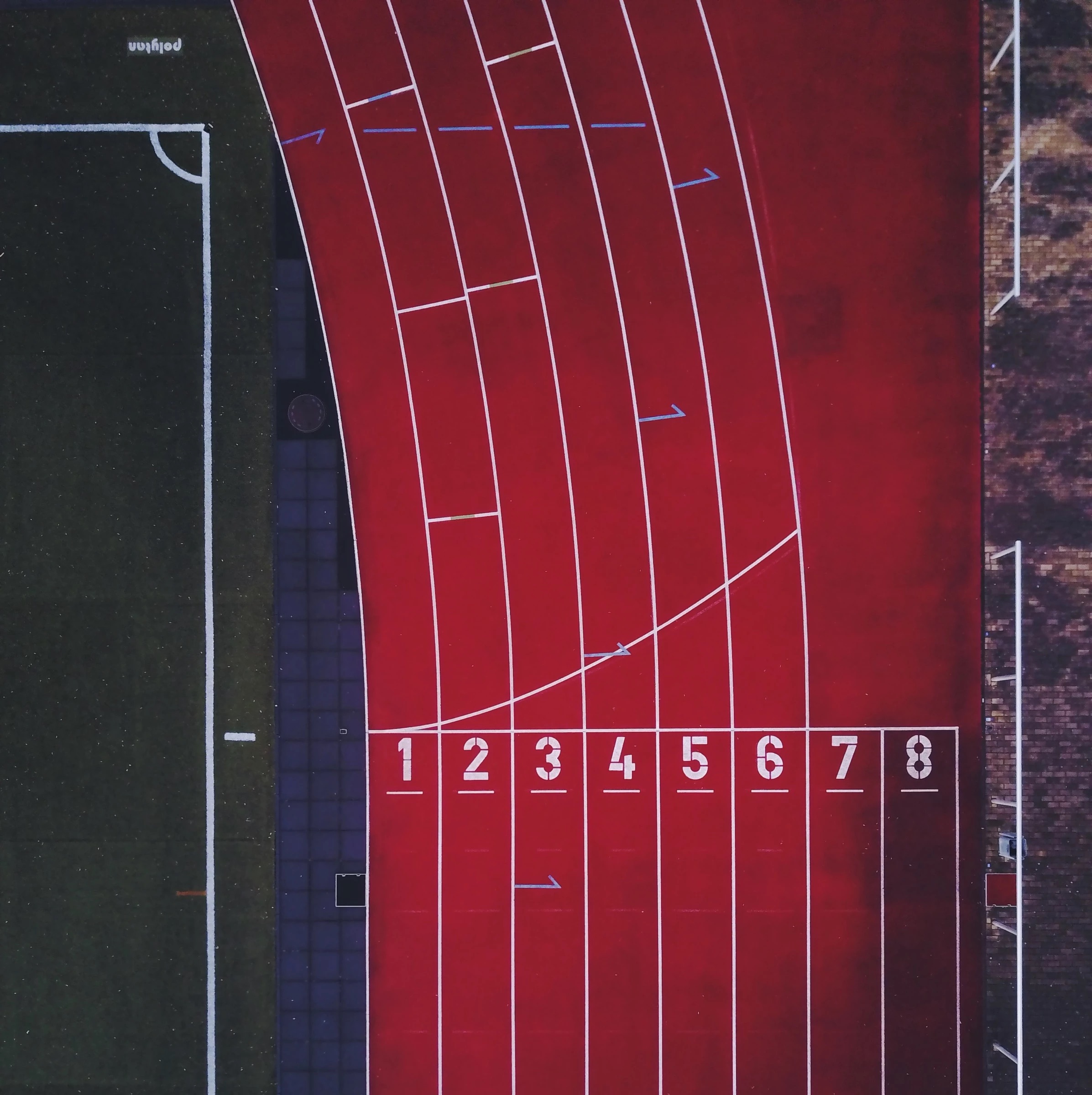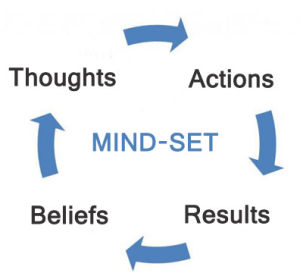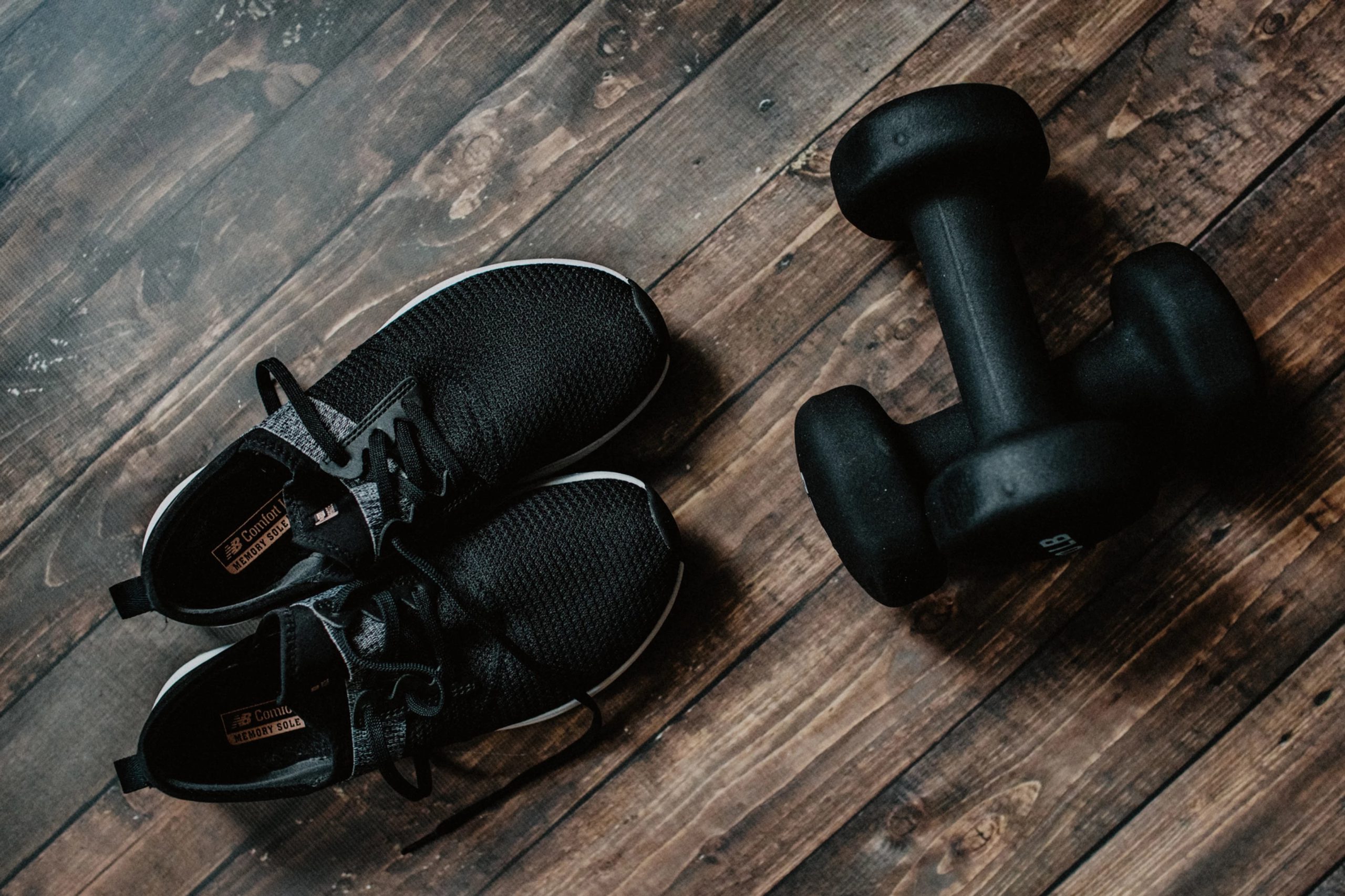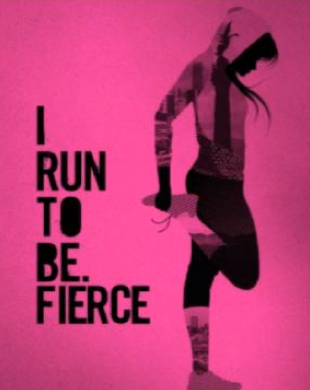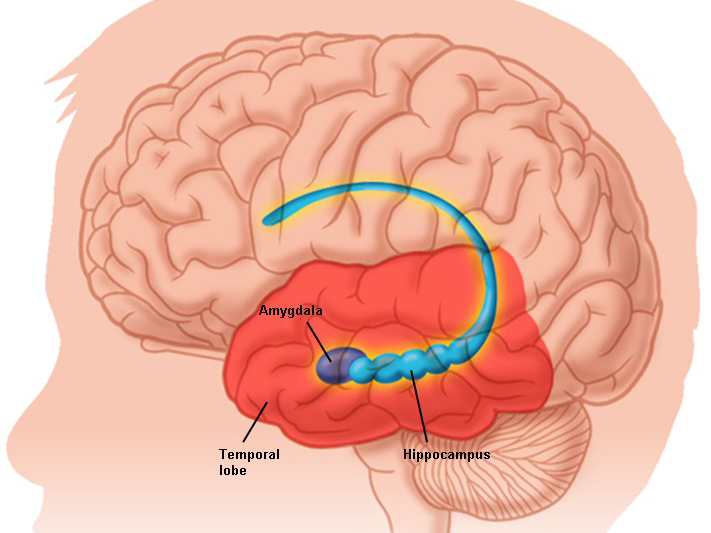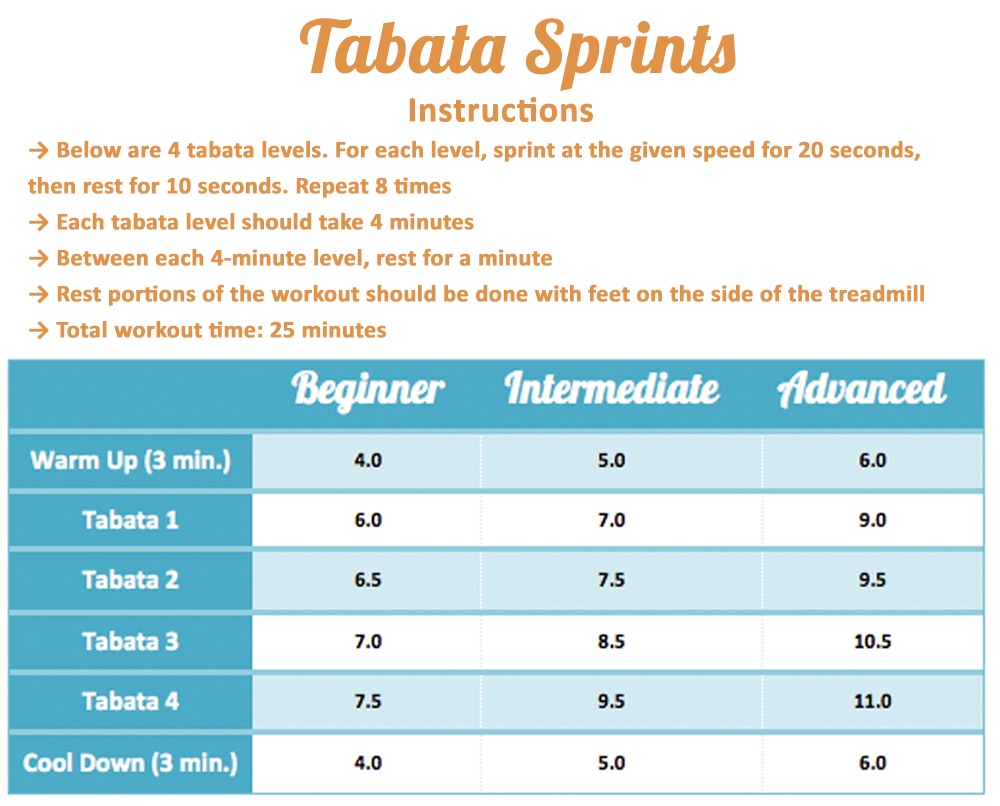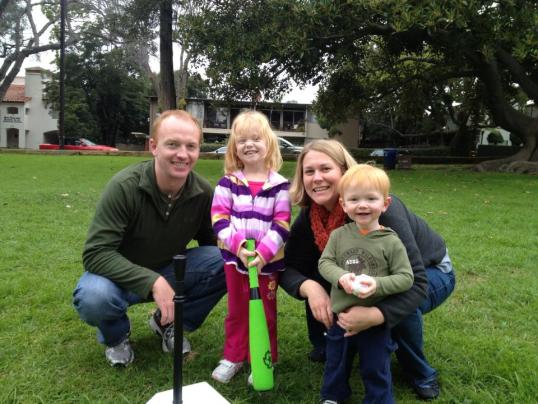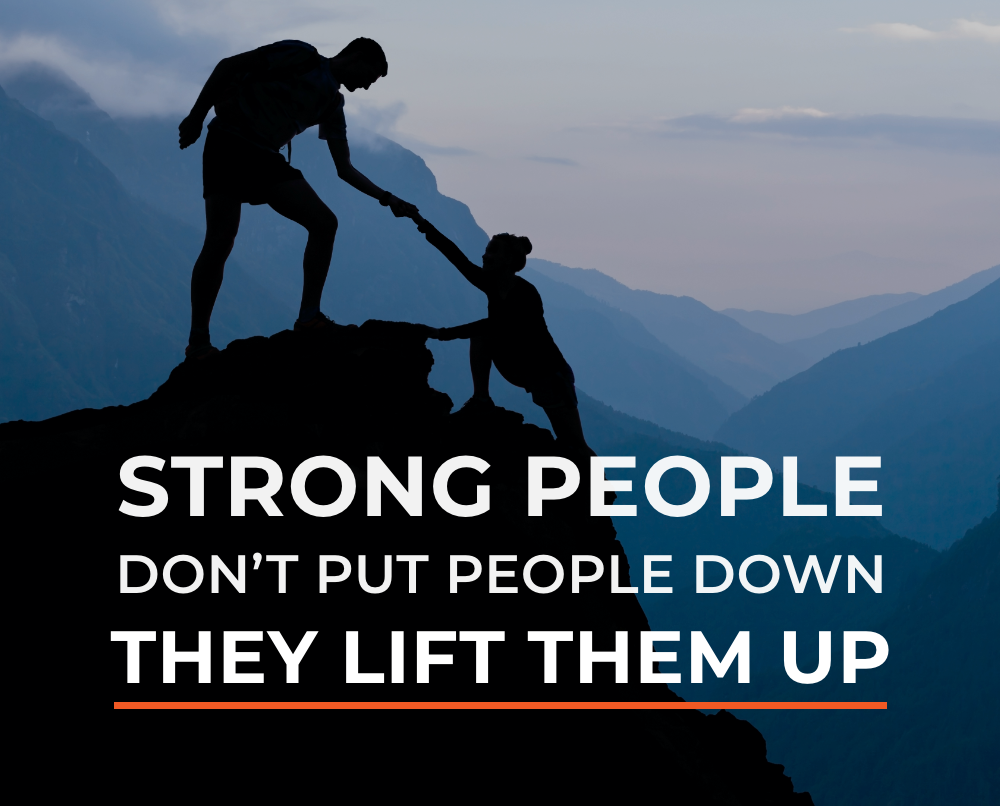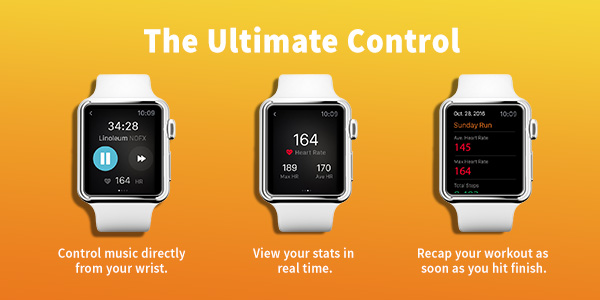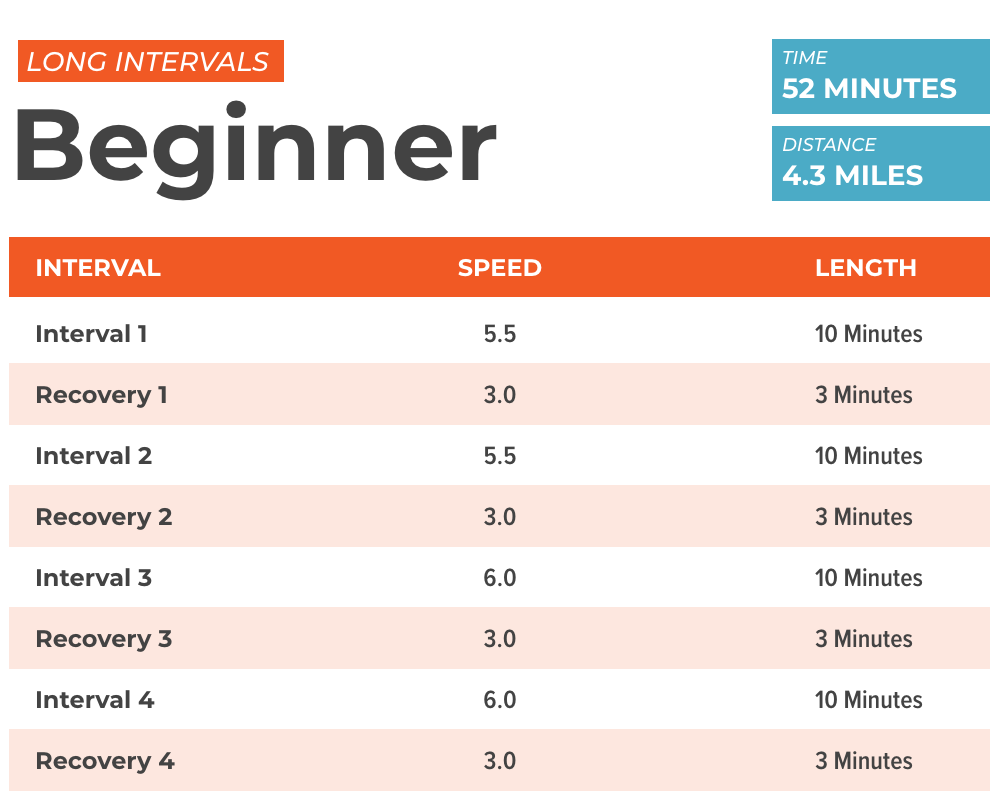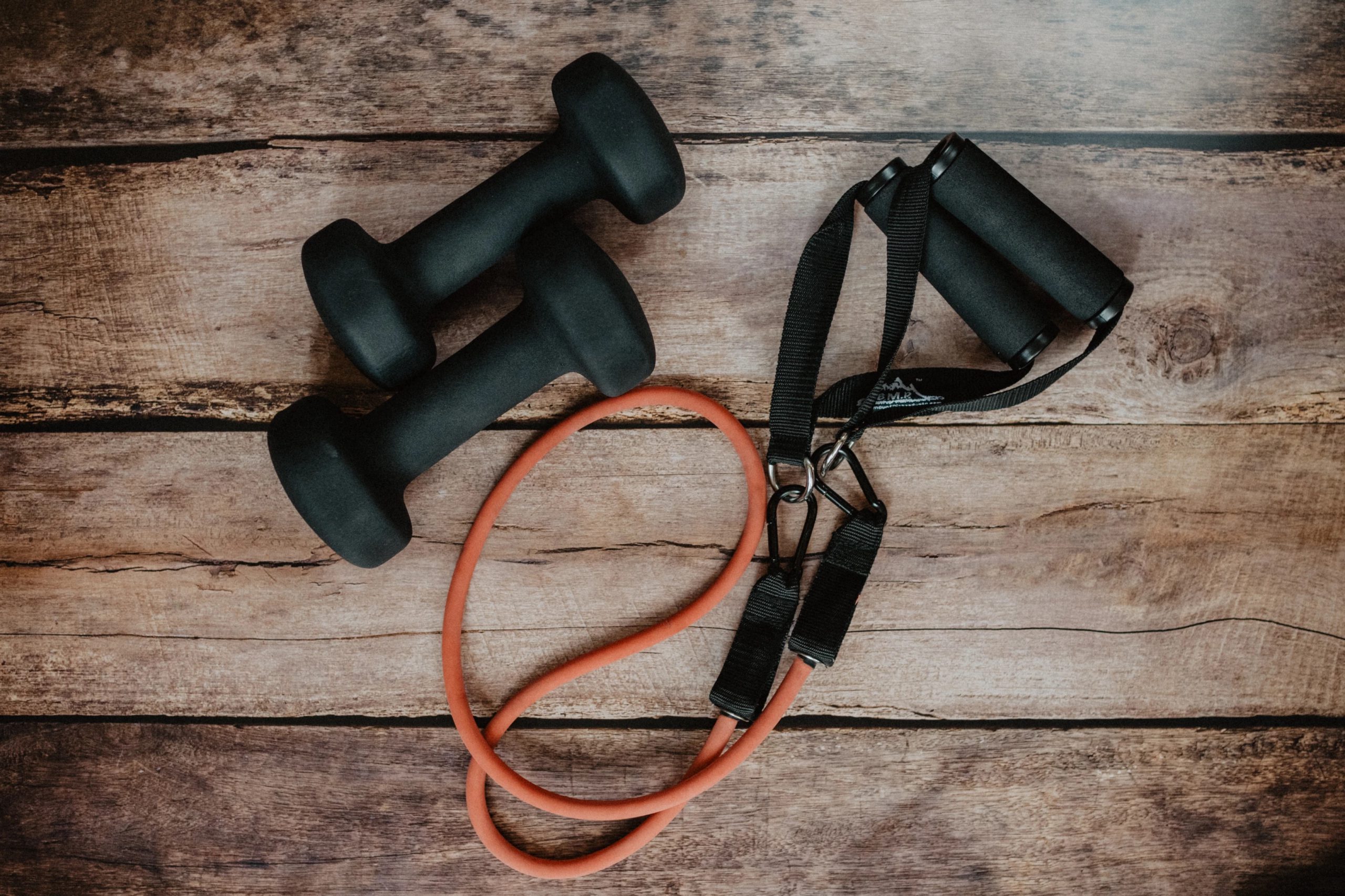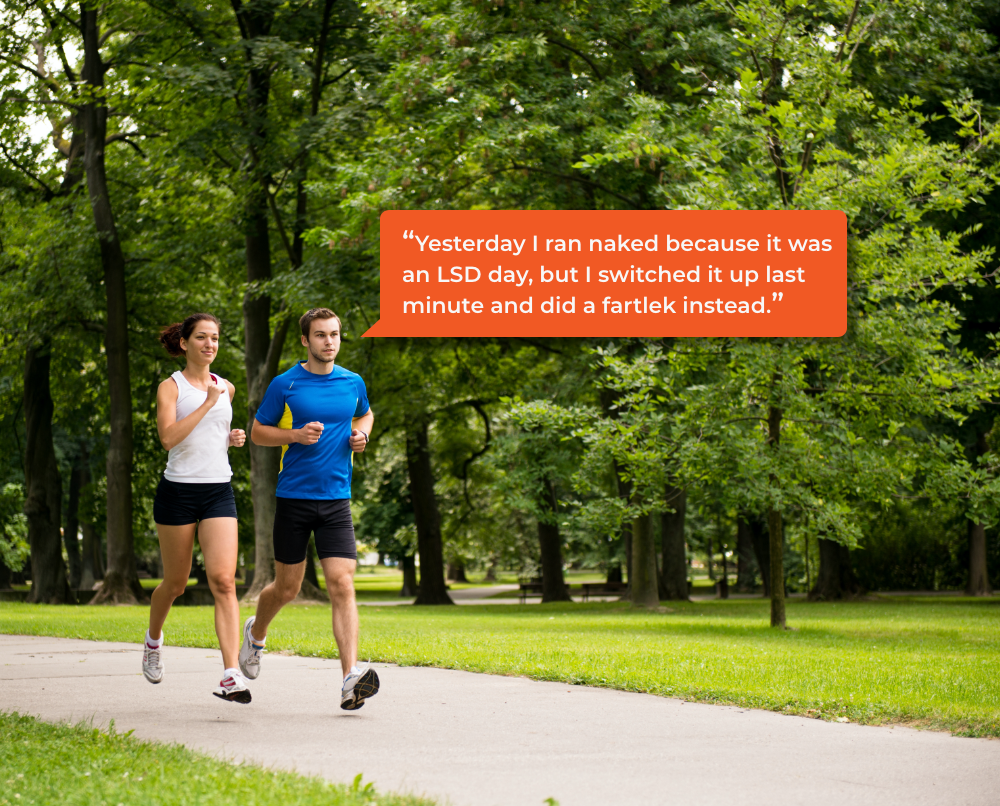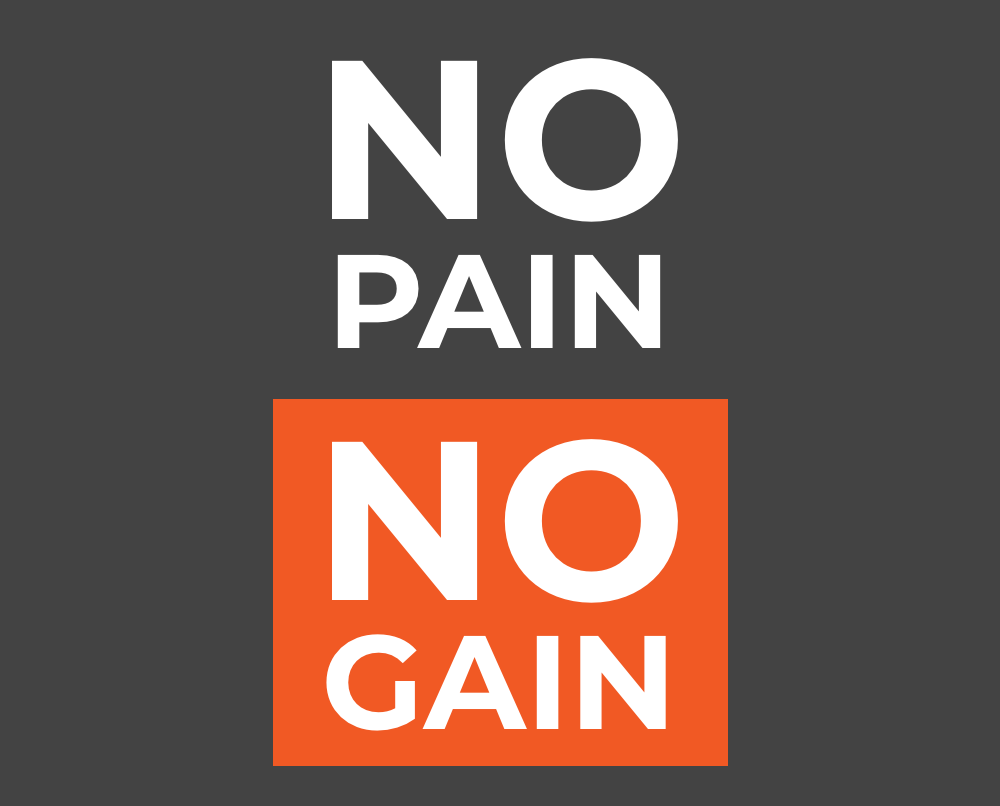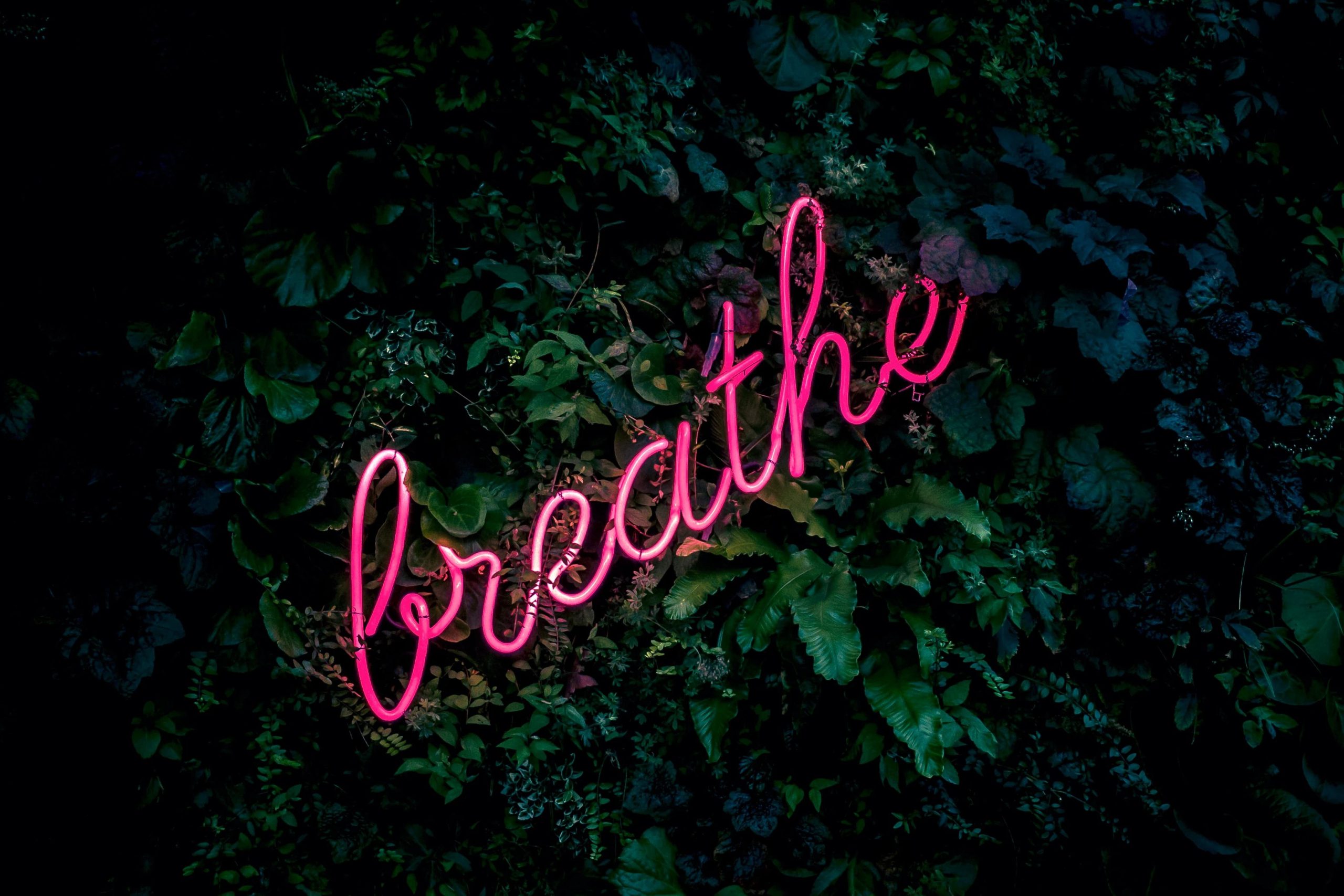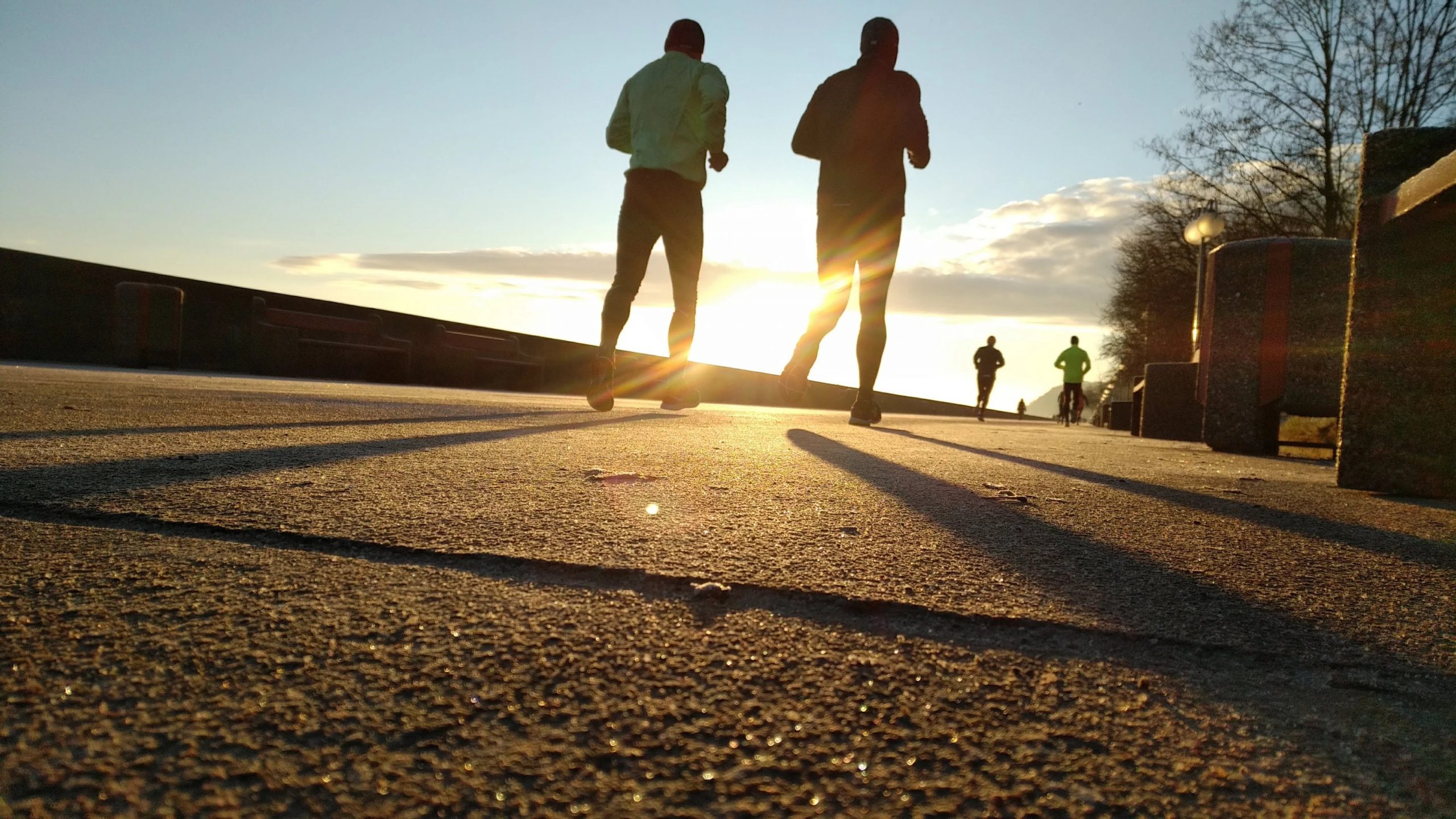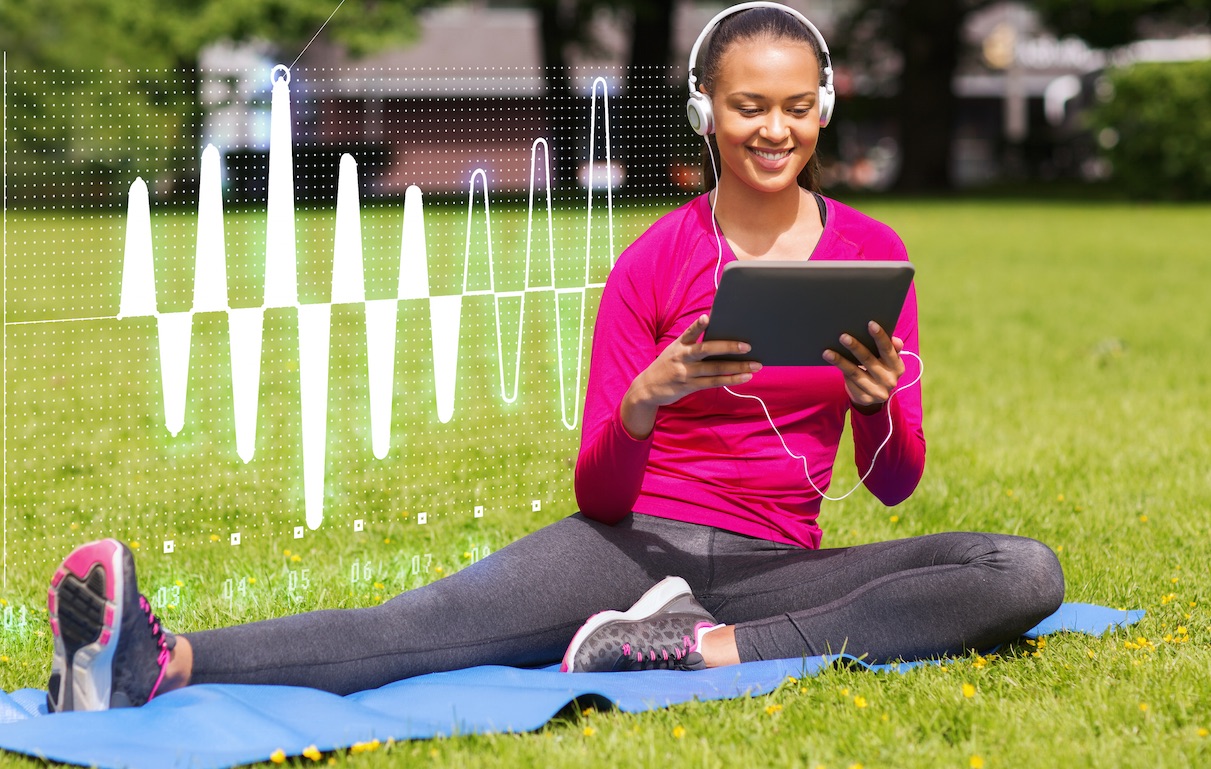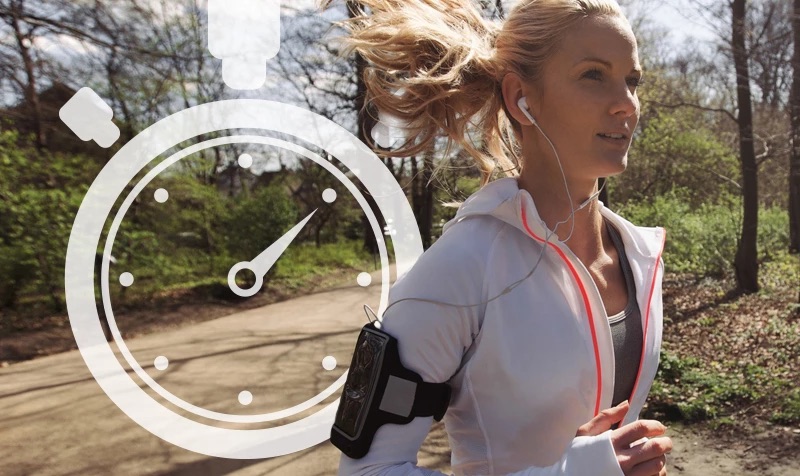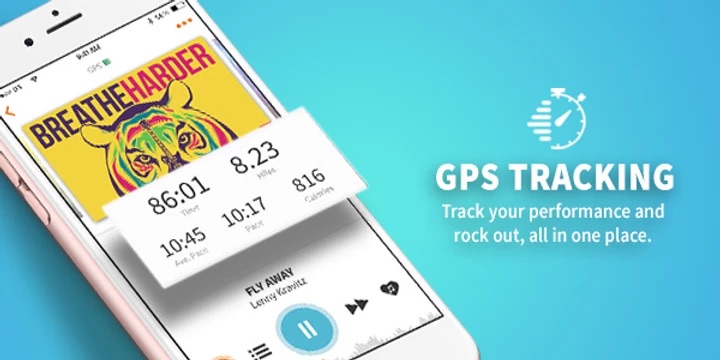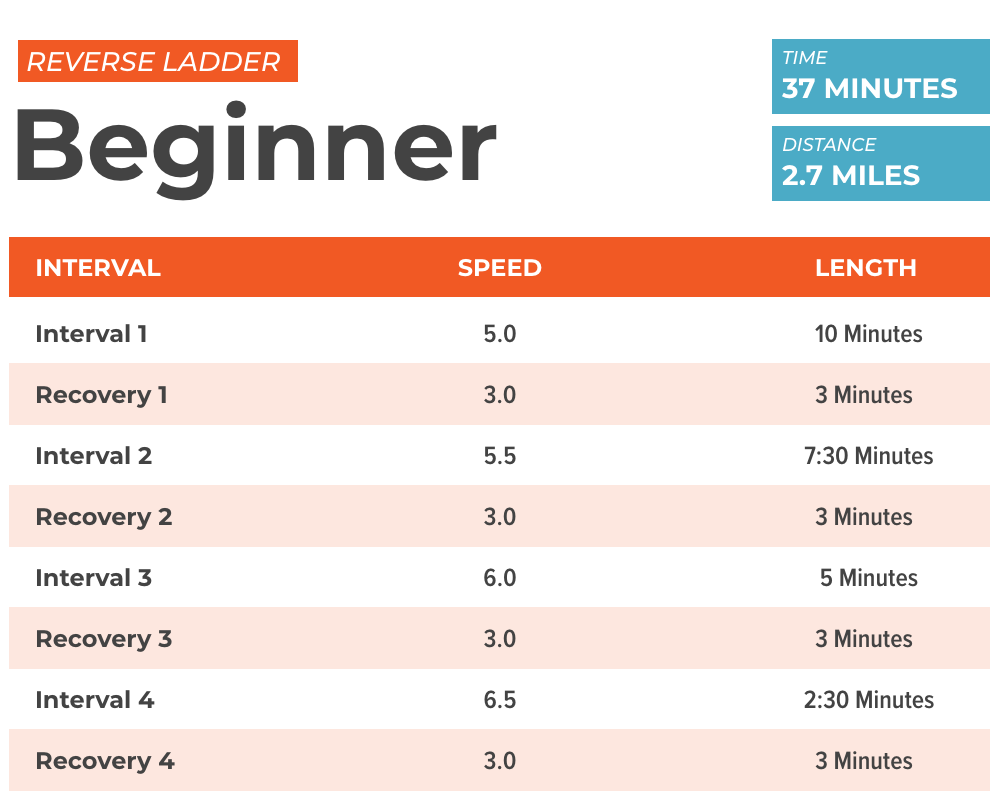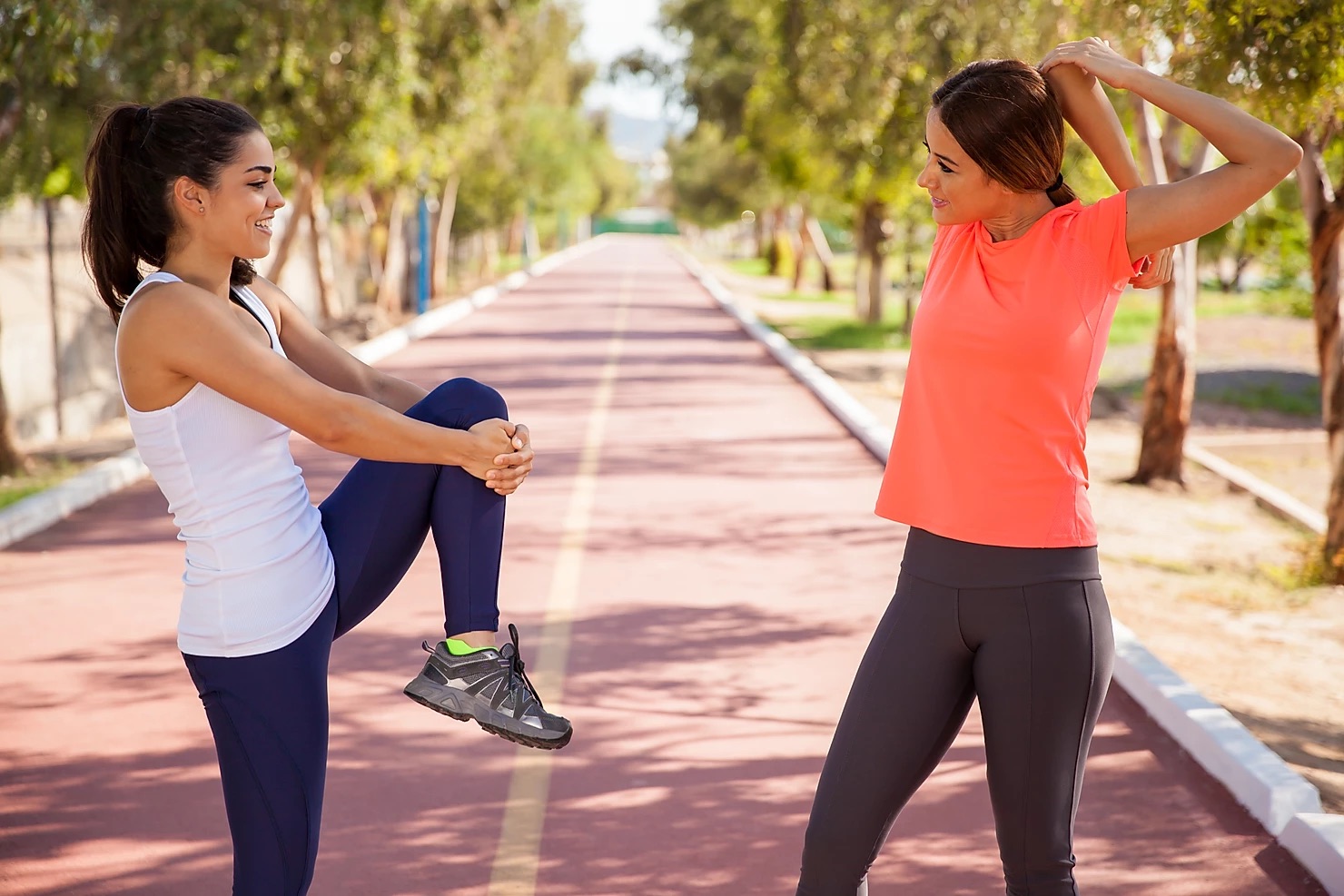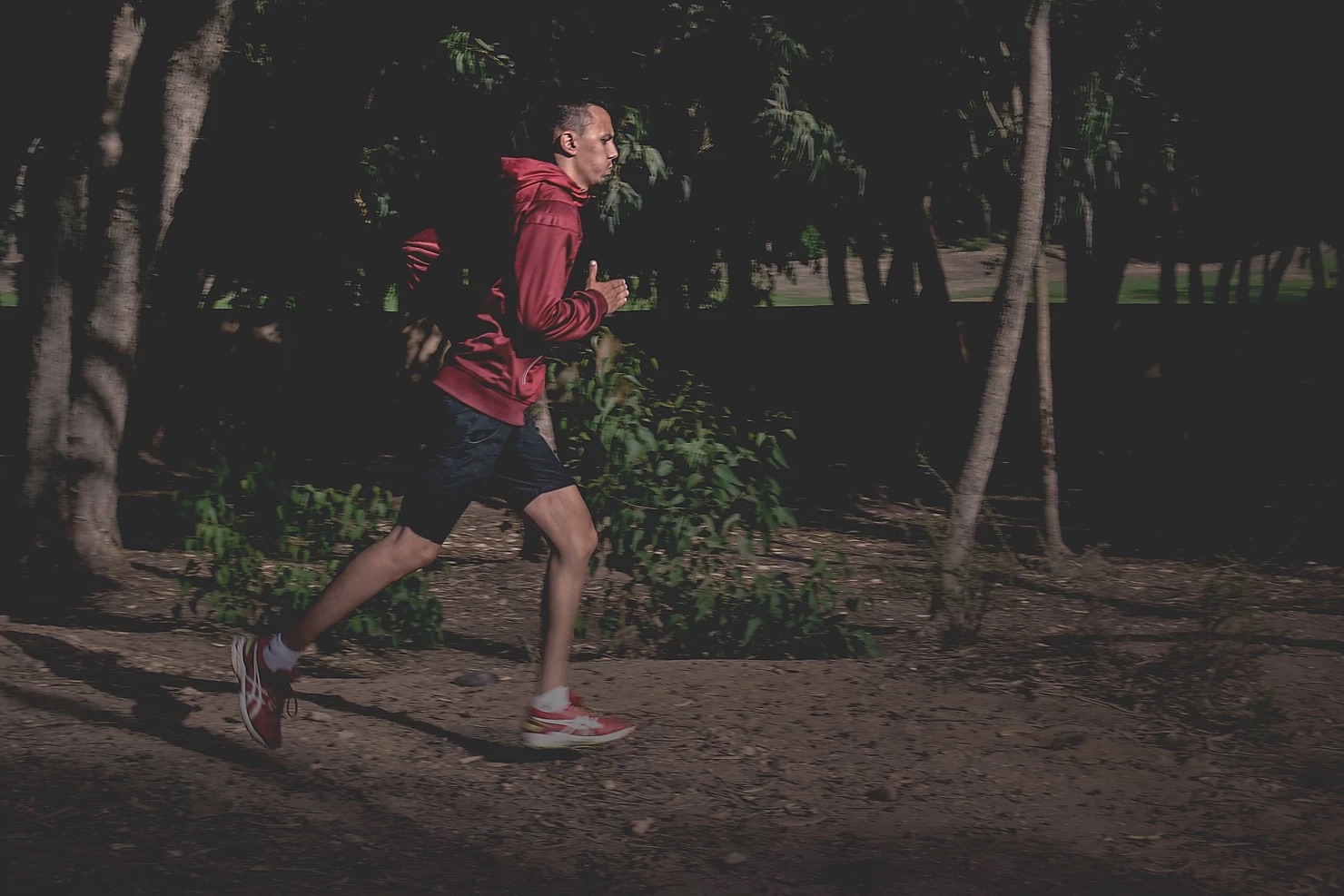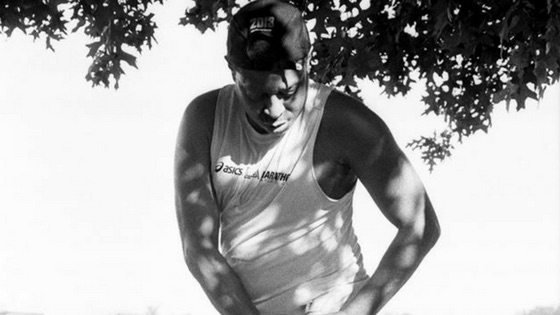· 2 min
32 Count Workout Music – What You Never Knew You Needed
While searching for the perfect workout playlist, you may have come across music mixes labeled as a 32 Count mix. If you are not already familiar with what that means, read on to learn what it is and why you may want to have a listen! Perhaps you have taken a fitness class with an awesome trainer who has great command of the room. Almost like magic, they intuitively know when to use those big beat drops to drive energy at the precise moment when it matters most. That is likely because the trainer is using musical phrasing to time the music, which is exactly what ‘32 counts’ means. Now, don’t worry! You do not need to be a musician or fitness trainer for this to be beneficial for your solo workouts too. What Exactly Happens In A 32 Count Mix? A song consists of many beats strung together to make the music we hear, but we all know there are certain beats within a song that can really make an impact. For example, a song that builds into a big crescendo and drops a powerful downbeat can completely change the intensity of the song. It could also be a noticeable difference in the tempo or volume of the song. You get the idea. In a 32 Count mix, there is a slight adjustment in the music every 32 beats. Sometimes it is extremely noticeable and other times it can be a bit more subtle. This ‘transition’ can happen in a variety of ways. It can highlight the sound of a specific instrument, the singer can begin the chorus or a new verse, or it can be an obvious downbeat that elicits a strong feeling of emotion. How do 32 Count Mixes Benefit Me? When these ‘transitions’ happen every 32 beats, they start to become predictable in your mind. You can begin to anticipate this change. This is particularly beneficial for someone engaging in a fitness activity because the steady beat keeps them accountable to maintain their pace or intensity, but the ‘transitions’ provide them a way to stay motivated and even push a little harder. Our bodies are naturally driven by rhythm. Even if you can’t follow a beat on the dancefloor, that does not mean you can’t appreciate the power of a beat! Our RockMyRun DJs specially produce our 32 Count mixes to do just this. Want to give it a try? Use our search feature and search by activity to locate the 32 Count tag. Not a current subscriber? Visit our website to start a free trial.Try free for 14 Days
· 2 min
Exercise Trends Before and After the Pandemic
It’s been a long and life-changing year, but there is finally a light at the end of the tunnel. With the pandemic (hopefully) coming to an end soon, we were curious… How has the pandemic affected exercise habits? Being a tech company, we wanted to collect data, and who better to ask than our RockMyRun users? Since RockMyRun, a music app for exercise, was created for all fitness levels, we thought this would be a pretty even spread in terms of performance, exercise routine, and regimen. Are you ready for the results? More People Are Working Out from Home This should be no surprise, but since the pandemic began, we saw a significant increase in users working out from their homes. (Home Gym anyone??) What’s interesting is that we saw an even larger increase in people working out from home with guided online videos or virtual coaching. It does make sense, after all. When you can’t get to the gym, you have to do something, and often those online sessions can help you stick to your routine and feel like you actually are at the gym. There was also an increase in running or jogging outside. Who doesn’t love an excuse to get that fresh air! Returning to Their Workout Routines Now that the end of the pandemic is on the horizon and gyms either already have opened, or will open back up soon, who will return to their routine before COVID? We found that just a little under half of those surveyed are itching to get back to how things were before all of the restrictions. So we wondered, with the difference in how people exercise, what exactly will that mean for current activity levels? Will people exercise more after the pandemic? Surprisingly, we found that most people plan on keeping their current activity levels after restrictions lift. That being said, it did appear that many of those interviewed are exercising more than they did before the pandemic, even from home, so they plan on sticking to that new regimen, good job! We also found that 36% of people plan on exercising more once restrictions lift further. Staying Motivated Once Restrictions Lift This pandemic was tough, but for many it was an opportunity to increase their fitness levels and improve their health. If you’re looking for a way to keep your motivation up, give RockMyRun a try! This is a music app that syncs with your body, and is scientifically proven to keep you motivated. We think you’ll love it so much that your first two weeks are free! Try free for 14 Days Full Exercise Infographic Here is the full infographic for you to share, read, and enjoy! Thanks for reading.
· 3 min
How to Set SMART Fitness Goals
Wanting to take control of your health and fitness is a positive first step. If you really want to get healthy, exercise more, or make better food choices, the next step is to start setting goals that will push you forward. This is why the SMART strategy has become so popular. SMART Fitness goals are a method of goal setting that keeps you accountable and actually works. Here’s how to set your own SMART fitness goals this year and how to use tools like RockMyRun to make those goals a reality. What are SMART Fitness Goals? When we talk about the SMART strategy for fitness goals, SMART is an acronym for the five criteria of a great goal. Let’s break it down: Specific – Instead of making a vague goal like “Get healthier,” be more precise. You could say you want to lose weight, reduce BMI, or hit a certain running time, for example.Measurable – Set goals that make it easy to track your progress. Your goal might be, “Reach a goal weight of 150 pounds” or “Reduce my body fat to 15%.”Attainable – If you’re new to the world of fitness, matching Michael Phelps’ swimming speeds isn’t a realistic goal. Your fitness goals need to be challenging enough to push you but attainable enough that you don’t get frustrated and give up entirely.Relevant – If your goals are arbitrary, it’s easy to lose motivation because you don’t see the genuine benefit of continuing to work. Establish a “why” for yourself, like living a longer life for your family.Timely – Set a specific timeline for your goal. Instead of, “Lose 20 pounds,” your goal could be, “Lose 20 pounds in three months.” Otherwise, it’s easy to keep saying, “I’ll start tomorrow.” SMART goals give you a sense of purpose and direction so you can stay organized and on target. Tips for Your SMART Fitness Goals As you set your fitness goals, you’re bound to face some obstacles. These tips can help you stay on track to crush your SMART Fitness Goals. Make Fitness Fun Part of making your goals attainable is making sure the work is enjoyable enough for you to keep coming back to it. Try tools and tricks to make fitness fun, like RockMyRun – a music app that optimizes your favorite music to work with your exercise routine by adapting to your body in real time to keep you motivated. Know Your Priorities Fitness takes time and energy. Be honest with yourself about how much of those resources you’re able to dedicate to your health goals. For instance, if your time priorities are your family’s needs and a demanding job, set a slower timetable for your fitness goals so it’s realistic. Allow for Trial and Error Different workout strategies work for different people. You may also need to change your plan part of the way through your fitness journey if you hit a plateau, your schedule changes, or if you need to change your pace or distance. Whatever the case may be, set a plan but be flexible enough to adjust it when necessary. Keep Yourself Accountable We all have bad memories, and we have conveniently bad memories when it comes to doing something that may be challenging. Keep yourself accountable by writing down your SMART Goals and hanging them up in a place you can see every day. This should motivate you as well as holding yourself accountable! Get excited about the process and achieving your goals. You should look at your goals and think “Wow, I can’t wait to be at that level!” and then get there one day at a time. We also love accountability buddies, set SMART goals with your partner, colleagues, or group of friends, and check in often to see how everyone is doing. You can even make it a competition! Start Now Once you set SMART goals, start working on them right away. Avoid losing momentum so you can keep making gains. Setting SMART Goals and Making Them Happen Improving your health is hard, but it all starts with the right goals. Learning the tricks of SMART fitness goals and trying tools like RockMyRun will help you truly make the most of the year ahead. Take RockMyRun for a test drive and give your workout a fun boost!
· 2 min
Why Run/Walk Intervals are Better (and More Effective) than Running
When you’re feeling motivated to run, all you can think about is charging forward as fast as you can. You know the faster you run, the sooner you’ll get the blood flowing, cover more distance and start torching those calories. However, if all you’re doing is charging ahead without run/walk intervals, you could be missing out on some serious benefits. What are Run/Walk Intervals? Run/walk is a type of interval training where you break up your run with periods of walking. For example, you might run for 1-2 minutes, then walk for that same amount of time before running again. Breaking it up with run/walk intervals have some attractive benefits. Benefits of including short walk breaks in your run: 1. Run/Walk Intervals Protect Your Joints Do you want: More speed? Faster recovery? Less chance of injury? If so, it’s all possible with run/walk interval training. If you’re running and start to experience pain, you’re more likely to push through it. This is bad news for your body, though, as it may increase the risk of injury. Adding a short walk in between sprints gives your body extra recovery time and puts less wear and tear on your joints, helping ensure you’ll be in better condition to continue working out uninterrupted. 2. Interval Training is Actually More Challenging If you’re one of those people who have to keep running or else you might give up as soon as you stop (don’t worry, we totally get it), you can already guess why run/walk intervals are more challenging than running alone. It takes motivation, willpower, and stamina to continue switching back and forth. It also challenges your body in different ways. In addition, many who utilize run/walk intervals admit it requires more focus, which further adds to the complexity. 3. It Reduces Fatigue to Help You Push Harder If you’re new to run/walk intervals, don’t be surprised if you notice you have the energy to exercise longer. You’re no longer running toward pure exhaustion, but rather taking short breaks throughout so that you never feel exhausted in the first place. Less fatigue helps you keep going longer and stronger! Get Started With Run/Walk Intervals Now that you understand the benefits of run/walk intervals, it’s time to apply these to your own training. We recommend starting with the 1:1 ratio. Walk for one minute to warm up, then alternate between running and walking for one minute each and see how many intervals you can do! If you’re already using RockMyRun, it’s especially incredible for Walk/Run Interval training because the beat of the music adapts to your pace and heartbeat, so it’ll slow down when you’re walking and speed up when you’re running. If you’re not using RockMyRun yet, this is a great time to start! Enjoy a playlist optimized for your workout style and designed to help you hear the difference in your pace. Check it out for yourself: Start your two week free trial today.
· 3 min
The Correlation Between Music and Fitness/Motivation
A new survey of 2,000 Americans who exercise regularly commissioned by RockMyRun (that’s us!) had some interesting findings around the correlation of music and fitness & motivation. Let’s dig in! How Does Music Affect Motivation? Have you ever forgotten your headphones while going on a run or to work out at the gym? How do you feel on those days? Chances are you feel sluggish, slow, and unmotivated. You’re not alone! In this study, it was found that music has a direct affect on motivation while exercising. In fact, 65% of respondents need music during their workout, or they would have no motivation: f you don’t listen to music regularly when you work out, why not give it a try! Who couldn’t use extra motivation? Why do people listen to music while they work out? In addition to motivation, there are other reasons people listen to music while they work out. Here are the top reasons: While motivation is a huge factor in working out, 32% of people primarily listen to music while they work out to boost their mood! An additional 31% of people do so to help them focus, and 19% use it as a distraction from their current workout and physical exertion. How do people feel when they listen to music while working out? We asked respondents for feelings associated with listening to music while working out. These include feeling empowered, strong, and determined among others. Who doesn’t want to feel that way during a workout? Workout Playlists Now that we’ve identified the importance of listening to music during a workout, let’s talk about how people put together their workout playlists! If you like to get to the gym and start working out right away rather than spending hours on making your own playlist, you’re in good company. Out of the people that were surveyed, 39% of people prefer to listen to a premade playlist, while only 7% of people select their own songs while they work out. If you’re looking for premade playlists so you can maximize your time exercising, check out RockMyRun for the ultimate workout playlists! The Best Workout Songs In this survey, we also asked users for their ultimate workout songs, and came up with this awesome top 5 list: You may be pumped and feeling ready to run just by reading that list! Let’s talk about how music affects performance next: The Effect of Music on Performance So we’ve determined that music is important for motivation and mood, but does it actually affect your physical performance? An astounding 68% of people reported an increase in performance if they listen to music while they work out. But there’s an important caveat: If the music contains ads or any type of breaks, 69% report that it will kill their momentum. If you’re currently working out to a music platform that contains ads, you’re doing yourself a disservice and actually decreasing your performance. With RockMyRun you can listen to music non-stop and without having to worry about ads – the only limit to how far you go is how far you want to go! (Try Free for 14 Days) Best Workout Music App Now that you know the benefits of listening to music while working out, it’s time to find the right music app. One that will motivate you, with ready-made playlists, and has no ads. RockMyRun is a music app made specifically for running and exercise. The music is curated by professional DJs for a seamless workout experience with no ads or breaks between songs. The music adapts to your body in real-time through your heart rate or steps, which is scientifically proven to motivate you even more. Ready for the ultimate workout music experience? Try RockMyRun free for 14 days. Did you love this study? Save or share the full infographic!
· 4 min
Ease Into the New Year: Meeting your Fitness Goals while Putting Your Mental Health First
2020 was a challenging year to say the least. Some used the isolation as an opportunity to focus on their fitness, but many of us (let’s be honest: most of us) ended up putting on the “Covid 19 (pounds).” It’s easy to get discouraged when something like that happens. You’ve been taken out of your routine, your mental health is strained, and fitness can slip. We’re a fitness company, but we want to tell you that if this is you: It’s okay. Slipping is easy, getting back into it is hard. That’s why for this New Year’s Resolution season, we want to promote healthy fitness. It can be frustrating to compare your current fitness levels to where you were pre-COVID, which is why it is important to focus on incremental steps to get you back to where you were instead of trying to do everything at once. Here are some tips we had to working fitness back into your daily routine while putting your mental health first: 1. Bring the joy back into fitness! Exercise should be a form of self-love, not punishment. Whether you’re shredding half marathons every other week or struggling to get off the couch, working out should be enjoyable! Make sure you’re exercising because you love your body, not because you hate it. Reframe how you see exercise. Tell yourself, over and over, like a mantra “This is me time. I’m doing this for me because I love myself.” Your body is powerful and complicated. Nourish and take care of it so it can take care of you. 2. Work it in when you can! Lots of people have had it tough this past year, working parents especially. Suddenly, you’ve been expected to work from home and be a primary caregiver all at once. Your issue may be finding the time or finding the energy. If you can’t make the time right now, work it in when you can! Here are some ideas: Follow us on social for more: We’ll be posting these all month! https://www.facebook.com/rockmyrun https://twitter.com/RockMyRun https://www.instagram.com/rockmyrun https://www.pinterest.com/rockmyrun If you’re having trouble finding the energy, this next tip is for you: 3. Make exercise fun again with music Getting back into the swing of things is often met with a lack of motivation. In fact, according to a recent study, we discovered that, If you’re not using music to motivate your workouts, you’re likely not seeing your best performance. More than that, music makes exercise fun, and will help you reframe your mindset around exercise being a chore vs exercise being “me time.” RockMyRun has the best fitness music that adapts to your heart rate or steps, and has no ads or breaks, just seamless music that takes you through your routine, whatever it may be! (Even if it’s just dancing in the kitchen while you meal prep, that counts!) We’re having a New Year’s Sale during the month of January! This is a $20 discount on our annual membership, bringing the price to $59.99 per year (or less than $5 per month!) for unlimited fitness music. Not ready to commit? Try Free for 14 Days. 4. Celebrate Your Progress, but Be Kind to Yourself Set measurable and attainable goals, and do a little happy dance when you hit them! Start small, maybe try to exercise 20 minutes every other day. At least something to get yourself back into the swing of things. Not ready to run again? Take your dog on a walk and set a daily distance goal. Both your body and your furry friend will thank you for it. If you miss a goal, accept it and move forward instead of punishing yourself for not hitting your goal. Time that you spend being mad at yourself for not reaching a goal is time that could be used to reflect on why you didn’t reach your goal and what you can do to reach it. If you miss the goal, don’t be afraid to readjust if you need to! It is better to readjust your goals than to keep trying and get frustrated, which can cause people to get demoralized and stop exercising altogether. Make your goals attainable so that you enjoy the process. You Can Do It! Getting back into a routine is hard, but we believe in you, and you should believe in yourself and all that you are capable of. If you need to, start small – remember that you are exercising for you, so your goals should be your own. Progress is a marathon, not a sprint (unless you’re actually training using sprints), so be patient with yourself. Now do us a favor? Give your body a big squeezy hug and thank it for all it does for you. Even if you don’t love the shape it’s in right now, you’ll get there, but don’t forget to appreciate all it does for you. Love yourself. And if you ever need any added motivation, we’ll be here to rock your socks off.
· 5 min
An Interview with Lou Alexander of Big A88 Jogger
We sat down with Lou Alexander, CEO and Founder of Big A88 Jogger and former NFL Athlete, to learn more about his new company (founded on March 27th, 2020) and how he transitioned from a Pro Football Career into jogging and apparel. RockMyRun: What is Big A88 Jogger? How did it start? Lou Alexander: What started off as a joke on social media, I started to incorporate jogging into my workouts. Soon it began to pick up steam, with a community of like minded individuals that were looking to get better and find a way to work out during the Covid-19 pandemic. As a former NFL athlete I have always pushed inspiration and motivation to the individuals that needed it the most. Also, showing the process of how I lost 100lbs gave others hope that they too can achieve monumental health goals also. Our appeal is not only for style and having the best “Swagg” it’s for empowering the masses. We inspire and motivate through action and accountability. The Big A88 Jogger apparel/movement has a mission to help you drive towards finding your true self and achieving greatness at the BIGGEST level. RMR:What was your athletic highlight? My athletic highlight was making it to The NFL. It was always a dream to see my name on the back of a NFL jersey, I’ve only dreamed of that. It was amazing that I was able to accomplish that goal. RMR: When you were in the NFL, what was your daily exercise routine? What is it now? LA: My day in the NFL started at 6:00am with breakfast followed by watching a film. By 8am I was getting ready for the weight room, and during the prep for workout, music was blasting in my headphones. By 10:30 the workout was complete, and I was off to the last film session before lunch and practice at 2pm. Once practice started at 2 it was go time, I would always attempt to hype everyone up, appreciating the opportunity to play a sport I loved. Once practice was over it was recovery, food and sleep following! Long but rewarding. RMR: What is the relationship between your football background and your experience with jogging? LA: Jogging was never the first choice. With football I was always conditioned to do movements that help develop explosion, lateral quickness and strength. But after retiring I noticed a huge mental advantage from jogging. There is a certain level of happiness that comes over you as you’re on the jogging journey or completing the task. Jogging took the forefront for me because it changed my life forever physically and mentally and I push that to the world daily. RMR: What would be your advice to other athletes (like football players) about getting into jogging? LA: The advice I will offer to all my fellow athletes I’ve played with and others, is that Jogging not only has a huge amount of health benefits, it’s also a mind healer. As athletes we look for other forms of meditation but often time sitting stationary in Zen can become challenging due to our high tempo nature. Turning on music and jogging gives you a form of movement meditation and allows so much of your brain to open up. The possibilities are endless. Jogging helps with post-career uncertainty by keeping competition in your life. There is nothing like improving your pace time every run! RMR: Running is typically a solitary sport, what is the importance or benefits of a running community? LA: A running community, allows everyone to drive towards the same goal; that’s finishing. It also ensures encouragement. No man or woman left behind mentality. Jogging communities drive change and unifies all walks of life. Race,creed and economic status does not matter. All that matters is the movement. RMR: What is your experience with RockMyRun? How did you discover it? How do you use it now? LA: My longtime college friend reached out to me about RockMyRun. He noticed the community of joggers I was building and sent me a video of this cool app. I was instantly intrigued when I heard the music selection and also the playlist that are pre-set for your preference. Anyone that knows me, understands that music is my favorite pastime, and having an app that goes on the jogging journey with me with Soul, 80s hits, Hip Hop and R&B I am all for it! I use RockMyRun during every jog. I am a huge believer of the app and I am looking forward to sharing it with others! RMR: How does music affect your exercise routine? LA: Music is a must have during a jog. Tempo and the beat of the song uplift you and sparks a good mood. Also, for those who don’t like dancing it’s a happy act; so try it, or dance in your mind while you run. Don’t be surprised if you’re roaming the street and you catch the BIG A88 JOGGER dancin! I love music and being happy. RMR: What’s your favorite song to run to? LA: That’s a tough one! I would say currently I like “Just don’t waste my time” by Usher and Ella Mae RMR: If you could give one piece of advice, what would it be? There are so many people looking for the silver bullet around how to achieve their goals when you see them as being so far away. I reference jogging to bridge a perspective. I say that when I’m running, it’s with the set intentions that this is a process, it may take me 20 minutes to complete or 15 minutes but it’s not instant. There is terrain that goes from incline to decline, turns on different streets, etc… But the journey is worth it once you complete it. Never look for success instantly; if you didn’t have to work hard, it will not last. Same with jogging. If you don’t work hard at it, you will never know what achievement feels like. To learn more about Lou Alexander or Big A88 Jogger, check out his website biga88jogger.com
· 8 min
5 Steps for Setting up a Home Gym
According to the Centers for Disease Control and Prevention (CDC), some of the most common barriers to regular physical activity are lack of time, lack of motivation and weather conditions. These are barriers that everyone has encountered at one point or another when trying to establish a regular exercise routine, and finding a solution is easier said than done! After having my first baby, ending my soccer career after tearing my ACL (for the fourth time!), moving to Colorado (a state that has cooler weather for half of the year), and facing the new challenges associated with coronavirus, I was determined to establish a workout routine that meshed well with my lifestyle. I am happy to report I have found a routine that is efficient, fun and keeps me in shape! The key to this routine is simple: create a home gym. It sounds intimidating and expensive, but it doesn’t have to be either! In this post I will outline 5 steps for bringing the gym to your living space. How to Create a Home Gym Step #1: Identify Where You Plan to do Your Workouts The first step to creating a home gym is identifying your space. This can be the most limiting factor, so you want to do this first. Maybe you have a lot of available space, and maybe you live in a shoebox in San Francisco! Think about the types of exercises you want to be able to do and where you have the proper space to do those activities. Note: You may have to get creative and modify your activities based on space available. Fortunately for me, I had 800 sq ft of basement storage space that was only partially being used. My husband and I decided to section off 300 sq ft for storage and use the remaining 500 sq ft of empty, concrete space to build out our home gym. Step #2: Decide What Types of Exercises you Want to do and the Equipment Needed In order to decide what exercises you plan to do, it’s a good idea to outline your exercise goals – a step within a step! The home exercises you identify should be aligned with your workout goals, and they will vary significantly from individual to individual. My main workout goals, for example, are to maintain my cardiovascular fitness with middle-distance interval training (2x per week), build/tone my muscles (3x per week) and have fun. Based on my goals, I identified running, biking, weightlifting and freeweight/bodyweight (circuit-style) exercises as workout activities I wanted to be able to do from home. With that in mind, I came up with a list of exercise equipment that would enable me to do my desired workout activities in my home: a treadmill, a spin bike, a lifting machine (e.g., Bowflex, folding squat rack), free weights, a suspension band, an aerobic stepper, medicine balls, and a stability disc/ball. Nearly all of my workout goals can be achieved using this lifting cage and free weights, and it doesn’t take up too much space! Though I did have to be willing to pay for it. Your home gym doesn’t need to have as much equipment as mine. For example, you may not need both a spin bike and a treadmill, and free weights may be all you need (so no lifting machine) – it all comes down to what you want and what you can work into your space. Step #3: Get the Equipment You Need Before you grab your phone and start tapping the “Buy Now” button on Amazon, determine a budget for getting your home gym started. Once you have a general budget in mind, you can start prioritizing what equipment you want to get first based on factors like price, size and what is most important for helping you achieve your fitness goals. My first purchases were a treadmill and an exercise bike since I heavily prioritize my cardiovascular fitness and sometimes I need to switch between high impact and low impact exercises to give my knee a break. I was able to get a very lightly used Bowflex BXT216 Treadmill on Offer Up for $500 (I won’t mention that I had to rent a U-Haul truck and drive through snowy roads to pick it up!). I purchased MEVEM Indoor Cycling Bike, since I only wanted a basic bike that had a display monitor and could “do the job.” I love being able to model healthy behavior for my son! The next purchase was a TRX Home2 System. I had not done any weightlifting in a long time and I wanted to progress back into it, so I figured a TRX band would be great. The suspension band can be used anywhere, doesn’t take up much space, and it utilizes body weight to give the user a total-body workout. It proved to be an excellent way for me to progress back into weightlifting. The moment you begin researching weightlifting equipment, you’ll notice some of the machines are very expensive and there are endless machines that serve different purposes. My husband and I spent multiple weeks looking at different options, mostly the more all-inclusive options to save on space. We started looking at the Bowflex Xtreme 2 SE Home Gym, but then we decided we wanted to be able to do more than resistance training. Next we had our eyes on a PRO Squat Rack with Kipping Bar and other add ons because it would help conserve space yet provide the flexibility to do cross-functional fitness exercises, Olympic Weights, MMA etc. The PRO Squat Rack and other add ons ended up being on backorder, and it still didn’t seem like the one-stop-shop we were looking for. My husband and I the night we had our fully-loaded Tuff Stuff Smith Machine Half Cage Ensemble installed. We were so excited to get in our first workout in our home gym! Alas, we decided to take a trip to a fitness warehouse where we could get a more comprehensive idea of the gamut of fitness equipment and speak with people who know fitness equipment. If you’ve never done this, I highly recommend it! My husband and I made a trip to the Fitness Gallery (a.k.a. Disneyland of fitness equipment) in Denver, CO. We left with a big hit to our bank account, but we ended up getting equipment (i.e., TuffStuff Smith Machine Half Cage Ensemble with all the add ons, Aerobics Stepper, Bosu ball, Medicine Balls, and free weights 5-25 pounds) that will help us maintain our health for years to come. As mentioned, the equipment you get will depend on a variety of factors, but I recommend you spend time doing your research! Step #4: Build the Gym! The “If You Build It, They Will Come” line from the Field of Dreams movie actually applied in this case. Though it took a number of weeks before we had a usable gym. In addition to getting all the exercise equipment, we had to buy cases and cases of ½ EVA Foam Interlocking Tiles to put on top of the concrete surface of our designated gym area. In certain areas my husband used a circular saw and some cardboard boxes to cut the tiles so they would fit tightly against the walls. The interval training side of our gym! Note: the TV is always on during treadmill runs and biking workouts. Earlier I mentioned having fun as being one of my exercise goals. To make exercise more enjoyable, I like distracting myself by watching TV with subtitles and listening to good music. We found a 43” Roku TV and a SANUS Full-Motion TV Mount at a very affordable price from Costco. To get the beats bumping in the gym, we installed Polk speakers and play music through our 7-channel receiver. Of course RockMyRun is our music app of choice! A nice-to-have we added is a divider curtain to section off our storage space from our gym. Step #5: Come up with a Program and Stick to It. Change it up When it Makes Sense! It has been three months since my husband and I set up our home gym, and we have been consistently using the gym 3-4 times per week. How did we create this habit, you ask? We designed an A-B-A lifting program based on this core program with some additional exercises added, printed out workout log sheets, and we have stuck to it! One of the biggest motivators has been being able to visualize our progress week over week. We also add new exercises and swap out exercises from time-to-time, plus alternate our strength days with cardio days. Two tips I highly recommend! Hers and his workout logs. Yes, we intentionally bought pens that matched our clipboards! Hopefully these tips have given you some ideas about how you can incorporate workouts into your living space to help you combat some of the most common barriers to physical activity. If you have a gym in your home, you have no excuse for not working out! You can’t say you don’t have time or it’s too cold outside. Remember, it doesn’t matter if you live in a small apartment with a minimal budget or a palace with no budget, you can still get creative and design something that works for you! About the Author Katie Addison is the Chief Operating Officer for Rock My World, Inc. and oversees the RockMyRun product. She lives a very active lifestyle, having played soccer since she was six. Due to experiencing multiple ACL tears while playing college soccer at Stanford University and Florida State University, Katie has had to modify some of her exercise activities. Katie, her husband, and her 1-yr-old son enjoy hikes in the scenic Denver area along with bumping RockMyRun beats while they work out in their home gym.
· 5 min
Fall/Winter Running Training Tips and Tricks
With the colder temperatures setting in, sometimes our motivation to get out the door for our daily runs can be a STRUGGLE! It can be hard to leave the comfort of our warm homes, and brave the elements outside. But as a competitive marathoner myself, I have actually found that not only are these chillier seasons my favorite times to train, but also, I tend to get in my best running shape!This post will give you 5 insider tips and tricks for getting out there in the cold, running fast, and staying fit! 1. How to Keep Your Hands and Feet Warm When Running in the Fall or Winter Having the right workout gear can make a world of difference when training in colder temperatures. My minimum running temperature is 20 degrees Fahrenheit. If it’s 20 degrees or higher, be brave and run outside! If it’s colder than that, you may want to find a treadmill or gym for some indoor activities. Depends how tough you are!My biggest issue is how to keep my hands and feet warm, but my secret is Hot Hands Hand and Toe Warmers! They are lifesavers! Additionally, when it’s below 30 degrees, I prefer mittens over gloves because they keep my extremities a lot warmer. Personally, I’m a big fan of Nike Transform Mittens and if it’s above 30 degrees I like the North Face Women’s Tip Gloves.Socks are also really important: I recommend any SmartWool socks, as well as Feetures Merino. 2. Stay Hydrated When Running in the Cold Although it seems like you aren’t as thirsty in the colder winter months, it is still crucial to stay hydrated. Dehydration occurs when your body doesn’t have enough fluid to function properly and its detrimental effects can include dizziness, fatigue, muscle cramps, and headaches. Staying hydrated during the summer months can sometimes be easier than in the winter because people tend to get less thirsty and sweat less; however, your body loses moisture all day, every day, through respiration, perspiration, urination, and bodily function. When I’m cold and not in the mood to constantly be sipping on water, I like to hydrate with decaffeinated tea. If you’re a fellow coffee-lover, that is great to drink as well, but just remember that caffeinated drinks tend to dehydrate you, so try drinking a glass of water for every cup of joe. 3. Do Your Warm-Up Routine InsideNobody likes the feeling of the harsh, cold air as you step outside your door at 5am to get that morning run in, so to lessen the pain of that, do your warm-up or pre-hab exercises indoors! Not only will this start warming up your body temperature and make the cold feel less jarring, it will also help prevent injuries. When you start a run cold, your muscles are cold, which means they are more susceptible to tearing or straining. By warming up indoors, you are giving your body the time to warm-up that it needs, so when you do start your run, you will be ready to jump right in and get moving! 4. Take a Hot Shower/Bath After Your RunThis sounds silly, but in all seriousness, knowing you have a hot shower/bath waiting for you as soon as you finish is many times what gets me out the door! An added bonus would be to add Epsom salt to your bath. Epsom salts are known to help lessen soreness/pain, reduce inflammation and aid in recovery to help rejuvenate your muscles. Most of the benefits of Epsom salt are attributed to its magnesium, a mineral that most people do not get enough of, which is known to help in both sleep and stress management. Typically you can find Epsom salt in most drug/grocery stores in the pharmacy area. An added bonus to taking a bath is that being submerged in warm water will dilate your blood vessels allowing for a speedier recovery via blood transportation. And if you’re that person saying you don’t have time for this, well guess what? You should be stretching for at least 10 minutes after a run anyway, and where is a better place to stretch than in a hot bath or shower?! When your muscles are warm is an ideal time to be stretching, and additionally, you can take the time to relax your mind and get ready for the day ahead. 5. Commit to a Race or a GoalI have found that many times the hardest aspect of running is the mental component. I believe that running is 98% physical and 2% mental, BUT it’s that 2% that controls the 98%. If you don’t have the right mindset, you will never get the most out of yourself. During the cold, winter months it can be hard to stay motivated and mentally strong, but one thing that makes a big difference is having something to train for. Whether it’s a race, (virtual race these days), or even just a goal you have set for yourself, having something specific to train for is a great way to stay motivated and give you that extra push on those inevitable days when you just want to hit snooze. Hopefully these tips have been helpful and will allow you to get out the door and brave the elements! A lot of times it’s the first 5 minutes that are the hardest, so stay with it! Once you get moving and warm up, it will be worth it! And who knows, maybe you’ll even have some fun along the way! 🙂 About the Author Adriana started running competitively in 6th grade and competed at a Varsity level all throughout high school. Her junior year of college at Duke University, she decided to run her first marathon after spontaneously joining a friend for her 16 mile long run. She finished the Disney Marathon in January 2011 in a time of 3:17. Fast forward to now, Adriana has brought her marathon PR down to 2:44, and has run many marathons, most recently the 2018 and 2019 California International Marathon, 2019 Grandma’s Marathon, 2020 Aviation Marathon, and qualified and competed at the 2020 Olympic Marathon Trials in Atlanta, Georgia! She lives in in Winston-Salem, NC and works as a Career Services Specialist at Wake Forest University.
· 15 min
Best National Park Hikes In the Four Corners States
Hiking is a great activity for all fitness levels, and there are few places more beautiful to hike than the four corners area. The four corners area (Arizona, Utah, Colorado, and New Mexico) is a remarkable section of the United States. The landscape is diverse and awe-inspiring. From the unmatched sunsets, red rocks, and ancient, towering saguaro cacti of Arizona to the alpine lakes and majestic mountains of Colorado, you’re in for a real treat when you plan a trip to these states. One of the best ways to experience the beautiful natural landscape of these four states is by hiking. And there’s no better place to hike than at some of the most spectacular national parks. Utah alone has five incredible national parks and the other three states and their national parks are not slouches either. Whether you’re hiking into the Grand Canyon or reaching a high altitude at Rocky Mountain National Park, you’ll get your heart pumping and your body moving while experiencing some of the best landscapes this country has to offer. So lace up your hiking boots, start playing your favorite hiking music, and prepare for the adventure of a lifetime! Tips For Hiking Rocky Mountain National Park (Colorado) These Rocky Mountain National Park hikes are at high elevation and are particularly challenging if you’re not acclimated to the altitude. Drink plenty of water, bring snacks, and hike at a pace you’re comfortable with. Parking at Rocky Mountain National Park The Bear Lake hike will begin from the Bear Lake parking lot. The Bear Lake parking lot is often full but there is a lot of turnover, so it’s unlikely you’ll have to wait long if at all for a spot to open up. Alternatively you can park farther away at the Park and Ride and take the shuttle to the trailhead. This can be a pain though, particularly at the end of your hike when you’ll likely have to wait in a long line to catch the shuttle back. The hike to Mills Lake will begin from the Glacier Gorge parking lot. This parking lot is not particularly large however. In the event the parking lot is full, you can instead park at the much larger Bear Lake parking lot and begin the hike from there. This only adds .1 mile onto the hike. There is also an abundance of chipmunks in the park who unfortunately, due to being fed too often by humans, are all too comfortable with climbing into your lap or onto your backpack to try to snag some of your snacks. Do your best to keep your snacks safely tucked away when you’re not eating, and let the wild animals be wild! Bear Lake Trailhead to Nymph Lake, Dream Lake, Emerald Lake, and Lake Hiyaha Rocky Mountain National Park is home to some of the most stunning Alpine Lakes, and this Bear Lake Trailhead gives you five for the price of one. This hike is perfect for hikers of all different levels and capabilities. Bear Lake (which is the closest lake to the parking lot) is a .5-mile loop around the lake, and is the most highly trafficked section of the hike. If you’re not keen on battling the crowds so early in your hike, head in the direction of the other lakes first and make a quick pit stop at Bear Lake to finish up your hike. Just .5 miles into your hike you’ll come across Nymph Lake, scattered with lily pads like something out of a fairytale. Another .6 miles will take you to Dream Lake, a popular stop for pictures against the mountainous backdrop. Hike an additional .7 miles to Emerald Lake, the final destination for many hikers. Emerald Lake is no less stunning than its neighbors. If you choose to hike all the way to Emerald Lake you’ll gain 605 feet of elevation from your 9,475 foot start at Bear Lake. While Bear Lake to Emerald Lake makes for the perfect out and back hike, you’d be missing an absolute gem by not stopping at Lake Haiyaha. The trail to Lake Haiyaha is much less crowded than the Bear Lake to Emerald Lake trail, perhaps because the trail begins with a somewhat daunting uphill climb. I can tell you it’s worth making your lungs work overtime for the spectacular views from up above and the idyllic peacefulness of the lake. From Emerald Lake you’ll backtrack to Dream Lake and take the trail branching off to the right. This will take you the 2.1 miles to Lake Haiyaha. Bring a snack, find a nice flat boulder, and marvel at the beauty of the nature around you. When you’ve thoroughly soaked in your surroundings, you’ll head back to Dream Lake and continue back towards Bear Lake and the parking lot. Glacier Gorge to Alberta Falls and Mills Lake This hike takes you to both a waterfall and a lake giving you a chance to sample the best of both worlds. Alberta Falls is just .8 miles from the trailhead. If you’re looking for a quick hike just to stretch your legs or are not up for the sometimes strenuous climb up to Mills Lake, this can be a good turnaround point. If you’re up for it, I suggest continuing on to Mills Lake. If it’s even possible, the trail itself is perhaps even more beautiful than the Emerald Lake hike described above. Flowing streams, dazzling viewpoints of majestic mountains and lush forests, and changing leaves in the fall all contribute to the beauty of the hike. If you decide to continue to Mills Lake you might consider bringing a lunch or snack to enjoy at the falls before hiking the additional 2 miles uphill to the lake. The lake is certainly the highlight of the hike. On a calm, windless day you might even be lucky enough to see the striking landscape of mountains and trees reflected in the water. The hike back to the trailhead is almost entirely downhill until the very end when you’ll have to grind out one final uphill climb to the parking lot. Though the hike back down is considerably faster, take some time to admire the scenery around you and snap a few photos. You’ll find the views never get old. Hiking Grand Canyon National Park South Rim (Arizona) I’m sure it comes to you as no surprise that the Grand Canyon can get hot. It’s in Arizona, after all, where temperatures are notoriously toasty. So bring plenty of water, a hat, sunscreen, and salty foods. The last thing you want to happen is to become dehydrated down in the canyon. You’ll find signs throughout these hikes reminding you that hiking down is optional, but hiking up is mandatory. This is an incredibly important thing to keep in mind. Unlike most out and back hikes that begin uphill and end downhill, hiking the Grand Canyon is the opposite. You may think you have plenty of energy as you cheerfully descend into the canyon, but the real challenge is hiking back out when your quad muscles are already shaking from the steep descent. You’ll also want to begin your hikes early in the morning, preferably while it’s still dark outside. Not only is watching the sun rise over the canyon particularly spectacular, you’ll avoid hiking at the hottest time of the day which you’ll be very thankful for. I also suggest bringing hiking poles. You’d be surprised how much they help as you hike back out of the canyon. Even just making your job 10% easier is huge. Bright Angel Trail to Indian Gardens The Bright Angel Trail is one of the Grand Canyon’s most popular hikes and for good reason. Though the view doesn’t change drastically as you descend into the canyon, it’s one of the most spectacular views you’ll ever see. It’s a truly magical moment watching the sunrise over the canyon as it lights up the beauty before you and casts dramatic shadows across the landscape. Beyond the views, this trail is incredibly well maintained, and park rangers are constantly on the move up and down the trail making sure the path is up to snuff. The trail is also divided into 1.5-mile sections with rest houses and bathrooms at the end of each section. This allows hikers of varying skill levels to complete at least some section of the trail, and provides hikers descending deeper into the canyon with much needed stops to catch their breath along the way. The trail begins to the west of Bright Angel Lodge and Kolb Studio in the Grand Canyon Village. Because the trail is so popular, parking nearby can be a bit of a challenge. If the Bright Angel Lodge lot is full you can parallel park near the railroad tracks by the Backcountry Information Center and walk to the trailhead from there. As you might expect, the first 1.5 miles of the trail are the most heavily trafficked. The views from this section are quite impressive and it gives less seasoned hikers a chance to get some dirt on their boots and experience a taste of the Bright Angel Trail. You’ll find the first rest stop, bathrooms and water at the 1.5-mile marker. Yes, there is an opportunity to fill up your water bottles at each rest stop, but be sure you bring enough water to last you the whole hike in case the pipes burst or other complications prevent the water spigot from working. You’ll continue switchbacking your way down the canyon from here. As you pass the 3-mile maker you’ll notice the crowds thinning considerably. From here your end target will be Indian Garden, 4.5 miles down into the canyon. The landscape at Indian Garden is quite different from the rest of the hike with a rippling stream, Cottonwood trees, and most importantly, shade. This is the best turnaround point for day hikers. Remember you still have 4.5 miles of uphill hiking ahead of you. You should note that you’ll likely be sharing the path at times with the mule trains. If your paths cross, step off the trail to the side away from the edge and stay still as you wait for the entire mule train to pass. South Kaibab to Cedar Ridge When the hike you’ve chosen has a viewpoint called Ooh-Aah Point, you know you’ve chosen well. You’ll begin the hike from the South Kaibab Trailhead, which you’ll reach by parking at the visitor’s center and taking the free shuttle bus. The hike to Ooh-Aah Point is only 1.5 miles round trip. Like the Bright Angel Trail, this top section of the hike is the most crowded. Whether Ooh-Aah Point is your turnaround point or you’re hiking deep into the canyon, take a moment to enjoy the views from this appropriately named viewpoint. If possible, try to arrive at Ooh-Aah Point in time for sunrise. I can assure you, you won’t be disappointed. As the sun lights up the canyon and less experienced hikers head back, continue hiking all the way to Cedar Ridge for a total of 3 miles round trip. 3 miles might not seem like a lot to experienced hikers, but after experiencing the steepness of the canyon, strenuous nature of the trail, and intense summer heat, you’ll understand why Cedar Ridge is the most popular turnaround point for fit day hikers. For the strongest hikers, it’s possible to hike all the way to Skeleton Point for a view of the river and a total of 6 miles round trip. In the summer however, the park rangers strongly suggest you don’t hike past Cedar Point. Unlike the Bright Angel Trail, there is no water on the South Kaibab Trail so carry in enough water to keep you well hydrated throughout your hike. Again, you’ll likely be sharing this trail with the mule trains. Hike Arches National Park (Utah) Delicate Arch If you’ve ever seen a Utah license plate or walked inside a souvenir shop, you’ve seen images of Delicate Arch. This impressive formation has become an iconic symbol of Utah and attracts visitors from far and wide. Now is your chance to see it up close and personal. The hike to Delicate Arch is a moderately difficult 3-mile round trip hike with an elevation gain of 480 feet. The beginning of the hike is a relatively relaxed stroll. Very early on in the hike you’ll find a spur trail leading to some fascinating rock art. The art is worth the minimal extra mileage and can be seen either at the start or end of your hike. From there, the trail begins to gradually increase in difficulty, preparing you for the heart pumping section of the hike that is about to make its appearance. When you hit the long and seemingly never ending slanted rock face, you know you’ve hit the cardio portion of the hike. Rock cairns will mark the way as you trudge uphill on an otherwise unmarked path. Following the parade of fellow hikers, panting as they make their way up the mountain is another easy way to know you’re headed in the right direction. After you make your way up the rock face you’ll wrap your way around the mountain on a relatively narrow edge. Delicate Arch stays hidden from view until the final moment making its reveal particularly spectacular. If your jaw drops, don’t worry, you’re not the only one. As perhaps the most popular hike in the park, this hike is often packed with hikers and photographers looking to catch the famous arch when the light hits just right. 9am is generally when the parking lot starts to fill and the crowds move in. If you’re keen on escaping the crowds, plan to begin your hike around 6am. Sand Sledding in White Sands National Park (New Mexico) Ok, so calling sand sledding a hike is a stretch, but you do have to hike to the top of the dunes in order to sled back down, and I can tell you it’s no easy ordeal. The adrenaline rush and sheer joy you’ll experience sledding down the sand dune however is 100% worth the effort. First you’ll want to find the perfect sand dune. One that’s tall and steep enough for a thrilling ride but that doesn’t come to an abrupt stop at the bottom that would cause you to get thrown off the disc. You’ll also want to make sure you’re far enough away from plants and shrubs that you won’t slide into them at the bottom of the slope. Once you’ve found the perfect dune, wax up your sand sledding disc to make it go faster down the dune. Discs are available for purchase at the visitor’s center, though you are free to bring your own from home. Even if you own a sledding disc it might be worth it to purchase one from the park store since their discs seem particularly well designed for sand sledding. Wax is also available for purchase at the park store. Next, if possible, find a place on the dune where the sand is more tightly packed to hike up. If the sand is loose everywhere you’ll still be able to hike up, but progress will be much slower. Finally pick a spot on the dune to sled down. Choose wisely as you’ll want to use this same path every time. It will allow for a faster, smoother ride as you carve out a trail. Perhaps most importantly, bring the speakers and get an upbeat sand sledding playlist going because you’re about to have an absolute blast hiking and sledding for hours on end. There are a couple of things you should note about the sand before going to the park. The white gypsum sand is amazing to walk on barefoot because it never gets very hot. The sand is highly reflective however so bring a hat and plenty of water because on a hot day, though your feet may be cool, you’ll likely be sweating up a storm. Best Hiking Music For Your National Park Hikes Music makes you move. And what better way to motivate you up the mountain than by playing your favorite exercise music as the mountain gets steeper or the altitude gets higher. Each of the hikes mentioned have “grind it out” sections where you’ll be thankful for a boost in your motivation levels. For some parts of the hike, you may want an upbeat, hip hop hiking playlist as you put one foot in front of the other grinding your way out of the Grand Canyon. For others, you’ll want calmer music, perhaps while you’re circling a serene lake or gazing up at petroglyphs. This is where the RockMyRun app comes in. Imagine an all in one app that stays on beat with your motion. RockMyRun is just that: Hiking music that syncs your music to your heart beat or your steps, creating the ultimate curated playlist to maximize your hiking experience. Now you can hike to classical music as you stroll across a log bridge spanning the width of a shimmering stream, rock out to 80’s classics while you barrel down a sand dune at full speed, and press play on a high energy playlist to keep your legs moving up switchback after switchback in the summer heat. Try it Free Here Now You’re Ready to Pack Your Bags And Hike! There’s no better time to enjoy the fresh air and open space of some of the country’s best national parks. We hope this post helped you decide which of these natural landscapes speaks to you (or hike them all!) and head out on your next hiking adventure. It’s always a good day when you can combine exercise with outdoor exploration. Whether you’re sinking your toes in white gypsum sand or joining the chipmunks in seeking out Colorado’s best mountain views, you’re sure to have an exhilarating experience at any of these four national parks. About the Author Marjani Taylor is a graduate of Stanford University where she won a National Championship as a starting forward on the women’s varsity soccer team. She went on to play professional soccer in Iceland for 4 years where she met her Icelandic husband. Having lived in Iceland, a country with an abundance of unique natural beauty, she’s had the opportunity to hike to towering waterfalls, hot springs, through lava tubes, on glaciers, and down into volcanic craters. She now lives in Phoenix, Arizona where her love of hiking has continued to flourish as she explores Sedona’s red rocks, Flagstaff’s forests, Phoenix’s vast deserts, and of course the Grand Canyon. She is also a writer, currently writing for two online publications, (soccer) and (travel).
· 6 min
Tips for First Time Runners
Trying something new can often be a daunting experience, and running can be one of the most difficult physical activities to start. Whether you’re already in Olympic shape, or haven’t exercised as much as you’ve been meaning to, we’ve all tried going for it without preparing and ended up half a block away from our starting point panting with our hands on our knees. That’s why we wanted to make it easy. This blog post will help you get started the right way so you can learn to love the sport and even become a tireless trekker of your own. How to get in the right mindframe to run A positive attitude: It’s cliche, but when starting out, you’re not going to be a world class runner or post a five-minute mile. It takes time. When you set out on your first run take it slow, and we mean really slow. If there’s a grandma on the street walking faster than you’re running, that’s okay! You should be starting off slow, it’s the best way to build up. As much as we’d all like to run a 7-minute mile our first time, these things take practice. Only through consistent practice can incremental gains be made. On your first run, wherever you end up, don’t be discouraged. Maybe you’ll run for 10 minutes without stopping or 30. Regardless of what happens, the most important thing is that you took your first step towards better physical fitness. Give yourself permission to run at your own pace. Once you make peace with that, you’ll make progress. With regular work, your endurance, lung capacity, and enjoyment can only increase. Remember, you’re not an Olympic marathoner. You’re doing this for you. Deciding on the right Running Gear First, we want to start by saying that you don’t need to buy all new running gear to be a successful runner. The difference between good runners and great runners isn’t what they’re wearing, it’s their dedication. That said, here are a few things you can look out for: Running Shoes This is the most important part of your running gear, but that doesn’t mean it has to set you back a couple of paychecks. If you’re just beginning to run, you won’t need a $200 pair of high-performance kicks — shopping at the bargain bin can be just as impactful. You can find name brand shoes at your local bargain stores. I’ve seen Nikes at Kohl’s, Reeboks at Ross, Asics at TJ Maxx. Even Groupon has great deals on shoes! The list goes on, just be on the lookout. Given that this is the only item you 100 percent need to run, take your time with the purchase. Make sure everything fits properly as there’s nothing like an unwanted blister to deter you from your regular running schedule. The best running undergarments: There’s nothing worse than running and coming home chafed on some part of your body you preferred untouched by rash. For long-distance runners, this occurs almost regardless of what you wear, but for newcomers, chafing is easily-preventable. Any pair of compression shorts will do the trick to keep your upper thighs free of burn. Make sure that the compression shorts are long enough to reach the part of your thighs that no longer touch each other when you run, that way your bare skin won’t be exposed to any friction. Best Running Headphones Not everyone likes to be alone with their thoughts for the better part of an hour. When beginning running, you’ll want something to occupy your mind while you’re exerting your body. That makes headphones a must! However, not all headphones were created equal. Bluetooth headphones are great because you won’t have to worry about cord tangling. Regular earbuds will also work fine, but you’ll need either a pocket with a zipper, a phone case that attaches to your arm, or a free hand to keep the music flowing. If you’re looking for really great headphones, AfterShokz are my personal favorite when running. They have a unique open-ear design, so you can remain aware of your surroundings while enjoying your favorite music.The lightweight and bud-free design makes them super comfortable, and they stay put while you run. They’re also sweatproof, so you don’t have to worry about them getting ruined on exceptionally difficult/sweaty runs! Check them out here. Finding the Best Running Music Running music is important, it keeps you motivated which will help you make progress on each run. With technology in its current state, one can easily queue up their favorite song, multitask by listening to their favorite podcast during a run, or turn on a dedicated fitness app. If you want to use your regular music app, we recommend selecting something upbeat to keep you going. However, dedicated fitness apps make a huge difference since they were created to keep you motivated. RockMyRun, for example, is a mobile app that provides professionally curated music to runners. They take it a step further, literally, by basing the speed of the music on the runner’s steps and heart rate. Users are also given the option to set the BPM manually or just pick a playlist and go. Check it out with a 14-day free trial! No matter what you choose, make sure that it motivates you to keep your legs churning out the steps even when they start to get heavy. Where and when should you run? Block out enough dedicated time depending on your goals and put those times into your smartphone as events with reminders set. Maybe you only want to run once a week or even four or five times. Any amount is fine, but once you put it on the calendar, stick to it. I run right when I get off work at night but just before dinner. This works for me because it’s still light outside, but cooler than midday. Furthermore, after running, I’m frequently hungry so I go straight from the bike path to the kitchen. Your running time should suit you, though — early risers may want to get out during sunrise, while night owls may fit my schedule better. Regardless of when you run, make sure to pick a place that’s aesthetically pleasing like a local park if you love nature or through town if you’re a people watcher. If you’re a creature of convenience, stay close to home, no need to venture out just yet. You’ll be plenty occupied when you start and may not even notice your surroundings at first. Now all you have to do is go for it! We hope these tips are helpful, but now the rest is up to you. When are you going to start? Today? Tomorrow? The more you put it off, the longer it will take you to set and beat your PRs. Go hit the track, we believe in you! About the Author Written by Evan Ream Evan Ream is a reporter, columnist, and media professional based in Davis, Calif. His work has appeared in The Davis Enterprise, The Sacramento Bee, and MLSsoccer.com. For years, he hated running, until finding Rock My Run allowed him to shut out the outside world and just go. He now runs at least three times a week and has lost 35 pounds during the pandemic by doing so. https://www.evanream.com/
· 8 min
How to Run Your First Marathon
Running a marathon for the first time is not easy, but with the right guidance, you’ll be in the best position possible to achieve this awesome goal. This post will help you prepare for your first marathon, and future marathons if you fall in love with it like I have. Let’s make that leap into the unknown and scary together! Deciding which marathon is right for you Additionally, you need to figure out when/where you are racing to determine some key components to your training. For a beginner, I would recommend up to 16 weeks of total training. A lot of great marathons are in the Fall or Spring, so make sure you are also aware of the type of weather you thrive best in and try to pick a race that will match your needs. Personally, I like cooler temperatures so marathons in November and December are typically my favorite. Commit to the goal The first step to running a marathon is to commit to the goal. The training will be hard, and the commitment and dedication will at times feel overwhelming. But what is hard is not impossible. Embrace each challenge and know that in the end, it will all be worth it. Now that you’ve decided you really want to do this, I would pick a marathon and register. Put in on your calendar; it will help conceptualize the entire process, which will help make everything feel more real and will add a component of accountability to your training. Picking a marathon training plan There are many beginner training plans online so make sure you pick one that excites you and you think you can handle. A few training plans that I trust and recommend are: https://www.halhigdon.com/training-programs/marathon-training/novice-1-marathon/ (For a very novice runner who wants as much guidance as possible at no cost)https://runsmartproject.com/training-plans-old/ (For a beginner who is willing to pay for personalized workouts to match his/her training goals)http://www.jeffgalloway.com/training/marathon-training/ (For a beginner who has been doing some running/walking in the past few weeks) Here’s what you can expect: Typically, each week you want to include a long run (which I will argue is the most important run of the week), a faster-paced interval run (a run that includes some speed and is broken up into different length intervals), and 2-3 easy runs. The long run is crucial because it will be what most simulates what your actual marathon will feel like. The idea of ‘time on feet’ is critical to remember because you want to train your body to be able to handle the cumulative load of being on your feet for many hours at a time. You also want to make sure you include two days a week of supplemental strengthening exercises, which I will get into more detail a bit later. As you progress, you can add more volume/intensity to your week, but I would start with 4-5 days of running and 1-2 days of rest or cross-training (any other form of exercise: i.e. biking, swimming, elliptical, etc.) What running shoes should I buy for a marathon? Before you start running, you want to make sure you have the right shoes. In this day and age, there are hundreds of different shoes to choose from, so I would advise going into your local running store and having them fit you for a pair. The shoe buying process can be overwhelming with all the options and opinions out there, but one general guideline to follow: if the shoe is comfortable and supportive on your foot, you should be fine. Additionally, make sure you practice running in the shoes you will be racing in and try to get a new pair every 300-400 miles. This will help to keep your lower half healthy and feeling fresh. Marathon Training Recovery Another key component of your training is RECOVERY!! Recovery is not the absence of training, it is training in itself. A lot of runners struggle with this aspect, but the only way to make real progress in training is to let your body rest and adapt to the training. Many athletes have the flawed mentality that the more they train, the more fit they will become. Ultimately, without recovery one will never improve. It is the rest period after a workout that allows one’s body to adapt to the stress you just put it through and come back stronger than before. Recovery does not just mean rest. It also means making sure to stretch/foam roll to keep your muscles and tendons loose and pliable, eating immediately or as soon as possible after a workout, as well as strengthening exercises to keep you strong and injury-free. It is imperative to make time in your training for stability/mobility exercises, as well as strength-training to improve running form and decrease your likelihood of injury. Sometimes we think that running an extra mile here or there is going to be the difference to our training, but I strongly believe that reducing a run by 5-10 minutes and using that extra time to do strengthening exercises will benefit you much more in the long run (pun intended ). Again, there are a plethora of good resources online for flexibility and strengthening exercises, so find one you like and stick with it. Personally, I have found that Jay Dicharry’s books, Anatomy for Runners and Running Rewired, are phenomenal guides for both flexibility and strengthening exercises. If you don’t want to purchase his books, a few key strength exercises to include in your program twice a week are: Squats (2-3 sets of 8-10 reps)Lunges (2-3 sets of 8-10 reps each leg)Single Leg Romanian Dead Lifts (2-3 sets of 8-10 reps each leg)Plank hold (3×30 sec)Calf raises (2-3 sets of 10-12 reps each leg) This leads me to my next important topic, sleep and nutrition. Sleep and Nutrition To have sufficient energy to fuel your body for the training you will be doing, you must take sleep and nutrition into account. Sleeping 7-9 hours a night is ideal and you want to prioritize a sleep routine that keeps you feeling rested and feeling good. In regard to food, you need to think in terms of fueling your body. You want to make sure that you are giving your body the best possible nutrients to allow it to perform at its best. A lot of runners struggle with the nutrition component, but one of the best ways to think is to have the majority of your diet be comprised of whole foods (minimally processed foods that are close to nature, such as fruits, vegetables, nuts, beans, etc.), whole-grains, and a variety of nutrient-dense foods. Also, the importance of protein for someone training for a marathon is essential. You are stressing your muscles to their limits and you want to replenish them with enough protein to help rebuild them. Lastly, you never want to go too long without eating and don’t tell yourself any food is off limits. Of course, you don’t want to eat an entire chocolate cake, but if you’re craving a piece, then eat one! By listening to your hunger cues and giving your body what it wants, you will be less likely to binge on something that you have told yourself is off limits.You will really want to practice eating before big training runs so you can get familiar with what works well for your body before race day. Typically, some great pre-race foods include bananas, toast with peanut butter and honey, and oatmeal. The night before your race you want to focus on eating a meal that has about 60% carbohydrates (pasta, rice, bread), 30% protein, and 10% fat. Finally, you need to practice fueling DURING your training runs. There are now a wide array of energy gels out there to practice with, as well as some liquid carbohydrate based drinks that work great. Personally, I love the Maurten carbohydrate drink and the Gu energy gels. Just make sure you always practice your strategies and NEVER TRY ANYTHING NEW ON RACE DAY. The mental component of running a marathon The last piece of the puzzle that I think is critical is the mental component. In endurance sports, the mind can play many tricks on the body and it is vital to remember that we are stronger than we think. A huge mantra that has helped me in my running career is to ‘control the controllables’. We don’t have control over the weather or how other people are doing, but we do have control over our attitude and our effort. Do your best to focus on the factors that will put you in the best position to reach your goal. Everything else is irrelevant. You can do this! I’ll just leave you with my favorite quote, “So many of our dreams at first seem impossible, then they seem improbable, and then, when we summon the will, they soon become inevitable.” Go out there and chase down your dreams my friends! About the Author Adriana started running competitively in 6th grade and competed at a Varsity level all throughout high school. Her junior year of college at Duke University, she decided to run her first marathon after spontaneously joining a friend for her 16 mile long run. She finished the Disney Marathon in January 2011 in a time of 3:17. Fast forward to now, Adriana has brought her marathon PR down to 2:44, and has run many marathons, most recently the 2018 and 2019 California International Marathon, 2019 Grandma’s Marathon, 2020 Aviation Marathon, and qualified and competed at the 2020 Olympic Marathon Trials in Atlanta, Georgia! She lives in in Winston-Salem, NC and works as a Career Services Specialist at Wake Forest University.
· 2 min
RockMyRun User Feedback Survey Results
We’re always looking to improve our app, and wanted to make sure that we understood where our current opportunities were. So in May of 2020, we sent out a survey to our most active RockMyRun users. Primarily, we wanted to know how the app was doing, but we also geek out on data and wanted to see how people are using RockMyRun. Here are the results! How often do people use RockMyRun? We found that 32% of our users use RockMyRun 3-4 times a week. That’s a very high number, meaning that people use our app almost every day. That was exciting for us to see, and we were also impressed with our users dedication to fitness! What do people use RockMyRun For? Not surprisingly, most users (76%!) use RockMyRun for running, but people also like to use it for walking, cardio, erights, group fitness classes, cycling, and more! We also had some really interesting “Other” write-ins, such as cooking, mowing the lawn, cleaning, driving, and as background music for gatherings with friends. Who’s using the Tempo Changing Feature? One of the features that sets RockMyRun apart from other apps is the automatic tempo changing based on GPS, heart rate, etc. So we were curious: How many people are currently using this feature? We were glad that the majority were taking advantage of this feature, but only 63%! Here’s how people were using this feature: 79% of users manually set their BPM, while only 35% connect it to their steps, and only 18% connect it to their heart rate. What new features did people request? Most responses said that integrating with speakers, such as Bose® or Sonos®, would be a valuable feature. Additionally, most people also said they’d love to have RockMyRun work on an AppleWatch without needing to have their device near. We also received feedback that we need to improve the music discovery process, which is something we are already working on! We hope you find these results as interesting as we do! Do you agree? Where do you stack up? We’d love to hear in the comments.
· 3 min
Top 10 Rules of the Road
Looking for a few ways to make the most out of your running experience? Follow my Top 10 Rules of the Road for a more enjoyable, less stressful run. 1. Be ThankfulIf you are fortunate enough to be able to run at your own discretion, be grateful for that gift. Some people do not have that ability. Embrace the gift, because it can be taken away in an instant. 2. Just Do ItThe more you think about it, the less likely you are to actually do it. Don’t think. Just do. 3. Ditch the Jordan’sBaggy short are to running what oil is to water – they just don’t mix! So get rid of the high tops shoes and wife beaters and pick up some running-specific gear. Not only will you actually look like a runner, but you will feel and perform like one too. 4. This Isn’t GymnasticsWe’re not on the pummel horse here, we’re on the pavement. Nobody cares about your splits. If somebody wants to know how fast your individual mile times are, they’ll ask. 5. Shut Up and RunNobody likes a whiner, not even other whiners. If you wait for perfect conditions, your muscles to stop aching, or your schedule to open up, you’re not going to get very far. Embrace the wind. Learn to love 20 degree runs. 6. FamiliarityWhether it’s a spoonful of butter, a bowl of oatmeal, or a 20 ounce Mountain Dew, put the same foods in your body prior to your run. Do not eat anything your body is unaccustomed to. Trust me; I’ve learned this the hard way. Your stomach and digestive system will thank you around mile 10. 7. Pre-Game RitualAlways. Always. Always. Make a visit to the restroom before a long run. Just as with Rule 6, your stomach will be happy you did this. 8. Mix It UpRun alone. Run with people. Run on the treadmill. Run on the road. Run intervals. Run distance. Specificity is important when training for a race or a certain distance. But variety will limit boredom and give you different workouts to look forward to. 9. We Are All EqualRunners are as varied as any group of people in the world. Some of us are sprinters while others prefer distance. Some of us like to listen to the pounding of feet against the pavement and some like the pounding of music in our headphones. As different as we may be, we are also equal because we are runners. 10. Enjoy it!This is why I run. I make it a personal goal to enjoy every run, whether it’s a struggle or not. So, take a break every once in a while and remember why you run. Find what you enjoy about it and keep that close to you. As a holiday gift for you all, I’m leaving you with one of my favorite treadmill workouts. I call this the High/Low Workout. As the name indicates, you will alternate between high and low running speeds on the treadmill. I usually set my intervals for 30 seconds at a high intensity followed by 30 seconds of low intensity running. Each set usually lasts for 5-6 minutes, with a 1 minute walk in between sets. To give you an idea of what the High/Low entails, here is what a typical workout looks like for me: Set 1: 8.0 MPH/6.0 MPH – 5 MinutesSet 2: 8.5 MPH/6.0 MPH – 5 MinutesSet 3: 9.0 MPH/5.5 MPH – 5 MinutesSet 4: 9.5 MPH/5.5 MPH – 5 MinutesSet 5: 10.0 MPH/5.0 MPH – 5 Minutes Do you have any of your own Rules of the Road? Leave your favorite rule in the comment box below! Post contributed by Brock Jones. Brock is Co-Owner and Head Trainer with BodyFIT, Inc. in Lexington, KY. He holds a Masters of Science in Exercise Physiology from the University of Kentucky and is an NSCA Certified Strength and Conditioning Specialist. You can read more of Brock’s posts about fitness and exercise on the BodyFIT Punch Blog.
· 1 min
Music Synchronizes To Your Heartbeat With RockMyRun
Are you ready to love your run with all your heart? Then good news – we have just launched a lovely new feature on our iPhone app called myBeat™ Heart, which leverages your heartbeat to dictate the tempo of the music. You read that right—imagine Taylor Swift, Blake Shelton, Avicii or Bon Jovi singing along to the beat of your heart! So how exactly does it work? The RockMyRun app and myBeat™ Heart feature pairs with (almost) any Bluetooth or Ant+ heart rate monitor. (Looking to buy a heart rate monitor? We’re fans of the brands Mio Global and Pear Sports) Once running, we’ll monitor when you switch heart rate zones and adjust the music’s beats per minute (BPM) to correlate. Don’t worry—once your heart rate hits max zones, we’ll level off the BPM/tempo to create a calming (as opposed to frantic) experience. Getting started with the myBeat™ Heart feature is simple, here’s how to do so: Fire up your Bluetooth or Ant+ heart rate monitor Select your favorite downloaded RockMyRun mix from your MyMixes Hit play and then select myBeat™ Heart Go through a one time setup to pair RockMyRun with your device Start rockin’! myBeatTM Heart will join our already popular myBeat feature suite, which includes myBeat™ Manual and myBeat™ Steps. As a reminder, myBeat™ Manual lets you manually set the music tempo to your goal cadence, while myBeat™ Steps enables you to let the tempo of any steady BPM mix automatically adjust so that the beat matches every step you take! Ready to start rocking in a whole new way? Download the app
· 4 min
Why Do You Run? 4 Reasons to Be Motivated
Improve Your Health One of the most common reasons we run, exercise, read fitness magazines and websites and enjoy apps like RockMyRun, is to improve our health. Sure we’ve heard that “exercise is medicine,” but like all medicine, if we don’t take it, it won’t work. And when it comes to running, or any doing any exercise routinely, the motivation for putting on our sneakers and working up a sweat has got to be internal. That means turning the “E” in exercise into “enjoyment” not “excruciating.” Do that by finding your “why” and creating a plan that includes specific, small and measurable steps attached to a written weekly plan. Ensure you do what you say you are going to do by finding a buddy and filling your vision with friendly, not trash, talk about your progress. Do you feel like you are breathing easier already? Look Good Another common motivation for exercising is pure vanity—you want to look great in that new bikini or tee shirt. Superficial? No way! Who says wanting to look good is shallow and artificial? Ever apply for a job and show up looking unwell, unkempt, or unhealthy? You get the idea. Whether it’s your wedding, a job interview, your high school or college reunion or the upcoming party, looking good is a prime motivator to put some fuel in your step around the track, on the trail, in the gym or running through the streets of downtown. And by the way, don’t think this is a woman’s motivator. GQ Magazine is pretty, pretty popular! To help you achieve this goal if this is your primary motivation, don’t, repeat don’t, go all out. You might find yourself burning out your flame before its red carpet show time. High intensity interval training that includes planned, focused ups and downs, for about eight cycles, taking no more than about 30 minutes four or five times a week, should be fine coupled with resistance training that focuses on full body activity. Body-sculpting, Pilates, Yoga, TRX, Total Gym, light weights and high reps, are the key here. Lastly, visualize yourself already achieving what you set out to accomplish, seeing yourself in the present bringing that new you to the party. Doesn’t if feel great to be a size 4 or have some muscle under that tee shirt? Socialize “Friends” wasn’t just a widely popular TV show, but socialization is a third reason people decide to workout. The idea of “group ex,” Zumba, Les Mills, biking, hiking, track and running clubs are in large measure successful due to the opportunity for social connection. Many people realize that a great way to connect with others and make new friends is through activities. Ever notice that grass grows without any battles and fruits ripen without any drama? If it’s friends you are looking for, joining a group exercise activity by allowing yourself to be free of self-consciousness will certainly help. Come from a place of acceptance—of yourself and others—and the experience will be easy and effortless. Friends, new or old, can be great cheerleaders and sources of accountability—and you can be the same for others. Set up a social media group and keep tweeting and texting about your experiences—soon enough you’ll attract others to your new passion. Like being a social exercise leader? Check out Fitmob and see if a social group exists near your home yet. Enhance Your Mood Finally, we all get down and blue, worried and irritated and just downright nasty from time to time. Guess what the fourth most common reason people “need to go out for a run”? That’s right! It’s a great mood enhancer. By releasing and increasing those “feel-good” brain chemicals, decreasing those chemicals that increase anxiety and depression and providing a calming feeling, people find lots of solid motivation to exercise to simply feel happier, more confident, cope more effectively, concentrate easier – all within five minutes after moderate exercise. If this is your primary reason, internal motivation is a high driver and that’s great. You’ll stick with it longer than if your motivation is purely external. One caveat here is don’t overdo it because you like the way it makes you feel so much. A plan of about 150 minutes per week of moderate to intense activity will give you the mood enhancement you are looking for. Novelty is important so mix it up. Positive thinking is important to boost mood, so include affirmations such as, “I, Jennifer, already know what it feels like to live my life calmly, successfully and happily.” After an affirmation like this, don’t forget to say “thanks” acting like it’s already present in your life. There you have it. The four top reasons people are buying running shoes, joining gyms, hiring trainers and pushing themselves to sweat—getting and staying healthy, looking good, connecting with friends and feeling happier and more positive. If your main motivation isn’t here, let us know what it is in the comments below. Post contributed by Michael R. Mantell, Ph.D. Dr. Mantell has served as a long-time Assistant Clinical Professor in the Department of Psychiatry at the University of California, San Diego and today is the Senior Fitness Consultant for Behavioral Sciences for the American Council on Exercise, a behavioral sciences coach, an author and a national fitness-health speaker.
· 4 min
Core Strengthening For Runners – How It Really Works
Many people are under the assumption that core strengthening only consists of sit-ups, crunches, six-packs, and infomercials. There is certainly nothing wrong with this “aesthetic” approach to core training, but, for runners core training goes beyond just washboard abs. A stronger, more stable core can improve your performance and lower the risk of injury. What are your core muscles? If you ask the common gym-goer, you’re talking about the rectus abdominis – the six pack muscles. For runners, however, the phrase “core muscles” encompasses a little bit more than that. My answer to this question is pretty simple: Everything from the bottom of your chest to your knees, front and back, is part of your core. Core muscles include front and back muscles, from the bottom of your chest to your knees. It is important to know not only what your core muscles are, but what they do, as well. Here are some of the major core areas and their functions: Abdomen – consists of Rectus Abdominis, Internal and External Oblique, Transverse Abdominis. The primary functions here are abdominal flexion and lateral rotation.Hips – Made of the Hip Flexor Group (Sartorius and Illiotibial Tract), Gluteal Muscles, and Lower Back Muscles. Primary functions are flexion/extension of the hip, adduction/abduction of the legs, and lateral rotation of the legs.Upper Leg – Consists of the Quadriceps and Hamstrings. Primary functions are extension and flexion of the knee and adduction/abduction of the leg.Upper Leg – Consists of the Quadriceps and Hamstrings. Primary functions are extension and flexion of the knee and adduction/abduction of the leg. Why is your core important? As you can see, we have a lot of muscles that work collectively to make up the core. Your core serves to connect your trunk, pelvis, and spine to each other and the rest of the body. These muscles allow us to control movements, transfer energy, and shift body parts in order to move in different directions. The core is our center of gravity and the place where all physical activity originates. Of particular importance, when talking about running performance, are strength and stability of the core. A strong core, first and foremost, will help you stand upright against gravity. It will also produce large amounts of force, which will allow us to do activities such as jump, run, and lift. A stable core, on the other hand, will keep you more balanced throughout those specific movements. Less movement throughout the core will limit stress on joints and lower the risk for injury. It will also allow for more efficient and smooth activity, as multiple muscles and limbs will be moving in unison with less effort. Strong Core = Improved PerformanceStable Core = Efficient Movement, Injury PreventionStrong and Stable Core = AWESOME How do we train core muscles? We’ve established that training for runners is more than just sit-ups and crunches. “Well then what is it?” you might be wondering. Well, first off, some running-specific exercises might be a little unconventional. But, if done right, they can be very effective. I’ve provided a list of 10 core exercises that will be very beneficial for any runner wanting to improve performance – 5 that focus on stability and 5 that are more strength oriented. Stability Exercises Supermans Reverse Lunge Kettlebell Swings Split Squats Lunge Twists Exercise Ball Kick Throughs Strength Exercises Exercise Ball Planks V-Ups Russian Side Twists Floor Hip Flexors Kettlebell Swings Pick 5 from the list. Perform 3 sets of 15-20 repetitions for each exercise. The key here is tempo. While many workouts emphasize speed, here you want to go slowly and under control throughout the range of motion. This will allow you to focus on using the proper muscles, which will lead to a more effective workout. Do this, and you will develop a stronger core in no time. Core training isn’t always fun. It can take up added time on top of your distance or interval training sessions, but it does pay off. If done consistently, it can significantly lower the risk of injury and improve overall performance. You can watch how to do even more exercises on the BodyFit Punch YouTube channel. Do you already do core training? What exercises do you find most effective or do you look forward to trying? Let me know in the comments below. Post contributed by Brock Jones. Brock is Co-Owner and Head Trainer with in Lexington, KY. He holds a Masters of Science in Exercise Physiology from the University of Kentucky and is an NSCA Certified Strength and Conditioning Specialist. You can read more of Brock’s posts about fitness and exercise on the .
· 2 min
Sitting: The New Smoking
There is an epidemic of sedentary behavior in America that is having perilous effects on our health and wellbeing. Whether you are someone who meets the recommended guidelines of 30 minutes of moderate to intense exercise five days a week or are just getting started into a fitness routine, too much sitting is associated with an increasing list of health concerns. Let me say it simply: too much sitting can shorten your life. Now, I don’t want to scare you if you’ve been sitting most of the day, but maybe a bit of a shiver will get you up and moving. If you are someone who exercises regularly, but spends more than six hours a day sitting, research shows you may STILL have as large as a 40%-50% greater risk of death over the next 15 years than those who sit for less than three hours a day. A recent study analyzing the results of 18 studies involving 800,000 participants found that comparing people who spent the most time sitting with those who spent the least time, there were increased risk of diabetes (112%), cardiovascular events (147%), death from cardiovascular causes (90%) and death from all causes (49%). Dr Ala Alwan, the World Health Organization’s Assistant Director-General for Noncommunicable Diseases and Mental Health said, “Physical inactivity is the fourth leading risk factor for all global deaths, with 31% of the world’s population not physically active.” The average adult spends 90%of their leisure time sitting down and less than half of adults meet World Health Organization physical activity recommendations. Our bodies are not made for inactivity. Our well-oiled physical structure, driven by the heart as the engine, is made for muscle and bone mobility, stability, agility, coordination, endurance, balance, and strength—not sitting on the couch. What to do if you spend a fair amount of time sitting? Work at a standing desk or treadmill deskWalk or bike to workTake a brief stand up or walking break, up to 10 minutes at least every hourStand at meetings whenever possibleWhen you sit down, sit down then stand up and then sit downWhen you stand up, stand up then sit down and then stand upPark further away from your office, or get off the bus/train/subway a few stops earlierAlways take the stairs, not elevatorsBe an active sitter on a stability ball at your deskKeep the printer away from your desk, perhaps in another officeTake active stretch breaks, push-ups, squats, lunges, reach-and-pulls, twists and turnsKeep stretch bands, light-weights, and other small exercise equipment in your office for lunch breaks “The perils of overwork are slight compared with the dangers of inactivity,” according to Thomas Alva Edison. Boy, did he turn on the lights on this one! Do you spend a lot of time sitting throughout the day? What tips do you have to combat a sedentary lifestyle? Post contributed by Michael R. Mantell, Ph.D. Dr. Mantell has served as a long-time Assistant Clinical Professor in the Department of Psychiatry at the University of California, San Diego and today is the Senior Fitness Consultant for Behavioral Sciences for the American Council on Exercise, a behavioral sciences coach, an author and a national fitness-health speaker.
· 1 min
Wednesday Workout: Up and Down Intervals
Amp up the intensity of your next workout with some inclines! This “Up and Down Intervals” treadmill workout will have your legs burning and heart pumping with perfectly placed inclines and intervals. Checkout the workout – and some suggested RockMyRun mix pairings – below to get started! Beginner workout mix suggestion: Gonna Make You Sweat Intermediate workout mix suggestion: Fast Times Advanced workout mix suggestion: Forward Motion Workout contributed by Brock Jones. Brock is Co-Owner and Head Trainer with in Lexington, KY. He holds a Masters of Science in Exercise Physiology from the University of Kentucky and is an NSCA Certified Strength and Conditioning Specialist. You can read more of Brock’s posts about fitness and exercise on the .
· 1 min
Wednesday Workout: Run Walk Intervals
Only have 30 minutes to get in a rockin’ cardio workout? Grab your shoes and head to the gym to try this ‘Run Walk 1:1 Intervals’ workout! Checkout the workout – and some suggested RockMyRun mix pairings – below to get started! Beginner workout mix suggestion: Feel The Magic Intermediate workout mix suggestion: Shake It Off Advanced workout mix suggestion: Fired Up Workout contributed by Brock Jones. Brock is Co-Owner and Head Trainer with in Lexington, KY. He holds a Masters of Science in Exercise Physiology from the University of Kentucky and is an NSCA Certified Strength and Conditioning Specialist. You can read more of Brock’s posts about fitness and exercise on the .
· 1 min
Wednesday Workout: Treadmill Buildups
Have a need for speed? Test out this ‘Treadmill Buildups’ workout for a rockin’ winter workout that pushes the pace and gets you moving! Checkout the workout – and some suggested RockMyRun mix pairings – below to get started! Beginner workout mix suggestion: Sweet Summer Sweat Intermediate workout mix suggestion: Rock It Science Advanced workout mix suggestion: Feel The Burn Workout contributed by Brock Jones. Brock is Co-Owner and Head Trainer with in Lexington, KY. He holds a Masters of Science in Exercise Physiology from the University of Kentucky and is an NSCA Certified Strength and Conditioning Specialist. You can read more of Brock’s posts about fitness and exercise on the .
· 3 min
Train Less. Perform Better.
A lot of the more traditional approaches to cardio look at longer distances and higher volume as the best ways to get and stay in shape. While there is certainly nothing wrong with that method, I tend to take the “less is more” philosophy into my cardio training. This doesn’t mean I don’t lace up my running shoes as much as the next person; I simply have a much lower training volume than some people. I do this through High Intensity Interval Training (HIIT). HIIT is a type of cardio involving a specified period (generally short) of very hard activity followed by a short rest period. It’s a very effective training method, one that has helped my speed and endurance greatly over the past few years. Increased oxidative capacity. A muscle’s oxidative capacity is essentially its maximal ability to utilize oxygen in order to produce energy. It is a fancy term that basically says how much oxygen a muscle is capable of using at once. Research shows that runners can increase oxidative capacity, and thus overall endurance, in as little as two weeks of high intensity intervals.Prevent Boredom. If you’re like me, then a long distance run on the treadmill can get a little boring. Interval training not only requires you to change speed and intensity often, but also allows you the chance to get away from the treadmill altogether. Running tracks, public parks, and gymnasiums all provide a different environment to keep your training fun and interesting.Burn fat. Research agrees that the higher our exercise intensity, the more glucose we will burn during a workout. You might be asking: “Well, when does this ‘burn more fat’ come into play?” The answer is simple; at rest. Yes, while we are resting. In short, we lose a great amount of energy while burning glucose at high intensities. The thing most people do not realize is that we must replace this energy when we are done exercising. The fuel source for replacing energy?? You guessed it – FAT!! So, in essence, the more glucose we use during exercise, the more fat we burn following exercise!It’s challenging. Put down the magazine. Quit texting. The goal of interval training is to work as hard as you can the entire time. If you do that, you won’t be focusing on anything but your workout – which is the way it should be!Efficient. Interval training is efficient in terms of both time and injury prevention. Given that your intensity is at an appropriate level, you can get an effective interval workout done in less than 20 minutes. Because you’re putting in less time, you can avoid the constant pounding that miles and miles of distance running places upon the lower body. To give you guys a little idea of what a typical HIIT session looks like, I will leave you all with one of my favorite interval workouts. If you need some music for this workout, I’d recommend listening to “Go Hard” by DJ Prophecy. It’s an up-beat mix, which I prefer for interval training. Work-to-Rest Ratio – 2:1Sprint – 30 SecondsRest – 15 Seconds Round 1: 8 Total Sets – Sprint 30 seconds – rest 15 secondsRound 2: 6 Total Sets – Sprint 30 seconds – rest 15 secondsRound 3: 4 Total Sets – Sprint 30 seconds – rest 15 seconds It might take you a few sets to figure out what that speed is going to be if you’re on a treadmill, and that’s fine. Just make sure you are pushing yourself on each and every set in order to get the best results possible!! Have you tried high intensity interval training? If so, let me know what you think of it in the comments below. Post contributed by Brock Jones. Brock is Co-Owner and Head Trainer with in Lexington, KY. He holds a Masters of Science in Exercise Physiology from the University of Kentucky and is an NSCA Certified Strength and Conditioning Specialist. You can read more of Brock’s posts about fitness and exercise on the .
· 1 min
Wednesday Workout: Hill Climber Intervals
Looking for a killer treadmill workout? Test out this ‘Hill Climber Intervals’ workout and get ready to sweat! Involving the best of both worlds – intervals and inclines – this workout pairs nicely with some of our RockMyRun mixes! Beginner workout mix suggestion: Running On Sunshine Intermediate workout mix suggestion: Swift & Sweet Advanced workout mix suggestion: Adventure Run 2014 Workout contributed by Brock Jones. Brock is Co-Owner and Head Trainer with in Lexington, KY. He holds a Masters of Science in Exercise Physiology from the University of Kentucky and is an NSCA Certified Strength and Conditioning Specialist. You can read more of Brock’s posts about fitness and exercise on the .
· 3 min
Why We Run: The Physical and Psychological Benefits
If you are among the 29,478,000 Americans who run or jog 50 or more days a year then you know why you run. Running offers phenomenal psychological and physical benefits and you’ve probably even experienced a “runner’s high.” You must be spreading the word too, since running shoe sales grew to a whopping $3.04 billion in 2012, up 23% from 2011. Slipping on a pair of running shoes is a common way to start the day, along with the ubiquitous headphones popping out of the ears of joggers and runners. Psychological and Physical Benefits of Running So what is this national, indeed international, sensation all about? What do we love about running? Perhaps we love the way we feel. After all, it is well known that the psychological benefits of running rival the physical benefits. Nearly three-quarters of runners who maintain at least a moderate level of fitness say that running keeps them in a positive, relaxed, happy, state of mind. My clients who struggle with depression find that running is a less expensive, highly preferable and equally effective mood booster, than taking side-effect prone medications. Runners report significant increases in the quality of their life, feel greater energy, patience, optimism and ambition. For many, running leads to significantly lower levels of stress, improved memory, increased verbal fluency and better cognitive functioning. Perhaps most importantly, runners report greater health benefits that include burning more calories, heart health, improved HDL cholesterol levels, a boost to the immune system, increases in bone density and improved lung capacity. Runner’s High Then there’s always that “runner’s high.” It’s true, that invincible “what discomfort?” flow that runners feel, tied to a release of endorphins, norepinephrine, dopamine and serotonin, with an increase in body temperature, have been fully demonstrated by endorphin and neuroscience researchers. Want to power up that output? Then you need to introduce yourself to your nucleus accumbens, your prefrontal cortex and your amygdala. These are located in your brain and go into high gear, releasing feel-good chemicals, particularly when music activates these emotion and intellectual centers. Boost Performance with Music Want to boost the impact of running and increase the positive benefits that running brings? Be sure to choose your favorite music mixes and performance enhancing beats per minute to keep you moving along a health-promoting pace. Fitness psychologists, who study the effects of music on athletic performance and exercise, find that listening to music while working out stimulates mental arousal and enhances brain functioning, at least for a short period of time. The key, the researchers tell us, is to choose music you enjoy, and note that the faster the music, the greater the power output. It’s all about the motivating power of the music you choose and how you choose to listen to it. Louder and faster music, according to research, leads to runners dialing up their pace, while slower and quieter music is best for cool downs. Research suggests that the right music can boost endurance by 15%. Furthermore, while exercise promotes good endothelial functioning, so important to your heart and in preventing atherosclerosis, listening to music for 30 or more minutes while running or working out turbocharges that effect on the cells that line the inside of your blood vessels. Next time you hear about a marathon, half marathon, or 5K coming to town, or a buddy asks you to go for a jog at the park, now you know why running has the growth curve it does and why so many love running. It leaves you feeling better head to toe. And with RockMyRun rocking your health benefits, well, it’s hard to imagine anything better putting a smile on your—or your doctor’s–face! Why do you run? What are your favorite benefits? Let me know in the comments below. Post contributed by Michael R. Mantell, Ph.D. Dr. Mantell has served as a long-time Assistant Clinical Professor in the Department of Psychiatry at the University of California, San Diego and today is the Senior Fitness Consultant for Behavioral Sciences for the American Council on Exercise, a behavioral sciences coach, an author and a national fitness-health speaker.
· 2 min
Your Go-To Treadmill Workout This Fall: Incline Sprints
It’s that time of year again – the leaves start to change and the temperature starts to drop. While fall is beautiful, it means that soon cold weather will force us to kickoff treadmill season. For some, this is a welcomed change. For others, however, the ‘dreadmill’ is a last resort. Treadmills do however present us with benefits that road and trail running simply cannot. Here are four reasons to hop on a treadmill for your cardio this coming winter, as well as a killer treadmill workout to test out. Control. Treadmills allow you to control the speed and incline at which you’re running. Sure, you’re in control on the road, but with a treadmill you simply hit a button and it takes you where you want to be. There isn’t a guessing game as to what incline you’re running or how fast you’re going. I find this to be particularly helpful when I’m doing sprint or timed intervals. Efficient. The idea that every workout needs to be 90 minutes long is just wrong. If you work hard, you can get a great workout done in 30 minutes. Treadmills allow you to crank up speed and/or incline to levels that you probably wouldn’t hit out on the road. Variety. There are so many ways to change a workout using a treadmill. By altering your incline, speed or time intervals, you can come up with hundreds of workouts, all with their own unique settings. Some may think that treadmills are dull and repetitive, but with a little creativity, they are anything but boring. Weather. It’s always sunny and 75 on the treadmill. You don’t have to pack that extra pair of leggings when you’re running inside or need to worry about slipping on icy streets. This wouldn’t be much of a treadmill post if I didn’t also leave you with a solid workout to complete, would it? Well, you’re in luck. I’m leaving you with one of my favorite treadmill workouts. It targets both incline and speed, and keeps you changing things up to prevent boredom. *I use a Woodway treadmill that goes up to an incline of 25% and usually do 2 complete sets. With warmup and cooldown, it generally takes me almost exactly hour. Most treadmills will go up to 12-15% incline. If this is the case with you, I would recommend trying to do at least 2 sets. Also, if you’re pressed for time, you can also increase the speed, which will make it a MUCH more challenging workout. Post contributed by Brock Jones. Brock is Co-Owner and Head Trainer with in Lexington, KY. He holds a Masters of Science in Exercise Physiology from the University of Kentucky and is an NSCA Certified Strength and Conditioning Specialist. You can read more of Brock’s posts about fitness and exercise on the .
· 5 min
Think You Don’t Have Time to Exercise? Think Again.
When it comes to finding time to exercise, let’s start with some facts. Each of us has 168 hours per week in life. Many of us work about 50 or so hours per week, sleep about 50-60 hours per week, spend another 15-20 hours each week on personal care and grooming, leaving most of us about 6+ hours each day to_____________________. Fill in the blank. We fill in our time with what’s most important to us. As I said in an article I wrote for Greatest: Many people who don’t work out regularly can rattle off many reasons they’re not motivated to exercise, from not understanding the benefits of activity to thoughts like “I’m too busy,” “I’m embarrassed by how I look,” “exercise is boring,” and so on. The folks who hold these (false) self-sabotaging beliefs often believe exercise doesn’t matter; they don’t enjoy it, or they simply have no interest in doing it. And, really, who could blame them? Who would be inspired to start a physical activity with negative thoughts running through their head? A person has to believe exercise is of value in order to build motivation to do it. Benefits of ExerciseAs you already know, there are many benefits of exercise: Weight managementHealth and disease managementMood and self-confidence enhancementEnergy boosterPromotes healthy sleepPuts oomph into your sex lifeReduces stress by increasing brain soothing chemicalsHelps your brain function betterSparks creativityYour muscles, lungs, diaphragm, heart, stomach, kidneys, skin, joints, agility, balance, coordination, endurance and strength will all “smile” and say thank you many years from now. Every Minute CountsToday we know that even brief bouts of exercise, just 10 minutes at a time or less, can add a great deal to your health and well being while also slimming your waistline. The good news, remarkable really, comes from researchers at the University of Utah who found that every minute of intense movement counts towards the magic number of 150 minutes of moderate to vigorous physical activity we are all supposed to achieve each week – but only 5% of us do. That’s 150 minutes out of the 48 or so hours we have available to us each week. The findings indicate that brief periods of intense activity are effective in preventing weight gain and promoting health as well as doing 10 minute+ intervals. Moderate to vigorous activity, by the way, is walking about 3 miles per hour, or 2,020 counts per minute on an accelerometer. Clearly, every minute you spend in intense activity, counts. This suggests that the data on the best time to workout may be ignoring an important element—your life. Sure there are those who believe that for A-list athletes aiming for performance it might be better to push heavy training to alter in the morning or afternoon, the fact is that most who adhere to exercise routines are early morning exercisers. Bottom line is whenever you enjoy hitting the gym or track, do it. There’s benefit throughout the day. Get Creative about Getting ActiveHow can you get in short bouts of more intense exercise and find the time to get in your 150 minutes or so a week? Try these tested ways: Like a good scout, always be prepared. Don’t leave your home without your workout clothes packedKeep your workouts scheduled in your day planner —make an appointment for yourself! Remember that every minute counts.Wake up earlier and get your health plan moving, and your heart rate pumping, at the start of the day.Park away from your office, get off the train, subway or bus a few blocks before your normal close stopWhen you watch TV, use the commercials as reminders to do your squats, lunges, push ups, burpees, jumping jacks, planks, and crunches during the one-minute break. Keep hand weights next to your chair/couch, ride your stationary bike and never use the remote control to change volume or channel.Make your lawn mower your newest piece of fitness equipment—ever hear of Carioca mowing? It’s all in the step!Walk to the office of the person you’d normally call and keep a jump rope in your briefcase or office drawer too!Make your chores count by scrubbing with vigor, grinding and stirring with some beats per minute, vacuum-dance with energy, wash your own car with upper body pushes, and shovel the coming snow (if your health allows) in tune with your favorite RockMyRun music mix. While exercise is key, taking time for yourself every day is critical for your health, well being and longevity. It’s all in my CHAIR method I recently described in an article for Prevention.com. C stands for a deeply felt commitment to very specific goals. You see the goal; you know why you’re doing it. H is for healthier foods, healthy carbs and proteins, healthy fat. ‘Diet’ is a word I never use. It has the word ‘die’ in it. A stands for activity. Daily activity, daily tracking of food and exercise. If you track, you adhere. Shoot for 10,000 steps a day. But even raking leaves counts as activity. I is inner motivation—you have to have your ‘why.’ And it has to be internal to you. R is for a realistic set of goals. You need something very tangible, like you want to be off blood pressure medication—not just I want to lose some weight or tone up. At the end of the day it’s all about thinking. The ‘link’ is what you think.” When you think you don’t have the time ask yourself if what you think is True, Helpful, Inspirational, Necessary, Kind to yourself. Hey, that’s what “THINK” means! If your answer is “No,” then change your thought and get active. It only takes a minute! What tips to have to stay active? I’d love to see your thoughts in the comments below. Post contributed by Michael R. Mantell, Ph.D. Dr. Mantell has served as a long-time Assistant Clinical Professor in the Department of Psychiatry at the University of California, San Diego and today is the Senior Fitness Consultant for Behavioral Sciences for the American Council on Exercise, a behavioral sciences coach, an author and a national fitness-health speaker.
· 4 min
Cold as Ice…and Still Running
is a Christmas song written in 1944 by Frank Loesser. It’s a conversation between a woman who has to go and a man who keeps telling her “But baby, it’s cold outside.” “I really can’t stay(But baby, it’s cold outside)I’ve got to go away(But baby, it’s cold outside)” Runner man in fall running in autumn wearing gloves and hat listening to music in earphones. Fit male athlete training outside in cold weather in warm runners clothing outfit. Fitness model. Avoid the Common ExcusesIt’ll soon be cold out there with lots of excuses not to leave, to stay indoors, and surely not to exercise. Whether it’s Foreigner’s , or Loesser’s Baby, It’s Cold Outside, there are many barriers to convince people that winter is a time to stay indoors and be sedentary. It’s not. Of course winter activities can be challenging, but like everything else, “the link is what you think.” It’s just weather. If you think it’s a great opportunity to try new activities, to enjoy the crunch of falling leaves under your feet, to have snowball fights, or to do some hiking or jogging in the crisp fall air. Then you’ll love the coming months and stay in shape. If you think instead that it’s too cold, that you’ll freeze to death, that you’ll get injured, that there isn’t enough daylight to be active, then you’ll surely believe it’s inevitable to put on some weight and be more sedentary. “The link is what you think.” I want you to think rationally, logically and accurately about the coming months wherever you live and use the fall and winter to think outside the box to keep your health, fitness and wellness levels up and move into next spring feeling great! Have a Positive MindsetSure some folks will deal with Seasonal Affective Disorder, but when the days grow short guess what helps? Running! It can promote the release of depression-fighting hormones leaving those suffering with this very real malady in better moods and feeling more positive. And we know that positive thinking and a positive outlook, the kind that comes from physical activity, improves your overall health. Staying indoors, breathing all that heated air as many do during the colder months, isn’t the healthiest for your lungs or for your mind. Getting outside, properly dressed for the cold, enjoying the outdoor crisp air, gives you a chance to literally detox your mind and body. It doesn’t take as many changes as you might think to enjoy it all. So the first thing that’s needed is the right mindset. What do you enjoy about the fall and winter months? Keep your eye on those things. Fall and winter are great times to try on new activities, join new classes at your local gym, gain new skills, add new strength training activities and find new ways to integrate exercise and activities into your daily life. Some use the winter months to form a base, with activities that add to endurance. Longer runs, along with swimming and cycling indoors will add to your volume. Springtime is the time to build with added weight and resistance training, as well as more interval cardio training to increase speed and strength. Summer and fall are great times to put it all into practice and get out there for your 5K, 10K, and marathon races. Get Prepared for Exercise OutdoorsExercising outdoors when it’s cold outside requires a bit of preparation to make your activities successful. A few smart things you can do are: Dress properly in thin wicking insulating layers to prevent hypothermia and frostbite in some climates.Wear reflective gear or a headlamp for running in the dark.Put on a fleece or thermal hat to prevent 50% heat loss from your head.Keep your hands and feet warm with mittens, because you can lose 30% of your body heat through your extremities.Cover your face with a balaclava (ski mask).Carry some ChapStick.Plan a route with icy patches in mind.Always run with a buddy.Wear shoes that give you a bit more traction and are water-proof and socks that are wicking, not cotton, and made of wool or CoolMax. Get Active beyond Your WorkoutRemember that there are lots of everyday activities to rejuvenate you and give you more natural energy during your day, including: Shoveling snowWalking at lunchtime with friendsTaking the stairs instead of the elevatorParking further away from your destination or getting off the bus or subway a few stops earlierStaying active while indoors with physical movement during TV commercials Find Music to Motivate YouWhen we think of the winter season, filled with holidays, music always tops the list along with food, friends and family get-togethers. Crank up your RockMyRun mixes for the genre and beats per minute that inspire your body and soul, that promote your focus on your health and above all, to motivate you to enjoy the spirit of the season and the holidays happy, active and fit. What are your tips for staying active, once the temperatures drop outdoors? Post contributed by Michael R. Mantell, Ph.D. Dr. Mantell has served as a long-time Assistant Clinical Professor in the Department of Psychiatry at the University of California, San Diego and today is the Senior Fitness Consultant for Behavioral Sciences for the American Council on Exercise, a behavioral sciences coach, an author and a national fitness-health speaker.
· 2 min
Music…The Legal Performance Enhancing Drug
Did you know that the leading expert about the psychology of exercise and music, Dr. Costas Karageorghis, calls music the “legal performance enhancing drug” of fitness and exercise? There have been a large number of studies about the effects of music on athletic performance since 1911 and these are the key findings: Music promotes emotional and physiological arousal.Music reduces fatigue, especially at moderate levels of exercise, by distracting us from our physical awareness.Music turbocharges our mind’s focus on performance and muscle memory and as the beat of music increases, power output and exercise intensity increases for mild to moderate ranges of exercise.Music improves our motor coordination as we move to the rhythm.Music relaxes us as a result of dampening byproduct molecules associated with high levels of exercise. Workout Music Enhances Performance & Motivation Research studies have shown that music can enhance performance, motivation and reduce exertion. Researchers first found that cyclists pedaled faster when a band was playing than when there was no music. A more recent study found that people who cycled to music required 7% less oxygen to do the same work as cyclists who didn’t synchronize their pedaling. Another study found that swimmers with music got a 10% boost in motivation and a full 3-second improvement in performance. So why wouldn’t you want to do everything you could to enhance your workout? Beats per Minute for Workout Music No matter what genre you like, the most common rhythm is about 120 beats per minute (BPM). Power walkers report enjoying 137-139 BPM, runners about 147-169 BPM, and cyclists about 135-170 BPM. However, the BPM you choose for an activity depends on your mood and purpose for your workout. Moving to synchronous music with a clear and steady beat can boost your performance by up to 15%, while listening to relaxing music, called asynchronous music, can reduce tension as much as 10%. Music Tied to Memory Music opens the floodgates of memories and emotions, working on the auditory – motor brain connection, so it’s important to have total control over what you listen to when you workout. This covers the internal and external elements of music’s impact on exercise—our heart and our mind. Find Music for Your Next Workout To enhance your performance and motivation, find the right music for your next workout. With RockMyRun, you can choose the right tempo and genre for your music from more than one hundred music mixes by professional DJs. Once you’ve found the right beat for you, get ready for an added dose of enhanced performance. Post contributed by Michael R. Mantell, Ph.D. Dr. Mantell has served as a long-time Assistant Clinical Professor in the Department of Psychiatry at the University of California, San Diego and today is the Senior Fitness Consultant for Behavioral Sciences for the American Council on Exercise, a behavioral sciences coach, an author and a national fitness-health speaker.
· 4 min
Creating Running Music Mixes – The Agony and the Ecstasy
Any musician will tell you that whenever they create a piece of music, they pour their hearts and souls in their creation. Truly great music only comes about through the fusing of a musicians’ beliefs, emotions, influences and, of course, talents. While at Rock My Run we’re not creating the next Beethoven’s 5th Symphony (though sometimes we work like we are!), we do put a lot of time and energy into creating our mixes. They may not be double platinum albums, but many hours go into a mix that will help you as a runner have more energy, be more motivated and hopefully perform better. This blog post is to give you an idea of what the mix creation process entails and why it can be both incredibly frustrating and incredibly rewarding to create them for you. Part 1: The Songs It all starts with inspirational songs. As DJ’s we are constantly hearing new music, seeing what new artists are coming up, what new songs are hitting on the radio and what underground or forgotten tracks we may be worth (re)discovering. Keep in mind though, not only do we hear the songs you hear on the radio, but we also are exposed to some of the amazing DJ mixes from other DJ’s around the world. A remix can take a pretty good song, like Adele’s “Rolling in the Deep” for example, and make it extraordinary. Often times the general public aren’t exposed to those mixes, and it’s our duty to brings these gems to your ears. Part 2: The Order Once the songlist is decided, it’s time to figure out the right order of the mix. This is especially key for us at Rock My Run – you want a different tempo, emotional reaction or vibe in different phases of your run and given these are seamless mixes and not playlists, we need to put the right songs in the right order so that you either get the right pick-me-up as you fatigue or don’t start off too quick and burn out. Take the mix “Sweat” by DJ JLouis for example: When he brings in “Rap Das Armas vs. Let The Bass Kick” from Lil Jon & Kassiano about 2/3rds the way through the mix, when you might be starting to tire, it’s done to help give you an added bit of motivation before the hitting the finish line. That track would not be nearly as good at the beginning of the mix, when you are just getting into the flow of your workout. Part 3: The Mixing(aka where the magic happens) With the songlist and order decided, it’s time for the DJ to really get down to business: Firing up the turntables, actually mixing the songs in a seamless manner and adding all those cool scratches, samples, loops and effects that only DJ’s can really do. This is by far the toughest part: not just mixing and the cool effects, but deciding when and how to mix from one track to the next. Do you leave a track to play for 3 minutes because it’s got such great energy? Or do you leave it on for only a minute so the runner gets a taste of the song and then moves on? Ah this my friends is the beauty of it! There is no one right answer, hence the art involved. And trust me, it can be agonizing to get it just right – so the tracks mix perfectly, there is no overlap on lyrics (nobody likes that!) and the energy remains consistent. Add to this the fact that most DJ’s are perfectionist and it can take anywhere from 10’s to 100’s of hours to put together a great, flawless DJ mix. Girl Talk, a DJ famous for his mashup mix sets has said before it can take 40 hours to do 1 min of a mix. Incredible! But at the end of this effort can be a great work of art – a mix that can stand the test of time and still be great running music years and years from now. So next time you are listening to one of our DJ mixes, take a moment to consider how it was created: There was a lot of TLC put in that mix to help you run faster, stronger and longer!
· 3 min
Ask The Fitness Psych: Morning vs. Night Runs and Pre-Race Mental Tips
In the first installment of the RockMyRun ‘Ask The Fitness Psych’ blog series, fitness, sports and health behavior science coach Dr. Michael Mantell answers questions from RunRockers! Is it better to run in the morning or at night? – RunRocker Bree Here’s the simple answer: whenever you can enjoy it the most. That said, there are some technical and physiological considerations to keep in mind. The best time to exercise, including running, is when your body temperature reaches a peak and your muscles are most supple, commonly in the late afternoon. Early morning runners enjoy the motivational jolt it gives the day, despite the fact that it’s not considered the best from a physiological perspective—stiff muscles and low body temperature don’t make for an easily executed run. If you are training for a race, which most often gets started early in the day, it’s a great idea to run in the morning to be prepared for the big “ready, set, GO.” While running at the end of a workday can be a mental challenge, there is research that suggests there is an increase in lung function and peak performance later in the day, making the run surprisingly easier to do. I’m relatively new to racing (obstacle/road). I’m having a hard time getting psyched up. Then I have trouble settling my nerves. Do you have any pre- race techniques I could use? –RunRocker Sean “The will to win means nothing without the will to prepare.” -Juma Ikangaa, 1989 NYC Marathon winner I’ll offer you a number of tips to get yourself mentally ready to settle your nerves and avoid any mentally created obstacles. Rehearse the race before you cross the start line. This requires you to plan out your speed, stride, step and pace.Be sure you’ve accustomed yourself to the course you are going to run. This will help decide when to use associative or dissociative thinking style along the path, especially as you break the run down into segments.Plan your thoughts across the run in advance. Associative thoughts are about your bodily sensations and self-talk. Dissociative thinking is used to distract you from fatigue, such as music, counting, fantasizing, people watching. Associative thinking is typically connected to faster running times, and used at key times during a race to propel the runner, while dissociative thinking is often switched to when fatigue and pain set in.Self-talk is not always a bad thing. What are you telling yourself or predicting before you start? Make sure to encourage yourself and not predict in your mind obstacles that don’t exist.Goals? Focus on process goals, not the outcome. Compare and despair at your own risk. It’s not an “all or nothing” run. Run without expectations except to meet your goals along the way.Stay physically relaxed using deep and slow breathing and use mind-body internal reflections to scan your body for tension to be released once you find it. Visualize the race using all senses – see yourself running, image what people look like along the way and watch yourself crossing the finish line in good spirits. Michael R. Mantell, Ph.D. has served as a long-time Assistant Clinical Professor in the Department of Psychiatry at the University of California, San Diego and today is the Senior Fitness Consultant for Behavioral Sciences for the American Council on Exercise, a behavioral sciences coach, an author and a national fitness-health speaker. In 2013, Greatist.com named Dr. Mantell as one of “The 100 Most Influential People in Health and Fitness.”
· 4 min
10 Beliefs About Running with Music – A Manifesto
I’m fed up with people that hate on those of us who enjoy running with music. So, I created a manifesto for the music listening runner. A set of beliefs that those of us who enjoy our music while running share and governs our behavior. Just so you know where I’m coming from, my discovery of the this dislike for us began as a result of a lot of the research I did as one of the founders of Rock My Run into what makes runners tick and what would best help them perform. Between hours and hours of interviews and extensive online research, one of the things I discovered is what many of you probably already know: There is a split between those who listen to music while they run and those who don’t. What came to light is that there seems to be some harshly negative views of those that like or even love music while they run. I’ve heard people condemn runners that listen to music as disrespectful, clueless and even question their dedication to the sport. I’ll admit that this frustrates and annoys me. While we have all dealt with clueless people on a race course or out running in the streets, I don’t believe that this is related to whether or not they are listening to music. I believe that there are clueless people independent of their music listening habits. I believe that those that are rude on a course don’t represent me and my ability to run with headphones. Once I started thinking about all this I realized that us runners that listen to music need a manifesto; a set of beliefs and principles that define us as a community and can help dispel stereotypes and misconceptions about who we are, why we love our music, and our ability to perform. From there the idea of being a “Run Rocker” started. However I realized that “rocking a run” meant more than just the combination of running and music – it was about passion, excitement and enjoyment. It’s about the joy that comes from completing a goal, from performing well and overcoming obstacles. So with that said here is my first stab at a manifesto for Run Rockers everywhere. See if you agree with me. Music listening runners, unite! I can run with music and still be considered an excellent runnerI will at times unabashedly pump my fist to the beat of the music while I’m running if I’m really feeling a song. After all we’re supposed to have a good time with this, right?I can run with music and still pay attention to my surroundings. Not only am I’m talented like that, I’m also smart enough not to crank my volume in the wrong surroundings. Sometimes I will run only with one earphone in if that’s what the situation calls for.I am not ashamed to admit music can affect me emotionally. The right song at the right time can make me happy, nostalgic, help me power through a hill or focus on maintaining my paceBelieve it or not, it is absolutely possible to listen to my body AND my music at the same time. I can rock to a hot mix and determine if that soreness in my hamstrings is an injury or just some lactic acid I need to work throughI believe that “rocking a run” means not just listening to music while running but giving my best effort during every workout, every training run and every race.I believe that while I enjoy running with music, it is not my crutch. If my iPod dies during a workout or if a race bans music players I can still compete and give it my best. I just may not like the sound of my own panting.I believe that talking during long runs is ok, but don’t get offended if I turn on my music for a bit. Sometimes I just want to zone out and rock with my tunes.Treadmills are bad enough as they are. My music helps me tune out that person next to me talking on their cell phone at the gym (note: there is no “Cellphone Run Talkers” manifesto for good reason :))I am proud to be a run rocker because it means I am taking on new challenges, stretching myself and becoming a better me. What about you? Are there other beliefs that should be added to this list or taken away? What do you think?
· 2 min
Fab Five Running Commandments
Running season is here and I’ve got some more running knowledge to drop on you all! Believe it or not, there are running etiquette rules, and if you’re like me, unfortunately you’ve been on the receiving end of all of these scenarios. So, to make the world a better place, take note and try your best to abide. Thou shall nod hello. It’s common courtesy. When somebody waves, you wave back. When somebody says hello, you respond. Don’t get so caught up in your miles that you cannot simply say hello to a friendly walker or runner. Thou shall be realistic. We all know that guy at the beginning of the race: The one who creeps up to the starting line to take off with the elite runners. The only problem is there is nothing elite about this guy except for his outfit. He’s got the shorty shorts, the calf tights, the arm bands, and the sunglasses, but he’s also got a very slow running speed. Don’t be that guy. Thou shall commute respectively. There is nothing wrong with running or riding in to work or to the bus stop in the morning. In fact, I think more people should try doing this. Uncle Ben (Spiderman), however, reminded us all of a very important lesson: With great power, comes great responsibility. Nobody wants to be sprayed with your sweat when you get to the office. If we want to get wet, we’ll go run through the sprinklers. Worse, nobody wants to smell your post-run, not-so-beautiful body odor. Do us all a favor, plan ahead and have a change of clothes and, even better, TAKE A SHOWER! Thou shall have some common sense. Running with the traffic, rather than against it? Running through the hand signal at a busy intersection? Yep. As a matter of fact, both of those ARE great ideas. Every driver out on the road is there simply to accommodate you, so there’s really no need to think logically while running. Go ahead and ignore the rules of the road, it’ll all work itself out. (Note the sarcasm in this section—and please, always abide by the road rules). Thou shall dress with dignity. Dudes—Do us all a favor and cover up the man mane. Nobody wants to see that sweater of chest and back hair. Throw on a tank tee if you’re trying to get some sun, but cover up for cryin’ out loud. Ladies—Please, if you’re not getting paid to wear minimal clothing, then don’t wear minimal clothing. That’s all. Do you have any of your own Running Commandments? If so, what’s your top rule?? Leave us a comment below! Post contributed by Brock Jones. Brock is Co-Owner and Head Trainer with in Lexington, KY. He holds a Masters of Science in Exercise Physiology from the University of Kentucky and is an NSCA Certified Strength and Conditioning Specialist. You can read more of Brock’s posts about fitness and exercise on the .
· 4 min
Ready, Set, THINK!
Does this sound familiar? You are about to start a marathon, Ironman race, tennis match or basketball league game, and all you keep thinking about is that you “must be the best.” By the time you get to the start of your competition you are so filled with anxiety and pressure, that you feel frozen and have to force your way into your competition. That’s where self-talk—the internal conversation that constantly runs through your head—comes in as a barrier or boost to your performance. In the above example, self-talk is obviously a barrier. Your performance hinges almost entirely on your thoughts, expectations, self-talk and mental focus, assuming a certain level of skill. It’s been estimated that humans have anywhere from 15,000 to 70,000 thoughts per day. The diagram below shows how these thoughts impact us. Our self-talk includes all of these beliefs and thoughts—whether focused, random, positive, negative or neutral—that run through our minds every day. They tell us what to do, where to focus our energies, and can be key sources of positive motivation. However, they can also be totally demotivating. It’s not “if” we have these thoughts, but rather we “do” have these thoughts – our task is to keep them rational, realistic, accurate and logical, in order to enhance our performance in sports and in life. Often, athletes incorrectly focus on the past or future: “I was so bad in practice, I’ll do really bad in this upcoming event.” They focus on weaknesses while in an event: “Darn, I started too slow.” They focus on outcome goals instead of process goals: “ I MUST come in first!” They focus on uncontrollable elements: “I can’t stand that there are so many people watching me run.” Last, and worst, they often demand perfection: “My time MUST be perfect.” So here you are in your most comfortable running shoes, listening to your favorite RockMyRun mix, with your friends cheering you on, and you realize that you are frozen and having to force your performance. Enter thought stopping. With thought stopping you become aware of your self-talk and are able to manage it. The steps to do this are: 1) catch it, put the cover on the cage of that parrot that keeps chirping negative, inaccurate thoughts in your head, 2) challenge and check it, replace it with accurate, positive thoughts instead, 3) change it. Catch it, check it, change it. The key is to stop your negative thoughts and change them to positive ones, then to use cue words to control your awareness if you happen to start down the negative self-talk path. Keep in mind that the link is what you think when it comes to performance in athletics, and in life. What you tell yourself becomes your reality. Tell yourself you are too tired to go for a run or hit the gym, and guess what? You’ll start to yawn. Research at the University of Kent in Canterbury, England, published in the Medicine and Science in Sports and Exercise this past fall, demonstrated this principle with cyclists. In the study, one group was taught to engage in positive self-talk while pedaling to near exhaustion, with phrases such as, “You’re doing well” or “I’m feeling good.” The researchers discovered that positive, accurate self-talk bolstered the cyclists’ feelings, made pedaling feel easier, and improved performance by enabling them to pedal longer, despite physiological measures showing the same high levels of physical exertion as their initial ride before learning positive, accurate self-talk. This study is the first to demonstrate that self-talk significantly reduces the rating of perceived exertion and enhances endurance performance. Physical exhaustion develops in your head. Using the right combination of positive and accurate self-talk, as well as repeating the phrases consistently or even on a schedule, is motivating and improves endurance performance, compared to not using it, according to the researchers. The findings illustrate that psychobiological interventions, specifically self-talk, designed to target favorable changes in perception of effort, are beneficial to endurance performance. Next time you go for a run, enter a competition or just hit the gym for a routine workout, be sure your laces are tied and your thoughts are tight too. Post contributed by Michael R. Mantell, Ph.D. Dr. Mantell has served as a long-time Assistant Clinical Professor in the Department of Psychiatry at the University of California, San Diego and today is the Senior Fitness Consultant for Behavioral Sciences for the American Council on Exercise, a behavioral sciences coach, an author and a national fitness-health speaker. In 2013, Greatist.com named Dr. Mantell as one of “The 100 Most Influential People in Health and Fitness.”
· 1 min
Pushing Past Your Limits
Starting Blocks at Vacant Starting Line Before Event At Rock My Run we are all about motivation. Although we provide some awesome DJ mixes for running, we do so in order to help you stay motivated and help you attain your goals. So, when we find something besides DJ mixes that is inspiring, we like to share it in the hopes that it will help you to be the best runner and all-around-you, you can be. This video below is an inspiring 10 minute talk from a woman who lost both her legs but went on to become a professional snowboarder. Her story is incredibly inspiring and will leaving you feeling empowered to push through whatever limits you think you have to what you want to achieve – running or otherwise. Enjoy. Living Beyond Limits – Amy Purdy
· 3 min
Weight Training for Runners
From the 6-minute miler to the recreational runner who is doing good to break a 10-minute pace, one thing that seems to be neglected by many runners is weight training. Some runners can’t, or simply don’t want to, make time for it. Others believe that resistance training will cause them to bulk and thus slow their running time. In reality just the opposite is true. Weight training, if implemented properly, can increase muscle strength and stamina, improve posture, and prevent injuries. In order to get the most out of your weight training, here are a few quick tips for your next trip to the gym: Repetition Range For the most part, runners need to stick to a moderate rep range for most exercises. This range is between 8 and 20 reps per movement. The lower end (8-10) will lead to more strength gains, while the higher end (15-20) will result in more muscle endurance and stamina. Whether you are training for strength or endurance, the last 4-5 reps of each set should be challenging for you. My general rule is that the weight should be heavy enough to prevent you from carrying on a conversation during the exercise. With that said, however, we don’t want any aneurisms in the weight room. Don’t make it so heavy that you bust a blood vessel from straining. Leave just enough in the tank so that you can not only finish your workout, but be ready for your training run the next day. Full Body Workouts I am a huge fan of full body workouts. In fact, I complete full body workouts with every one of my personal training clients. It’s simple, really. Runners don’t need to do 10 sets of bench press, but they don’t need to focus completely on the lower body either. Instead, the focus should be primarily on the major muscles of the legs, upper body, and core. With that in mind, however, the secondary muscles shouldn’t be neglected. Start your workout with the larger muscles (chest, back, quads, hamstrings, etc.) and finish with the smaller muscles (abdominals, obliques, hip flexors, etc.) Short/Off Days If you’re a runner, then it makes sense that your primary focus should be on running. Keep that in mind, and don’t let weights interfere with your training. The best way to do this is to add weight training on days that you have a shorter run or rest already planned. If you have 2-3 short or off days during the week, then add 2 days of weight training. If you only have 1-2 short or off days, then add in 1 day of weight training. You still need at least one full day of rest, so plan your training runs and weights ahead of time. To give you a little idea of what an appropriate running-specific weight training session would look like, I have put together a few for you. These workouts not only hit most of the major muscle groups, but target some of the smaller areas that are important for runners. Three Sample Full-Body Workouts Workout 1 Dumbbell or Barbell Squat – 3×15Dumbbell or Barbell Bench Press – 3×15Dumbbell Walking Lunge – 3×15(each leg)Dumbbell Shoulder Press – 3×15Dumbbell Front Raise – 3×20Tricep Dip – 3×10-20Situps – 4×25Prone Single Leg Raise (Hip Flexor) 4×25 Workout 2 Barbell Deadlift – 3×10Barbell or Dumbbell Bent Over Row – 3×15Box Step Up – 3×15(each leg)Seated Leg Extension – 3×15Seated Row/Pulldown – 3×15DB Lateral Raise – 3×20Pushups – 3×20 (elevate feet for added difficulty)Prone Leg Raise – 3×20-25Plank Hold – 3×1-2 Min Workout 3 Barbell Straight Leg Deadlift (SLDL) – 3×15Dumbbell or Barbell Squat and Press (Thruster) – 3×15Dumbbell Chest Press – 3×15Dumbbell Walking Lunge – 3×10 (each leg)Dumbbell Bicep Curl and Shoulder Press – 3×15Seated Hamstring Curl – 3×15Leg Kickback (from hands and knees) – 3×20 (each leg)Prone Hip Thrust – 3×20 (single leg for added difficulty)Side Plank Hold – 3×30-45 Seconds (each side) Post contributed by Brock Jones. Brock is Co-Owner and Head Trainer with in Lexington, KY. He holds a Masters of Science in Exercise Physiology from the University of Kentucky and is an NSCA Certified Strength and Conditioning Specialist. You can read more of Brock’s posts about fitness and exercise on the .
· 3 min
Rocking Your First 5K
You see your friends’ photos on the Internet with them proudly displaying medals around their necks from whatever race they just ran. Their ecstatic glow and flushed complexion are things that you find yourself wanting, but you think to yourself, “I wish I could do that.” Why can’t you? Everyone starts somewhere, and rocking a 5k race is a great place to begin! Some simple steps and pointers can help you go from zero to 5k in no time! Where to Start Recruit a friend. It is no secret that people tend to expect more of themselves when there is someone else who expects the same behavior as well. Running with another person makes you less likely to skip a day and more likely to increase your motivation. One tip that is more and more common amongst runners is posting their progress in training for a goal on social media sites. It can have a similar effect as running with a friend, as long as you are honest about your progress.Set a realistic goal. As motivated as you may be at first, choosing to run a half marathon before you can even run around the block is a bad decision. Set goals that are attainable. This way, you’re setting yourself up for success, motivated by your goal instead of being intimidated by it.Don’t be intimidated by regimented training plans. You may find yourself exploring different training plans that are very structured and regimented. Although this may help, it may also make you stray from your plan. We have good days and bad days. If on a particular day, you have a difficult time following the plan, don’t beat yourself up over it. Create a more realistic plan and take things slowly. Otherwise you will be disappointed in yourself and avoid the activity all together since it creates a sense of self-doubt.Warm up and stretch before each run. Cool down after. Runners need to be flexible in order to avoid injury. This means stretching before and after a run, as well as warming up with a walk for at least 5 minutes.Make it fun. You should look forward to your runs, not dread them! Some awesome running music like our mixes can help push you through when you need motivation. And if you’re having fun, you’re more likely to want to do it on a regular basis. Eventually it will turn into a habit – a fun habit at that. On Race Day Eat! Don’t just eat, but eat right. Approximately three hours before the 5k, eat something that will not sit like a brick in your stomach. Good energy sources are bagels, bananas, and peanut butter.Use the same music you used in training. Music has inherent mental and emotional cues to it. Listening to the same running music you listened to while training will help you feel confident on race day.Find your mark! For your first 5k, you might be excited to start right at the front of the line. But you’ll feel less intimidated if you stay away from the most congested area. Try the middle or back of the pack.Save your energy. You’ll need to find a pace that works for you, not just for the people around you.Listen to your body. Running is sometimes accompanied by leg cramps and fatigue. Don’t be ashamed to walk when you need a break. There will be other 5k’s through which you can run nonstop. Take things one race at a time.Be proud of yourself. Even if you struggled, be proud that you made it through your first finish line. Take in the moment and bask in the greatness of of your accomplishment. Helpful Tips Once you decide to run a 5k, running will most likely become a habit in your life. You must remember a few things. First, do not become intimidated by anyone who finishes before you. You have the right to finish the race as well. Also, when you start to doubt yourself, remember that you’re still doing better than those who aren’t doing it at all.
· 3 min
Quality Over Quantity
For a lot of distance runners, the main focus of a training program is overall distance. They focus only on how many miles they log each week. There is nothing wrong with setting a mileage goal, however this shouldn’t be the only concern. Runners should focus as much on the quality of their running, as they do the quantity of their running. What I mean by this is that varied workouts and types of runs should be implemented into a successful training program. Sometimes it is better to break up your training into different methods. This will improve your quality of training, and thus, your performance. I have included some suggested methods below. Speed Training – I look at speed training as kind of the hybrid between distance and sprint work. Typically this is going to involve running a shorter distance than your normal run, but at a much faster pace. The benefit here is that you will train your muscles to work harder for longer periods of time. Here is an example of what speed training looks like: Instead of running 10 miles at an 8:30 per mile pace, run 4-5 miles at an 8:00 or below pace. Incline Training – Although I wish they were, not every race is going to be on flat ground. In order to adapt to hilly terrain, we have to train for it. First and foremost, incline training will build leg strength to help physically handle the hills. Almost as important, however, is the mental edge you will gain. You’ve conquered the hills in your training, so you can conquer the next one up on the race course, too! To see an example of one of my typical incline workouts, check out one of my favorite . Interval Training – Interval training consists of a alternating periods of very high and low intensity running. I am a huge fan of this method of training, primarily because I love pushing myself to my limits. Also, by pushing yourself to the limit, your muscles have the ability to make some major gains here. You have to work hard to see any type of results, and that’s what interval training allows you to do. For more details on interval training, see my previous post Strength Training – Most runners ignore strength training, because somewhere along the line somebody made up the lie that it isn’t important. Unfortunately, though, that couldn’t be further from the truth. Sure, you may get by without it. But, more importantly you will see major improvements with it. It’s a really simple concept if you think about it. Stronger muscles result in more force production, and generally for a longer period of time. More force production translates into faster running. If you’re okay with “just getting by” when it comes to running, then sure, you can skip the weights. But, if you really want to succeed, get into the weight room a couple of days a week and get after it! Now I’m not here to say that you need to forget about your distance training altogether. Just because I am a big fan of speed and interval training doesn’t mean that I can’t recognize the huge importance of long distance running. But, in order to get the best results, you want to have an all-encompassing training program. Different stimuli will improve your performance in different ways, which will ultimately make you a more well-rounded runner. To help you out, I’ll leave you with a sample Two-Week Training Program that will implement all aspects of training: Week 1 Monday – Interval + Weight TrainingTuesday – SpeedWednesday – DistanceThursday – RestFriday – Hills + Weight TrainingSaturday – DistanceSunday – Rest Week 2 Monday – Hills + Weight TrainingTuesday – IntervalWednesday – DistanceThursday – RestFriday – Speed + Weight TrainingSaturday – DistanceSunday – Rest What are your thoughts on adding multiple types of training into your overall program? Leave a comment below! Post contributed by Brock Jones. Brock is Co-Owner and Head Trainer with in Lexington, KY. He holds a Masters of Science in Exercise Physiology from the University of Kentucky and is an NSCA Certified Strength and Conditioning Specialist. You can read more of Brock’s posts about fitness and exercise on the .
· 7 min
Fantastic insights from Run Rocker Misty Phillips
Here at RockMyRun, we’ve initiated a series of blog posts featuring our awesome Run Rocker family. Each post will be rapid-fire questions that not only showcases the RockMyRun spirit but also presents unique perspectives on the sport of running, how music plays a role, and hopefully offers some tips on challenges you may experience in your journeys. For the second in our series of runner interviews from our inspirational RockMyRun family, we are proud to introduce Run Rocker, Misty Phillips. This time, we did it half marathon style, with 13(.1) questions for Misty who offered some fantastic advice, ranging from improving marathon time to juggling running with family life. 1. How long have you classified yourself as a “runner” (or do you?) I started running when I was about ten years old. I competed in cross country a couple of years in high school. I also ran sporadically over the years and competed in local 5K races and a few 10K races here and there. I really got away from the sport in my twenties when my children were small. I became a serious runner in May, 2011, when I signed up for my first marathon. 2. How often do you run weekly/monthly? My current training plan consists of 5-6 runs in a 7 day time period. 3. In which conditions you prefer to run (time in the day, indoors/outdoors…)? I love to run on the road. All-weather conditions are OK with me – except heavy rain. Although I am not a morning person, I am growing to love early morning runs. There’s less traffic and much more to observe in nature – I like to watch deer, birds, and squirrels. 4. What running accomplishment are you most proud of? Or what is your best running experience? I signed up to run my first marathon about two years ago. My goal for that race was finishing. However, the experience left such an impression that I wanted to go back to the drawing board, get a solid training plan together, and really see what I was made of. I was afforded the opportunity to work with a wonderful “Koach” who provided me with a plan and weekly feedback. Incidentally, he provides running tips via twitter @Marathon Koach to over 9,000 followers! With his help and my dedication to that goal – I have improved my marathon time from 5:06 (October 2011 – Marine Corps Marathon) to 4:17 (October 2012 – Chicago Marathon) and six weeks later I was able to run 4:07 (December 2012-St. Jude Marathon). Improving my marathon finish time by nearly an hour is my greatest accomplishment at this point. 5. Do you have any running-related goals for 2013? If so what are your plans for reaching them? 2012 will be a tough year to beat, and I know that. But, I am very optimistic about my ability to continue to improve. One of the most fascinating aspects of marathoning to me, personally, is that it is possible to get faster and better with time and training. I have a long term goal – I visualize this each time I run – that one day I will run in the Boston Marathon. As for this year, I have a few marathons I am considering and I would love to break 4 hours. I think it is reasonable and attainable if I can stay injury-free. 6. Since you started running, what is the biggest change in yourself, either physical or emotional that you’ve noticed? The most significant change I am aware of is my self-perception. I used to think of myself as a back of the pack runner. As hard as it was to realize, I had to give myself credit for improving speed and endurance. I needed to select the right starting corral in marathons to keep from being held back – and in 5 and 10K’s I needed to edge my way a little closer to the front before the gun is fired. THAT has been tough for me – seeing myself as a competitive runner. When I look back at my Chicago finish time and (4:17) and compare that to my St. Jude finish time (4:07) – I realized that I positioned myself more accurately in the starting corral in Memphis (St. Jude). In Chicago I was in the back of the 5:30 corral (which slowed my first few miles way down). I learned from this and moved up to the 4:30 corral in Memphis at St. Jude. 7. What motivates you to run? I like the isolation of the training run. I feel free from every care in the world. 8. What kind of music inspires you while running? I am a child of the ‘80s so most of what is on my MP3 player is from that era. There’s a lot of U2, INXS, The Police, etc. The type of music depends on the type of run: for shorter and faster runs, I prefer faster-paced music like rap and hip-hop. I’ll sometimes dig into whatever my teenage son is listening to for help here. My longer runs tend to be mellower; I love to listen to BB King in the dead heat of the Mississippi summer when the humidity hangs in the air like a curtain. 9. What one tip would you share with runners everywhere if you could? Surround yourself with other runners for support and encouragement. People who don’t run won’t understand what you are going through – good or bad! 10. How do you squeeze running time into your schedule? It’s tough. Physically and emotionally running can literally tear you down if you’re not careful. I am very fortunate that my family supports and encourages my endeavors, so sometimes I get away with a few household chores slipping here and there. At the end of any given day, I will have run 10-15 miles and still have to make a trip to the grocery store and attend a girl scouts meeting. When you are runner, it’s part of your day, so you have to figure out how to do IT ALL. 11. What words would you use to describe how you feel while running? When I run I feel very happy and peaceful. There’s a certain clarity that comes to my mind when I am on the road. I get my best ideas, dream up new goals and think about what I am truly grateful for in that moment. 12. How do you fight that “I don’t want to run today” feeling? I have learned to listen to my body. Sometimes the “not want to run feeling” is a sign of fatigue. That may be a call to prop up my feet and read a book instead. MOST of the time I can start putting on my running shoes and I start feeling better about going. 13. How do you power through tough stretches of a run? You absolutely MUST be your own best friend. You must learn to encourage yourself to keep going, push harder and never give up. You also have to learn to not be too hard on yourself too – it’s critical after a training run or race to reflect on THREE positive aspects of the experience before looking for areas of improvement. Otherwise, you’ll burn out. 13.1 Which RockMyRun mixes truly rock your runs? DJ Little Fever’s Brooks RockMyRun Mix is my all-time favorite. I had the opportunity to train with this mix a few times prior to the Chicago Marathon in October 2012. On race day – the mix ended up starting at mile 23. The end of the marathon was by far one of the most intense experiences of my life – hundreds of thousands of spectators lined the streets and as I neared mile 25, I was running like the wind (Marshall Tucker Band)! Perhaps the most interesting thing about this is that I can now listen to the playlist and the music brings back very vivid memories of the end of the race.
· 3 min
Fit vs Skinny: Why You Should Run to Be FIT
The time is again upon us when we set off on our year-long journey to improve something about ourselves. Our goals and resolutions have been set, and we are off with the “New Year, New Me” attitude. I personally think this mindset can be beneficial for many people, given that they continue to work toward their goal. The one problem I see, however, is how people set their New Year’s Resolution. For a large majority of people, when they have a health-related resolution, it revolves around purely weight loss. Maybe they want to lose 20 pounds, get ready for bathing suit season, or my personal favorite “tone up a bit.” Now let me say, first and foremost, there is absolutely nothing wrong with wanting to lose weight. But I want to encourage you to take a new approach to weight loss this year. I have used this approach with my own clients and have found it very successful. This year I challenge you to make your primary goal something that is fitness-oriented, as opposed to weight-oriented. Maybe you would like to simply get in better shape, run further, run faster, or just be physically healthier altogether. I am a big proponent of goals of this nature because they allow you to put your focus on something other than the scale. I have found that when individuals put their time and effort toward improving their physical fitness, then the number game tends to take care of itself. I know that for some of you this may be a new and unorthodox way of approaching your weight loss journey. So, in order to help you get started, I want to give you a quick tip and a challenge for this year. Tip: Find a very specific fitness-oriented goal to work toward. Run your first 5k or 10k race. Improve on your mile time or increase your overall distance. It could even be something as simple as running for 20 minutes without stopping. Essentially, come up with a physical goal that you can achieve with some time and effort. Now, put your time, focus, and energy into that goal Challenge: DO NOT look at the scale. I know that seems a little ill-advised, but remember, we’re working toward a physical goal instead of a weight goal. Allow yourself to check the scale once every two weeks. That’s it. You might think this sounds crazy, but it’s by design. Taking your focus off of the numbers on the will allow you to focus on the bigger picture (improving overall health, running faster, running further, etc), which is much more important. I understand that it may seem difficult to change your mental approach to running. After all, you’ve been told for years that if you want to lose weight, you need to run. Well, it’s time to change that approach. Don’t run to simply lose weight. Run to be fit. Run to be fierce. Run to be a bad ass. Then let everything else take care of itself. Are you ready to try this new approach? Leave your new goal in the comment section below! Post contributed by Brock Jones. Brock is Co-Owner and Head Trainer with in Lexington, KY. He holds a Masters of Science in Exercise Physiology from the University of Kentucky and is an NSCA Certified Strength and Conditioning Specialist. You can read more of Brock’s posts about fitness and exercise on the .
· 4 min
Are You What You Listen To?
When it comes to psychology, there’s no shortage of ways to describe and understand personality. Open to experience, extroverted, agreeable, conscientious, emotionally stable, quiet and serious, enthusiastic, original, direct, cautious, inspirational, steady…you get the idea. And it seems that knowing something about the type of music one prefers may be an effective window into understanding some types of personality. Of course, you can give someone a cumbersome personality test, but that’s not nearly as much fun as peeking into someone’s iPod, as a way of getting to know someone, is it? How Does Your Brain React to Music?Before you start scrolling through your buddy’s playlist, it might be useful to look at what brain function studies tell us about the brain. You see, there is science behind it all. Our brain’s motor cortex is involved in movement, foot tapping, and dancing while our amygdala is involved with our emotional reactions to music. Our sensory cortex provides us with tactile feedback from playing an instrument or dancing, and our auditory complex gives us the perception and analysis of tones. Finally, our hippocampus is involved in our being able to recall and have memory for music. How is Music Tied to Personality?Now, of course you aren’t going to ask that person you are interested in getting to know to fill out a personality assessment or take a quick jog over to the nearest ER for a brain scan. You can read body language, make some judgment about their physical appearance, groom and clothing style. But a psychological study of primarily younger-aged subjects found that the most popular topic that same- and opposite-sex pairings talk about is music, followed by books, movies, TV, football and clothing (Rentfrow and Gosling, 2006). In the study, musical preferences demonstrated reasonably accurate abilities in conveying some aspects of personality. Many theories are given as to why people prefer one genre of music over another. Some find one type of music leaves them feeling relaxed, while other use specific genres of music to pump them up. Some listen to one genre over another because they believe it helps them identify with a group or promotes a certain self-identity. Our brain’s motor cortex, amygdala, sensory cortex, auditory cortex and hippocampus are all part of our physiological responsiveness. Not all personality traits are easy to identify through musical preference. For instance, openness to experience, extraversion and emotional stability are the easiest to guess correctly. On the other hand, music preferences don’t seem to say much about whether a person is conscientious or not. What Does Your Favorite Music Say About Your Personality?As for specifics, the research found some surprising and perhaps even debatable results. Extraverts seem to prefer vocals, while country music with all of its heartache is a preference among the most emotionally stable and hard-working. If jazz is pouring out of those headphones, it’s likely an intellectual with high self-esteem, who’s creative, outgoing and often at ease, may be listening. Rap fans were found to have high self-esteem and be outgoing, while dance fans were found to be creative, outgoing and not particularly gentle. Pop music aficionados are often filled with high self-esteem, are deemed to be hard-working, outgoing and gentle, but not typically creative or at ease. Finally, rock/heavy metal fans were found to have lower self-esteem, to be creative and to be at ease people, as well as not hard-working, not especially outgoing and frequently gentle. Of course there are exceptions to these, and all research findings. But the data does indicate that different types of musical genre preferences can be helpful in sorting out some basic personality types. Music Background With Different Genres and Types At the same time, different music genres have different tempos which impact behavior, especially when exercising. Therefore, the tempo one prefers may not necessarily be related to personality but to an effect one wants while running or working out in the gym. Whether you tune in music to relax you, build focus, drown out fatigue, block distractions, set a romantic mood, or pump you up to get moving on the track or to knock down your to-do list, sharing the type of music you choose and/or the bpm’s may be giving off signals about you. And that could just be about the best thing you could do if you want to reach out to that interesting looking person sitting next to you at the coffee shop, on the plane, in the student center or at the gym. What’s your favorite genre of music? Do you think it aligns with your personality traits? Let me know in the comments below. Post contributed by Michael R. Mantell, Ph.D. Dr. Mantell has served as a long-time Assistant Clinical Professor in the Department of Psychiatry at the University of California, San Diego and today is the Senior Fitness Consultant for Behavioral Sciences for the American Council on Exercise, a behavioral sciences coach, an author and a national fitness-health speaker. In 2013, Greatist.com named Dr. Mantell as one of “The 100 Most Influential People in Health and Fitness.”
· 1 min
Get Fit With Tabata Sprints
Looking for a new treadmill routine? Test out “Tabata Sprints” for a fierce workout that will have you sweating buckets and burning calories! Checkout the workout – and some suggested RockMyRun mix pairings – below to get started! To get through this workout you’ll need some crazy beats, so check out the RockMyRun mixes Country Crazy and Super Twerk. Both mixes rock steady at 200 BPM, a high-energy tempo that will keep you moving even when the workout gets tough!
· 6 min
How RunRocker Shantal Rocked Her Competition
We recently caught up with personal trainer and RunRocker Shantal, to chat about staying fit and how music helped her reach her goals. A personal trainer, nutritionist and group fitness instructor, Shantal also competes in bodybuilding competitions—recently placing second at the prestigious International Drug Free Athletics (IDFA) Pro Universe event. Keep on reading for a Q&A with this inspirational athlete! What inspired your interest in fitness? My first fitness endeavor was in my parents’ basement using an ironing board for an incline bench, a table leaf and two cement blocks for a step board and a few dumbbells. I remember exercising from workouts featured in Shape Magazine, along with Olivia Newton John’s “Physical” blasting in the background! I was 13 and found myself enjoying the rush and pump of lifting! Fast forward to today. I have over 20 years of experience as a successful fitness leader and have started to tackle different areas of fitness including, running two half marathons, several 10k races, mud runs, Olympic weightlifting, CrossFit, endurance running and hot yoga! I love how I can adapt so many different varieties of fitness to my clients and myself. In 2009, I hired my trainer Leah Berti to help me diet down and get ripped up for my first Figure competition with FAME. I placed very well with two, first place trophies anda second andthird as well! I was hooked! I then placedfourth during Provincials with the Alberta Bodybuilding Association (ABBA). After a four year break from competing, my goal was to compete again before I reached the age 45. My IDFA Pro Card was my goal this time, which I achieved in June 2013 and few months later I placed second for IDFA Pro Universe. Perfect!!!! That is a huge feat, placing second at the IDFA Pro Universe event. Can you tell us a bit more about that achievement? Receiving second place in my first pro show was crazy awesome! I am so proud to be able to achieve this goal! In January 2013 I weighed 160 pounds, with the guidance of my trainer, the support of my husband and boys, and the mind blowing mixes of RockMyRun, I dropped 40lbs. Endless Hours of cardio and lifting could not have been easier listening to mixes like Rock to the Beat, This Is Why You’re Hot and Fitlicious to name just a few. You’ve lost a lot of weight in the last year, how much did you lose and what advice would you give to women who are making weight loss a 2014 resolution? In the before picture I was 160 pounds. I dropped down to 123 pounds for the competition in November and currently am holding steady at 135, which is an ideal weight to put on muscle without adding too much extra fat. This fat loss did not happen overnight, was not easy and took a lot of work and commitment to stick with the plan. A few words of advice for women who want to drop fat would be to: – Be realistic and consistent with your training, diet and goals– You cannot out train a poor diet, so don’t lie to yourself a bout food. It all counts!– Find a certified personal trainer who has a nutrition background– You may not like it (calorie restriction and working out everyday), but you still gotta do it!– Acknowledge your feelings when you don’t want to work out or eat to the plan, then move on!!!!– Lastly, keep RockMyRun close at hand, it’ll give you the edge to keep going strong! What’s a typical workout day or week for you like? Do you focus on strength, cardio or a mixture of the two? I start each and every day with 60 minutes of cardio at 6 a.m. before getting the boys ready for school. We have a gym in the garage that we named, GGYM, so convenient. My work day of training and teaching at the YMCA would start at 9 a.m. and I would fit in my lifting program five days a week between clients or later in the evening. When things get busy how do you make time to fit in your workouts? I believe it’s always a choice to train or not and you don’t find the time you have to make the time, it’s never an issue! Some days working out just doesn’t sound fun—due to weather conditions, a long workday, too much holiday pie and more—how do you get yourself out the door and working out on days like these? I always feel better after a workout. If I am lacking motivation I focus on RockMyRun and it always pushes me. The sound, the tempo and rhythm is like a workout partner waiting for me at the gym. You’ve mentioned you use RockMyRun regularly, how does music help you keep moving and motivated? I have always been moved by music, so when my husband first found your app I was hooked immediately and we signed up for the premium membership within a week. The mixes on RockMyRun are amazing and so motivational. I enjoy the variety of the songs and I appreciate the length and BPM being featured as it helps me choose the mix to fit my mood and workout. I believe training and lifting is not all physical, and that the mental, emotional and spiritual aspect of training is a big part of success. The mind is a different tool than the body and when the two work together, anything is achievable. RockMyRun ALWAYS…ALWAYS puts me in the right frame of mind to block any restrictions out so I can push through my training and push through it hard! You’re also a wife and mother to two boys—what role does your family play in your fitness and bodybuilding achievements? Everything! I could never have come this far without the honesty and commitment from my husband – plus he enjoys my tight butt and hard body. Our boys have shown patience and support as well. They are the first to remind me of what I should not be eating during the diet down and have spent their share of time in the gym waiting for mom! What’s next for you? Do you have any future competitions or races in the pipeline? I am going to spend a few years building my physique and improving my muscle mass. I would like to compete in a few more competitions before I reach 50, focusing on masters, but never saying no to an open category. I love competing with women who are younger! In 2014 I am going to run a few half marathons and perhaps enter a strong woman competition later in the year. Until then I will continue my fit lifestyle with my family and am thankful RockMyRun will be with me through this coming year of long runs and heavy lifting.
· 6 min
26(.2) Questions with a RunRocker – Tim Weyel
Here at RockMyRun we’re kicking off a series of blog posts featuring our awesome Run Rocker family. Each post will be 26(.2) rapid-fire questions that not only showcases the RockMyRun spirit but also presents unique perspectives on the sport of running, how music plays a role and hopefully offers some tips on challenges you may experience in your journeys. For our first post, we went in house with Tim Weyel, RockMyRun’s Director of Rocking Products. Juggling a career and two little ones at home, this Run Rocker is quickly learning the benefits of sticking to a running routine no matter what obstacles get in the way. If you are new to running, see if you can relate to Tim’s newfound love of the sport and insight on the music that motivates him. 1. When did you start running? Fall of 2011 2. Why did you start running? Did something or someone initially motivate you? I never really enjoyed running just to run but played baseball, soccer and basketball growing up. I would just use the elliptical at the gym for my cardio work. I started listening to RockMyRun mixes on the elliptical and I found that I was feeling compelled to run. 3. When you first ran, did you love it or hate it? Loved it and that completely surprised me. My whole life I would see people running and would think to myself, “Why in the world would you do that? It looks so boring.” 4. How often do you run weekly/monthly? I shoot for 3 times a week and am trying to get up to 4. 5. What time of day do you prefer to run? Early morning, but it usually ends up being just before lunch. 6. Do you prefer to run indoors or outdoors? Initially indoors, hoping to go easier on my knees. I’ve had some problems with shin splints, but I’ve recently started some outdoor runs and was pleasantly surprised. I live by the beach and now realize why so many people run by the beach. It’s amazing. 7. How do you squeeze running time into your schedule? It’s hard with two small children and a full-time job. I usually try for just before lunch during the work week. I can’t tell you how frustrated I get when something comes up that makes me miss a run. 8. What races or “fun runs” have you participated in, if any? I haven’t done any yet, but that’s one of my ‘to-dos’ for 2013. I have done a few Hashes, though. 9. If you have run in some, what was your most memorable? If not, do you plan to do any? There’s a few 5Ks here in the Santa Barbara area that I hope to do. 10. What running accomplishment are you most proud of? So far it’s been the jump from 2 to 3 miles without stopping/walking. 11. Since you started running, what is the biggest change in yourself, either physical or emotional that you’ve noticed? Initially it was the satisfaction of persevering over myself. Continuing to push through when my mind kept saying I couldn’t. My self-esteem is better and I just feel better physically and stronger mentally. 12. What was your fastest time for a race? It wasn’t a race, but I broke 24 minutes over 3 miles. 13. What is the farthest you’ve ever run? 3.5 miles, unless you count endless soccer practices in school. 14. What was your best running experience? My first outdoor run in Morro Bay on a chilly, fall morning. 15. What was your worst running experience? Anytime a shin splint shows up. 16. Why do you listen to music while running? It’s partially WHY I run. I love all types of music. I can lose myself in the right music, listening specifically to different beats or instruments in the song. I’ve never meditated, but I would imagine it’s something like that. Sort of relaxes my mind. It’s a temporary escape. 17. What kind of music inspires you while running? It’s gotta have energy, probably a strong beat, and feel inspirational. For me, that’s meant a lot of House mixes but I’ve also found that some Pop, Hip-Hop and Top 40 stuff gets me going. 18. What motivates you to run, besides awesome music? My health. Like I said earlier, I have two small children that I love to death and I want to be around with them for a long time. 19. What words would you use to describe how you feel while running? Satisfaction. Perseverance. Endurance. Strength. Escape. 20. How do you fight that “I don’t want to run today” feeling? Ha. Good question. That is a hard one but usually the thought that if I don’t go today, I’m not going to be as fast tomorrow as I was yesterday. Basically not wanting to take a step backward and lose progress toward my goals. 21. Do you have any running-related goals for 2013? If so what are you plans for reaching it? I want to do at least two 5Ks and I want to do them in 21 minutes. I’m going to start doing more interval running to improve my anaerobic conditioning and endurance. 22. Have you had any injuries that have prevented or hindered your running? Yes. Way more often that I care to say. In 2012, I’ve sprained my ankle, had plantar fasciitis, pulled my hamstring and ripped a toe nail off. 23. How do you power through tough stretches of a run? Arguing with the voice that’s telling me that I’ve had enough. I don’t always win that argument, but my debating skills are getting better. 24. Do you ever do sprints? (Running for a couple minutes and then walking, creating a pattern?) Or do you prefer to keep a constant pace? Well, when I initially started running, I preferred the constant pace. But, at that time, it was easier to improve my pace by just running more often. When that improvement sort of plateaued, I discovered interval running. Those injuries have thwarted my progress, unfortunately. 25. What is your favorite running accessory? My iPhone, of course. 26. What one tip would you share with runners everywhere if you could? If you don’t listen to music while you run, try it. If you do listen to music while you run, try some music that you might not regularly listen to, like House or Dub Step. I did not listen to those before I started running. I think there’s a direct correlation between my performance and the music that I’m listening to. For me, those genres ignite my ‘push it harder’ voice in my head. I even listen to them now when I’m not running. There’s some really good stuff out there. 26.2 Which RockMyRun mixes truly rock your runs? One of my all time favorite is David J’s “Ain’t Turning Back”. http://www.rockmyrun.com/index.php?option=com_content&view=article&id=11419 Recently I have also really enjoy DJ Makem’s “The Energy of 2012” http://www.rockmyrun.com/index.php?option=com_content&view=article&id=11528 Thanks Tim! Way to kick off the series! Can you relate to Tim’s story? Would you like to share your spirit and story with the world? Let us know by contacting our Marketing Rocker Amelie at amelie@rockmyrun.com and we’d love to feature you!
· 3 min
A Resolution for All Runners
This is one of my favorite quotes. Not only is it completely accurate, but it can apply to any aspect of life. I’m going to use it in a running sense here, and hopefully this is a quote that you can apply to your fitness goals in 2015. The good thing about this quote is that whether you are an advanced runner or a not-so-advanced runner, you can take something away from it. Advanced Runners You have so much more power and influence over other runners than you realize. While it may not be on the same level as NBA or NFL stars, running peers definitely look up to and admire you. You are the standard for the sport of running, and others are striving to get to your level. So use that for some good. Be open to helping out those who may be new to the sport. Take time out to run with a slower group or partner. Offer advice or a helping hand to runners trying to improve their speed or distance. Running is a daunting task in and of itself, and it isn’t made easier by the intimidation factor of advanced runners. So use your influence for some good, and help somebody out who is trying to break into the sport. You never know, you may just change a life. Beginning Runners Sure, you may be new to the sport, you may be slower than most, but that doesn’t matter. Don’t be afraid to get involved, particularly with those who are more experienced than you. I had a client tell me that her New Year’s Resolution was to “be more comfortable being uncomfortable.” I think that is a perfect mindset for a new or beginner runner. Don’t be afraid to ask a more advanced runner for help. Don’t be afraid to go on a run with someone who is a little faster than you. Chances are they won’t mind the company, and you’ll also get a hell of a workout in. The point I want to get across here is that just because you’re new, slow, or inexperienced, doesn’t mean you can’t jump right in and mix it up with everybody else. The more you surround yourself with good people and good runners, the better off you will be. The running community is such a great community. I am fortunate enough to have many friends who are runners, and a soon-to-be-wife who is an excellent runner as well. While I’m faster than some of these people, there are certainly plenty who can leave me in the dust. But, aside from distances and times, we pick each other up and help each other out along the way. I encourage you, if you haven’t already, to get some running buddies together and make time to run together. Believe me; it is worth the time and effort. Post contributed by Brock Jones. Brock is Co-Owner and Head Trainer with in Lexington, KY. He holds a Masters of Science in Exercise Physiology from the University of Kentucky and is an NSCA Certified Strength and Conditioning Specialist. You can read more of Brock’s posts about fitness and exercise on the .
· 4 min
Ready to be Happy?
You spend your time exercising, eating well, reading everything you can about health and wellness, meditate, visualize, swallow magnets to attract positivity in your life, listen to the right music. If that’s not someone focused on maximizing happiness in life, I don’t know who would be. That said, even with all of these “right” things people do, I see several missed opportunities for people to fully achieve happiness—and corresponding well being and health. Here are my top five tips that can lead to improved happiness and satisfaction with life: Work consistently to create, cultivate and capture positive emotions throughout the day. Everything that we feel is created through our mind’s work. Our greatest contests become our greatest teachers in our daily lives. Our minds are powerful, vibrating magnets attracting to it that which precisely corresponds to the thoughts and feelings we give out. Positive emotion is the bedrock of happiness so we would be wise to eliminate our negative beliefs and programming and work incessantly at creating positive thoughts and emotions. Laugh more and create that positive vibration.Be fully engaged, in the “flow” of life, work and/or a hobby. Martin Seligman, Ph.D. author of , noted that flourishing in life is in part about getting lost in space in the depths of an activity. It’s good for the soul, life satisfaction and creates happiness and well being. Another positive psychologist, Mihaly Csikszentmihalyi (“Cheek-sent-me-hi”) wrote a book entitled , defined flow as the secret of finding happiness. It’s when your attention is so freely invested in something that you are totally focused on it, you feel a sense of exhilaration, a deep sense of enjoyment, and your body or mind is stretched to the limit in a voluntary way. These are not passive times, not receptive and not even necessarily relaxing, yet we cherish them and they become landmarks in our lives.Build sustaining, close and positive relationships. Human life is about connecting with people. We are hard-wired for it. People with strong social connections have diminished risks for illness and increased longevity, lowered risks for depression, suicide and substance abuse and to paraphrase Lissa Rankin in her New York Times bestseller, , loneliness doesn’t keep the doctor away. Ever notice that when you eat alone you are more likely to binge, eat fewer veggies and eat meals that aren’t as healthy? Living alone is bad for your heart, your immunity, and your mind. Want to predict how happy someone is or how long he/she will live? Find out about his/her social relationships. Caring for others is often more helpful than receiving help yourself. Go out and volunteer. Connect with others!Find meaning in life. There is a growing body of research that has reported on the relationship between health and happiness and religion or spirituality. I’ll add from my own practice, that people who see the larger meaning in life, who see life as larger than their own personal existence, report far less stress and anxiety. At the very least, the sense of being connected to something larger provides an emotional safety net that offers comfort in stormy times.Appreciate your accomplishments. Eleanor Roosevelt said, “When you cease to make a contribution, you begin to die.” Contributing to life is one thing. Appreciating what you contribute turbo-charges happiness and wellbeing. Recognizing your accomplishments, regardless of how large or small, will help challenge negative thoughts about feeling undeserving, not being worthwhile or being a loser altogether. Listing five accomplishments each day, large or small, for which you have gratitude in being able to have done, will immunize you against negativity, fear, uncertainty and vulnerability. Ready to be happy? Ready to increase your satisfaction with life? Ready to increase your feelings of wellbeing? Sure go out for a run, hit the gym, eat well, and listen to terrific music. But also keep these five tips in mind, so those activities provide you all of the good you are hoping for. Add these habits on top of those healthy lifestyle behaviors and you’ll make 2014 your best year yet. Do you have any tips to add to my list that improve your happiness? Post contributed by Michael R. Mantell, Ph.D. Dr. Mantell has served as a long-time Assistant Clinical Professor in the Department of Psychiatry at the University of California, San Diego and today is the Senior Fitness Consultant for Behavioral Sciences for the American Council on Exercise, a behavioral sciences coach, an author and a national fitness-health speaker. In 2013, Greatist.com named Dr. Mantell as one of “The 100 Most Influential People in Health and Fitness.”
· 2 min
Got an Apple Watch? This One’s For You
Apple Watch users rejoice! RockMyRun is now compatible with your favorite smartwatch. If you’re anything like us, exercising with a phone in hand feels like running in untied shoes. Something’s gonna fall, you just hope it isn’t you. That’s why, when it comes to controlling your music, we say, “Be greedy. Be REALLY greedy.” We want you to have access to all the music and stats your heart desires – always. If we could tie your shoes for you, too, better believe we’d do it. That’s why, from one control freak to another, we present RockMyRun for Apple Watch. Pause, Skip, and Adjust You can now play, pause, skip, and adjust the music tempo of any RockMyRun station directly from your Apple Watch (Note: tempo adjustment is only available to Rockstar members). Get the music you want, how you want it, when you want it and watch those PRs roll in. Even more: You can view a recap of each workout on our brand new finish screen built specifically for Apple Watch. Get Stats Instantly With RockMyRun for Apple Watch, you can now access an abundance of new data as you exercise. Want to check your heart rate? No problem. Want to take a quick peek at your pace or total steps? Go for it. We make it easy to shift between screens so you can get all the stats you need in a quick and easy swipe. Listen to Your Heart Rate Ever run up a hill while listening to a song that feels slower than a sloth on a hot summer day? Or maybe you’re lifting at the gym, just to hear the tempo drop when you were ready to hit that last set? By syncing RockMyRun music to your heart rate, say sayonara to mid-workout tempo busters. We listen to your body to play the music it craves. Ready to give it a go? Update your app now to get the latest version of RockMyRun. And most importantly, drop us a line at to let us know how you feel about these updates! Rock On!
· 1 min
Wednesday Workout: Long Intervals
If you’re training for a half or full marathon, you may think you can ditch those pesky interval workouts—but intervals are actually just as important as your weekend long runs! Keep on reading for an interval workout that will help you practice running at your approximate race pace for an extended period of time and that can be done indoors. We’ve also included a trio of RockMyRun mix suggestions, so you’re bound to have a rockin’ workout. Whether you like country, rock or hip hop RockMyRun has a mix to match these intervals! Check out Summertime Country, Fired Up and Get Mad At It—all three are approximately 180 BPM, an ideal cadence to keep your feet moving swiftly and safely!
· 3 min
Running Is A Team Sport
Why did I wait until I was in my 40’s to begin running? I ask myself this question all the time, and I know the answer. I was not disciplined and did not want to challenge or push myself. Growing up, I was not a very physically active kid, I didn’t play sports and never acquired the drive to have goals and challenge myself physically. There was always something however that drew me to running. I would see women running down the street and they looked so strong, fit and happy and I wanted that too, but didn’t think I was capable, in good enough shape or that mentally could do it. One day, I decided enough is enough. I was going to start, or at least try, so I bought some running shoes, got my playlist ready, left the house and began running. I don’t think I made it 1/4 of a mile before I was out of breath and had a side stitch. Needless to say, I had no idea what I was doing. This pattern went on for a week or so before I wanted to give up. I was having lower back pain, knee pain and just hurting all over, I started to believe I wasn’t capable, but I was still determined. I reached out to friends who were runners, and they suggested Running/Walking intervals, so I downloaded an app and this worked for me. I was able to build my stamina and endurance and eventually could run a mile without stopping, then 2, then 3 and eventually 6. Truthfully, there were times I wanted to stop the training because it was getting too hard, but I was determined to not give up on the goal I had set – to run my first 5K. I ran that race, was so proud of myself, and the addiction began. I immediately signed up for a 10K to be held 2 months later. After a few more 5K’s and another 10K, running had become a part of my life. I set running a half marathon as my next goal and I recently accomplished that and plan on running 3 more next year. The joy running brings and the sense of accomplishment you feel once you cross that finish line is like nothing else. Along my journey, I have posted my races and trainings on Instagram and have received so much support. You may think running is an individual sport, but it really is a team sport. I’m lucky to have an amazing group of supportive women in my life and on Instagram, where we encourage and cheer each other on, celebrate each others successes and tell each others it’s O.K. if you didn’t workout or if you ate that donut, tomorrow’s a new day. We check on each other when someone has been MIA and give them the boost they may be looking for. As women, we tend to tear each other down, instead of build each other up. Instead of smiling as we pass, we immediately judge. What we forget is that we are all struggling with something, we all have insecurities and we need to give one another (and ourselves) a break. I’m so thankful for being apart of this amazing community of women. It has completely changed how I treat other women. This it what has inspired me to start my Instagram running page, Inspiring Women Runners. Together we can inspire women of all levels to find their happy and feel the joy running brings. I have been overwhelmed with the flood of women hash tagging their running photos and thanking me for starting this page. I have seen women thanking others for their motivational post, scheduling meet ups when they realized they are running the same race and congratulating each other on their races. This is what running to me is all about. I encourage you to smile, wave, or give a thumbs up the next time you pass a runner on the trail. I guarantee it will give you a boost of energy to finish your run strong and will do the same for your fellow runner. Selena Baity is on a mission to help us encourage and motivate one another through running. Learn more on Instagram at @inspiringwomenrunners or her blog -Contributed by Selena Baity
· 6 min
What Does It Take To Complete An Ironman 70.3?
This past Sunday RockMyRun blog contributor, Brock (Co-Owner and Head Trainer with ) completed his first Ironman 70.3 triathlon! Interested in doing a half or full Ironman one day? Keep on reading for a summary of the race and an inside look at what the sport entails! The Swim This is a picture of the swim start for the IRONMAN 70.3 Augusta race. As you can see you walk out onto a floating dock directly underneath the bridge. As with many other races, the waves went off every four minutes. The cool thing here, though, was that you could jump in the water and get acclimated, or sit on the dock until the horn went off. Most people jumped in to adjust to the cool water. It was really a cool start though, not only because of the scenery, but because you could also see your whole swim directly in front of you. After the start, it takes a few minutes for the faster swimmers to separate themselves, and until they can, you’re stuck kicking and punching the rest of your competitors. I was definitely on the receiving end of a few kicks and punches, but believe me, I handed out more than I got in return. I got in a really good rhythm in the water and was able to separate myself (along with a handful of others) from the majority of the group within a couple of minutes. The swim was downstream, which helped, but I will say I had a good day in the water. Going in a straight line, as opposed to pushing off a wall 80 times, or worrying about rounding multiple buoys, makes it much easier to concentrate on just swimming. And that’s what I was able to do. I was off to a great start! The Bike Being that my fiancé didn’t want to/couldn’t follow me for 56 miles (don’t blame her), this is the only photo of me on my bike. After getting to the swim finish and getting out of the wetsuit, it was time to get a quick snack, some water, throw on the helmet and cycling shoes, and get to it. As you can see, the sky was pretty overcast, which made for absolutely perfect weather for a long bike ride. It always takes me a few minutes to get into a good flow on the bike. I’m not sure why, but the first couple of miles seem to be somewhat of a nuisance for me. But, once I got settled in and into a solid speed, it was a great ride. There were a few people who I spoke with before the race that told me the bike ride would be a little hilly, saying there were some pretty solid rolling hills here and there throughout the course. My initial reaction was that I’m from central Kentucky, where every single hill is very rolling and very long, but I didn’t want to be overconfident heading in. I prepared myself accordingly, and planned to pace around 16-17 MPH. I’m not sure if the course was flatter than what had been described to me, I psyched myself up too much for it, or I just felt good, but I had an awesome ride (It was probably a combination of the three). My goal was to finish the 56-mile ride in 3:30, and I ended with a time of 2:59. The Run Let me precede this part by noting how important it is to be fueled up before you get to this point in the race. Water, electrolytes, and just some overall substance in your stomach cannot be stressed enough. You’ve got anywhere from 2:00 to 4:00 on the bike (depending on skill) to get some nutrition and hydration in you, and you have to take advantage. I took advantage, but not nearly enough, as I would come to find out very quickly. This is a little before the mile 4 marker, and also one of the last times I was seen with a smile on my face until the race was over. After getting back to the transition, hopping off the bike, grabbing a banana and some water, I was off on the run. The first three miles felt fine. I was in a pretty decent groove – albeit a slow one – and looking forward to the rest of the run. Then mile five hit me like a ton of bricks. This time it wasn’t the weather (I don’t think it got above 80 degrees) or the course (flat as an ironing board). It was my nutrition, or lack thereof. I could tell around the mile five point that I was beginning to get a bit dehydrated. I have a pretty sensitive stomach during races, and didn’t really want to try anything new during the race, so I stuck with water and the occasional half banana. But, it was simply too little too late. Around the eight or nine mile point, the cramps started setting in. I hate to admit, but this is when the run/walk method came into play. I don’t like to walk during races, but honestly that’s the only way I was going to finish this race. And there’s no way in hell I wasn’t finishing this race. I’ve got too much pride for that. I managed to finish the last 4 – 5 miles and cross the finish line with a time of 2:30 for the run. It was much slower than my goal time, but, being a rookie in this event, I won’t complain. I have to say, after a little time to reflect, this was unlike anything I’ve been a part of. By far, without any doubt at all, this was the hardest race I’ve done. The three events individually, sure, they’d be very manageable. But putting them all together and you’re looking at a whole new beast. And when I say that I went through about every emotion possible, I’m not exaggerating. Starting the race, I was feeling great. I killed the swim and beat my goal on the bike. But then it all came full circle on the run. The course setup did me no favors either. It was a loop course that we ran twice, and had plenty of turns throughout. Those turns resulted in passing the finish line FOUR times before actually crossing. Pairing that with the shutdown mode that my body was going into made for a lot of different emotions throughout the run. This was the closest my body has ever come to physically failing – due to inadequate nutrition – but I was able to stay strong enough mentally to see it through to the end. And let me tell you, nothing is more demoralizing that watching others finish, knowing you still have seven or eight miles left to go. It tests your will and determination. But that’s what an Ironman is all about! Overall, even with my struggles on the run, it was a great weekend. I set a goal of 6:30 and, even with my struggle on the run, finished with a time of 6:10. It was challenging, miserable, inspiring, fun, frustrating, and completely awesome all at the same time. Immediately after the race I told myself I would stick to shorter distances for a while. But, after a few bottles of Gatorade knocked some sense back into my brain, I know I’ll be back again for more. Post contributed by Brock Jones. Brock is Co-Owner and Head Trainer with in Lexington, KY. He holds a Masters of Science in Exercise Physiology from the University of Kentucky and is an NSCA Certified Strength and Conditioning Specialist. You can read more of Brock’s posts about fitness and exercise on the .
· 3 min
What’s In a Runner? 6 Traits of Successful Runners
Many times I’m asked questions like “What makes somebody a good runner?” or “What can I do to become a good runner?” To be honest, it’s not really a simple, uniform answer. People are too different in their interests and abilities to have one answer to these questions. But, there are some things that many, if not all, good runners have in common. Here is a list that I’ve put together of what I think really makes someone a quality runner. 1. Good runners enjoy running. Kind of weird, isn’t it?? It sounds elementary, but usually in order to be really good at something, you have to enjoy doing it. There are the rare occasions where somebody is talented in an area and they don’t enjoy it. But for the most part, this holds true. Good runners aren’t out on the road because someone is making them do it. They aren’t pounding the pavement for any reason other than they genuinely love the sport. 2. Good runners value their rest time. Nobody likes a good sleep session more than me. I take every chance I can to knock out a solid nap during the day, and I’m usually asleep by 11 PM – and that’s a Friday night. Good runners know the value of putting your body through challenging workouts as well as letting it rest in between. Our bodies recover best when we get plenty of sleep. 3. Good runners don’t diet. In order to be able to perform on the road, you have to take care of business in the kitchen as well. It’s like filling up your gas tank before taking a road trip. You can’t get there without the proper fuel. Good runners know that a balanced diet will help them perform better and stay healthy throughout their race seasons. 4. Good runners don’t push it. This may sound a little backwards to you, because most good runners do in fact push themselves very hard. I’m referring specifically to injuries here. Good, smart runners know when to dial it down a little bit. Whether it’s a serious issue, or just something that’s been nagging them for a while, they know when and when not to push through. 5. Good runners stay in good company. It’s just a natural thing for people to surround themselves with others who share the same interests. So, people who run consistently are more than likely going to gravitate towards other runners. You’ll generally see these people out in the wee hours of the morning, but instead of stumbling home from the bar, they’re lacing up their running shoes in order to get a head start on the day to come. 6. Good runners are not perfectionists. Everyone out there is going to have good and bad days. What separates the good from the rest is the ability to forget about the bad days. It’s just the way things work. Some days your body isn’t going to function as well as others. Good runners have the ability and determination to get past those bad workouts and on to the next one. Post contributed by Brock Jones. Brock is Co-Owner and Head Trainer with BodyFIT, Inc. in Lexington, KY. He holds a Masters of Science in Exercise Physiology from the University of Kentucky and is an NSCA Certified Strength and Conditioning Specialist. You can read more of Brock’s posts about fitness and exercise on the BodyFIT Punch Blog.
· 5 min
Top 4 Race Training Mistakes
Whether training for a 5k or an ultramarathon, every runner has the intention of becoming the best that he or she can be. Our running arsenals have just about every tool that we need to become a solid runner, and contain everything from energy gels and sports drinks, to GPS watches and the latest zero-drop running shoes. But what we sometimes leave out of our goody bag is the most simple, yet effective, tool of all: the mind. What do I mean by this? Well, as bluntly as I can put it, some of us simply don’t know what we’re doing when it comes to putting a training program together (I’ve been there myself plenty of times). We just go out and run, and don’t really have a plan. What’s the goal of training? What’s the plan of action? How am I going to get from where I am to where I want to be? There are all sorts of thought processes that get ignored when preparing for a race. Here, I want to present some of those, and how to quickly fix them before it’s too late. 1. STARTING TOO FAST This is a pretty easy mistake to make. Whether it’s a race or a run, many people can come out of the gate on fire. This is seen even more during interval and speed workouts. The problem here is that you end up training the wrong muscles, prompting earlier fatigue, and many times sabotaging the workout’s intended benefits. This is an easy fix, and one that I try to use during my own workouts. Focus on the negative here (in numbers only, of course). Try to slow your first mile down enough that it is your slowest mile of the run. Take your time down with each successive mile. Your speed/time change is up to you, but remember, you should be running fastest at the end of the run. 2. MONOTONY There is a tendency for a lot of runners out there to stick to the “medium” run during training, not going too short, but not going very far either. The medium run provides some benefits in that it allows you to run at a pretty solid pace for a longer time than a short run would provide. Getting stuck in that rut, however, can sabotage your training. Shorter, faster runs will provide stronger, faster leg muscles. Longer, slower runs will allow for improved endurance. Follow the “ditch the default” mentality during your next training program. Schedule all three types of runs as opposed to simply lacing up the shoes and running. Implement speed days where you are running much shorter (even intervals, maybe) at a much faster pace. Add in days where the intensity is much lower, but the time spent on your feet is much higher. Putting in different types of training sessions like this will improve your overall running, and allow for some variety in the training program. 3. ALL YOU CAN EAT WORKOUT There’s nothing I like more than seeing the words “All You Can Eat” in front of me. The one situation I don’t usually indulge in this, however, is when it comes to my workouts. You hear it all the time: more reps are better, 15 miles is better than 10, if it doesn’t hurt it doesn’t help. The fact is our bodies aren’t well-equipped to handle “all-out” workouts very well. Sometimes it can take 10-14 days to fully recover from a brutal workout like these. There is certainly a time and place for them, but you have to be careful of when to implement them. The solution is simple: Don’t eat the whole pie. You don’t really need to do 400m sprints for 20 reps. You don’t need to run 20 miles every other day. Sure, once in a while may not hurt you, but training all-out on a consistent basis isn’t necessary. The best way to be ready on race day is to be recovered and fresh. So leave the buffet workout at home. 4. INSUFFICIENT RECOVERY If you’re one of those people who feels like taking a day off is only hurting you, then you’re not alone. I fight this battle constantly. In fact, I have to actually reward or trick myself into taking off days occasionally. Training is great for improving condition, obviously, but it takes a toll on the body. It damages muscle fibers, connective tissues, and joints. If we don’t rest, it can lead to injury When putting together a program, implement off days just like you would training days. Once a week or three days out of every two weeks, you need to completely shut it down. Let your body rest and heal. Doing this will allow for the body to repair the damage that has been done and start fresh after the recovery day. Your body will thank you, believe me. With that said, there are plenty of other mistakes that runners make on a consistent basis. I know because I have made them all myself, multiple times. These are simply a few of the mistakes I see from other runners pretty consistently. In an effort to improve your training program, and results, the next time you’re planning things out, make sure to put on your thinking cap before your running shoes. It’ll be a wise decision. Post contributed by Brock Jones. Brock is Co-Owner and Head Trainer with BodyFIT, Inc. in Lexington, KY. He holds a Masters of Science in Exercise Physiology from the University of Kentucky and is an NSCA Certified Strength and Conditioning Specialist. You can read more of Brock’s posts about fitness and exercise on the BodyFIT Punch Blog.
· 3 min
Avoiding the Upset Stomach
If there is one thing runners want to avoid during a race it’s an upset stomach. Every person that I’ve run with or even talked about running with has their own method of avoiding what I like to call the “Runner’s Gut.” I’ll let you figure out on your own what the Runner’s Gut really entails. Personally, I’ve been defeated by this on multiple occasions. Whether it’s been too much in my stomach before or during a race, or recharging with the wrong things after, it can make your day VERY unpleasant. Here I want to give you a few tips on how to avoid the Runner’s Gut. TAKE A POTTY BREAK. This may sound a little obvious, but it can’t be understated. While you want to have energy in your body to sustain your workout, you also want to get rid of whatever doesn’t need to be in there. Get up a few minutes early, or start to move around a little while before your race. This will get your digestive tract up and going, which will get your food moving through as well. It’s much better to make that bathroom trip before as opposed to during your run. Just take my word for it. AVOID TRIGGER FOODS. Everybody has those certain foods that they just don’t get along with. One of my favorite recovery drinks is chocolate milk. Some people can’t handle chocolate milk. Unfortunately finding your trigger foods may take some trial and error. But, once you find what works for you, and more importantly, doesn’t work for you, go from there REPLACE CARBS FIRST. You want to get a mixture of carbohydrates and protein following a run of any kind. They don’t have to come at the same time, however. It is optimal to get them both simultaneously, but it is often much easier to get carbohydrates in first. They’re much easier to carry and store than protein sources, so sometimes that may be all that’s available. Carbohydrate sources are usually easier on the stomach, as well. A quick fix here would be a banana or a high-sugar drink like Powerade or Gatorade. WAIT A WHILE. There’s nothing wrong with waiting a little while to get some food in your stomach. I personally don’t eat a large meal for a few hours after I run. My stomach likes chocolate milk and bananas after a run or race, and nothing else. I’ve learned the hard way to listen to it, so I avoid most foods immediately following. There is no harm in that. Trust me, you don’t want to become prisoner to the bathroom because you couldn’t wait an hour to down that extra-large pizza. The physical pounding on the pavement takes enough of a toll on the stomach during a run. Sometimes this alone can lead to a queasy or upset stomach. So you really don’t want to exacerbate any problems. Keep your diet simple during runs and don’t try anything new on race day. Do that and you should be just fine. Post contributed by Brock Jones. Brock is Co-Owner and Head Trainer with BodyFIT, Inc. in Lexington, KY. He holds a Masters of Science in Exercise Physiology from the University of Kentucky and is an NSCA Certified Strength and Conditioning Specialist. You can read more of Brock’s posts about fitness and exercise on the BodyFIT Punch Blog.
· 4 min
5 Strength Training Myths Runners Should Avoid
Let’s be honest, there are some weird and quirky runners out there. Just like any health and fitness group, there are runners with their very own weird, unique, and bold opinions regarding our sport. I am no exception to this as I have many of my own unique beliefs on running. One belief, however, seems to stick out amongst the rest. That idea is that runners don’t need to strength train to become better. Quite honestly, that is a very flawed idea, and one that needs to be done away with. The fact of the matter is this: Strength training can GREATLY improve your skills as a runner in terms of both endurance and speed. I have done a couple of strength training posts before, but I want to change it up a bit here. I’ve listed a few of the more prominent myths – and truths – regarding running and strength training. MYTH 1: Runners should lift on off or easy days to balance the effort of difficult training runs. TRUTH: It is actually best to pair strength training with a short and efficient tempo run. The idea here is that your strength training will actually compliment your tempo run when done on the same day, giving you a complete off or easy day for recovery. When you use an off day for strength training, your body really has no recovery time. Try this: Quick tempo run in the early morning followed by a 30-40 minute strength training session in the afternoon or evening. Rest on the following day MYTH 2: You must strength train several times a week to see any added benefits. TRUTH: If you’re looking for maximum efficiency from something, you’ll be happy to hear that just one or two strength training sessions per week is enough to stimulate noticeable improvements. With the amount of time put in running, there is no need to place a huge amount of added stress on the body. More is not always better when it comes to weights. Try this: A weekly total of no more than 90 minutes of strength training. Break it down to either three 20-30 minute workouts or two 30-40 minute sessions. MYTH 3: Body-weight exercises are more appropriate than weights. TRUTH: Resistance is resistance, and your body cannot differentiate where it comes from. It could be your natural body weight, a couple of dumbbells or a backpack full of brinks, and your muscles won’t be able to tell the difference. The issue here isn’t the type of weight, but rather the amount. For example, some experts say pushups are better for beginners rather than bench press. Well, what about individuals who aren’t strong enough to do a correct pushup? Should they not use a machine that offers multiple resistances such as a bench press? The “appropriateness” of an exercise is relative to the individual, not the exercise. Try this: Focus on the amount of weight needed for effectiveness rather than the type of weight. If bodyweight lunges are too easy, grab some dumbbells. If pushups are too hard, grab some smaller weights to use on the bench press. MYTH 4: You need to lift with quick movements to improve power and speed. TRUTH: The purpose of lifting weights for most runners is to improve strength as opposed to power. Runners (with the exception of competitive sprinters and middle distance runners) don’t generally need much power. When it comes to improving strength, slow and controlled is the name of the game. A concept that most people simply don’t know about is “time under tension.” Essentially, the longer your muscles are under constant tension, the more strength you will develop. On top of this, any time you increase your speed in the weight room, you’re dramatically increasing your risk of injury. See Crossfit for example (sorry to any Crossfitters reading this, but it’s true). Try this: Don’t rush through your lifts. Tell yourself over and over “slow and control.” Especially on the lowering portion of the movement, you want to be under control to get the most out of the exercise. MYTH 5: Work on the core; running takes care of the rest. TRUTH: Running doesn’t provide enough of a stimulus in the lower or upper body to result in muscular strength. Concentrating on one specific area, such as the core, will result in muscular imbalance throughout the body. This is a leading cause of many nagging injuries for runners. You want to be as balanced as possible when it comes to muscular strength. Try this: Complete full body workouts that focus on major muscle groups. Post contributed by Brock Jones. Brock is Co-Owner and Head Trainer with in Lexington, KY. He holds a Masters of Science in Exercise Physiology from the University of Kentucky and is an NSCA Certified Strength and Conditioning Specialist. You can read more of Brock’s posts about fitness and exercise on the .
· 3 min
Learn The Lingo: An Introduction To Running Terms
Nearly 20 million people completed a running race in the year 2013—that’s more people than populate Belgium, Chile or Switzerland! Considering runners could band together to occupy an entire country, it is no surprise we’ve developed our own language of jargon and lingo only a fellow runner would understand. Below we’ve selected and defined some of the most puzzling running terms. So whether you’re new to the running scene, a non-runner trying to make sense of your significant other’s running rambling or simply need a refresher, keep on reading for a crash course in running lingo, jargon and abbreviations. Bonk: a sudden drain in energy and feeling of intense fatigue during a race or hard run. Scientifically, bonking is caused by a depletion of glycogen in the muscles and liver. Mentally, it feels like you got hit by a bus.C25K: Stands for ‘Couch to 5K’ a common training plan for new runners looking to complete their first 5K race.DNS / DNF: Abbreviation for when a runner ‘Did Not Start’ or ‘Did Not Finish’ a planned race.DOMS: ‘Delayed Onset Muscle Soreness’ is muscle soreness that plagues a runner 12 – 48 hours after a race or particularly hard workout. Quick tip—avoid stairs during this period!Dreadmill: The dreaded treadmill. Get it?Fartlek: A Swedish term for ‘speed play,’ this is an unstructured speed workout. During the workout a runner can choose random distances or time periods to increase the pace—think of it as an interval workout gone rogue.Hardware: A race medal! Often worn all day after a race and then proudly hung in one’s home.Hitting The Wall: (see bonk)Intervals: A structured speed workout often run on a track. A runner alternates high intensity running with periods of recovery running. Yasso 800s are a popular and simple interval workout.Junk Miles: Easy or recovery miles. Don’t be deceived though, despite the negative-sounding term, ‘junk miles’ are an essential part of training.LSD: No, no that’s not the elusive runner’s high everyone talks about! An abbreviation for ‘long slow distance’ this is a run that focuses on getting in high mileage rather than worrying about pace.Naked Run: To run without technology—gasp! Once in a while ditch the GPS watch and heart-rate monitor, but please, keep your clothes on.Negative Splits: To run faster the second half of a race or workout.Runner’s High: A moment of complete and utter bliss during a run.RunRocker: People who believe in the power of music to inspire, motivate and drive. People who know right song at the right time can help them run faster, longer and stronger because of how the music affects them.Streaker: A person who, for an extended period of time, runs every single day. Once again, please keep your clothes on!Taper: A period of days or weeks before a race in which a runner begins to significantly dial down the mileage, in order to be physically rested and fresh for race day. Be careful, tapering runners are prone to mood-swings, anxiety and intense hunger. There you have it, the most perplexing running terms defined. Got all that? Have any other terms you’d like defined? Let us know in the comments!
· 4 min
No Pain, No Gain? Think Again!
You have probably heard somebody utter the phrase “No Pain, No Gain” at some point throughout your life, and there are a few instances when this statement most certainly applies. It just so happens that these scenarios have nothing at all to do with running. Let me first start by setting the tone for this post. There is a difference between “burning” and “hurting.” Most people certainly understand this; they just tend to use the phrase completely wrong. The burn that you get from doing an exercise the right way is totally normal. In fact, many people don’t feel like they’ve done enough until they feel that burn. Maybe they need to run a little further or sprint up that hill instead of jogging. Regardless, the “burn” you get from a good run is completely normal. Now, back to the topic at hand: PAIN. If you are hurting or feeling pain there is generally one of three explanations as to why. You are either A) doing the exercise (running, stretching, etc.) incorrectly B) doing too much of it or C) suffering from an injury. Here is my very simple way to determine whether you are a victim of any of these: *Doing the exercise incorrectly: You will be in pain for a couple of days AFTER your run or exercise. Even if you are an avid weight lifter, runner, etc., you will still be in pain after doing an exercise incorrectly. It could be something as simple as holding a stretch too long or something more serious like an issue with your landing/takeoff. Typically, something like this will go away after a few days (given it is not a major issue), but the pain will be very annoying while it’s around. *Doing too much: This is one that applies to almost every runner I’ve ever met. It’s certainly true that in order to get in shape or prepare for an upcoming race you will have to put in the miles and work. There is no getting around that. But, there is also a fine line between preparing and going overboard. This is a subjective issue, as some people are better equipped to handle a high volume of training. If you start to feel sluggish during your training runs, or your performance starts to suffer for no apparent reason, then it might be because you are doing too much. Shut it down for a day or so. Let your body rest and recover. It’s more important than you think. *Suffering from an injury: Injuries are usually a direct result of either one of or both of the two previous points. Doing and exercise incorrectly, or doing too much of something will almost always lead to injury. Injuries are usually easy to detect – they hurt both BEFORE and AFTER exercise. It will take much longer to get warmed up, if at all. You might also suffer from limited range of motion with this joint or muscle. This pain will last much longer than if you simply have a sore muscle. So, back to this whole “No Pain, No Gain” thing. I’ll be honest with you; I’m not taking advice from some fool who tells me I need to push through pain. The only thing that leads to is, you guessed it, MORE PAIN. You don’t ride a bike with a broken chain. You don’t drive a car with a busted radiator. It just doesn’t work. So why would you do anything different with the most important piece of technology there is: YOUR BODY!!! Now, if it’s just that muscle burn, and you’re trying to push through it… Suck it up and keep going!!!! But, you must know your body, and know the difference between the pain and the burn. So what’s the point of my rambling here??? If you’re feeling pain, take a moment to evaluate what you are actually doing. On the road: Am I striding too long? Should I switch my landing? Quicker steps to eliminate ground time? In the gym: Is my form good on my squats/lunges? Am I using the right weight? If you can modify your form and eliminate the pain, by all means do so. If it continues to hurt, it’s no longer simply a muscle burn. This is the point when you need to shut it down. The only thing that trying to push through it will get you is more pain. While this may go against the traditional “suck it up” type of mindset, it will keep you on the road and off the couch. Be safe. Be smart. Be awesome. Post contributed by Brock Jones. Brock is Co-Owner and Head Trainer with in Lexington, KY. He holds a Masters of Science in Exercise Physiology from the University of Kentucky and is an NSCA Certified Strength and Conditioning Specialist. You can read more of Brock’s posts about fitness and exercise on the .
· 4 min
The Mental Approach to Running
Growing up as a basketball and baseball player, I never considered myself a runner. I always considered myself simply an athlete. If I was running at all, it was because I had to, and I was sprinting. I loathed the idea of running for any set period of time. I viewed running like most young athletes: It was a form of punishment, and it sucked, plain and simple. Fast forward a few years and couple thousand conditioning drills later, to when my college basketball days were over. At this point, I really had no reason to sprint every single day, but the challenge of physical activity still appealed to me. Since I had been doing the same thing for years, I wanted to take this opportunity to change things up a bit. So I began working out and running with the focus of an endurance athlete as opposed to the sprint lifestyle that I was accustomed to. Let me tell you, it was challenging at first. My leg strength was good, especially on my shorter runs. But my stamina, as you could guess, was a bit shaky. But, I love a good challenge. The trainer in me loves reaching a goal or accomplishing something I once thought was impossible. So I stuck with it. Slowly but surely, I started to get better at this endurance thing. Sure, my body was adapting physically, but that wasn’t what kept me going. The tool that helped me improve more than anything was the new mental approach I took to running. Without a change in my thought process, I would never have seen a change in my performance. So, I want to share with you the mental aspects of my training that help me get through my more difficult workouts and training programs. Be Thankful. Whether it’s the beginning of a long race, a hard workout on the treadmill, or a simple 3- or 4-miler at the end of the day, be thankful that you are able to do what you love. Not everybody is capable of going out and running whenever they want to. You are fortunate. Remind yourself of this next time you don’t feel like doing what you need to. Embrace the Pain. The only way you’re going to be able to push through your limits and improve is if you persevere through some pain. I tell my clients on a regular basis: Get comfortable being uncomfortable. It sounds counterintuitive, but it’s true. In order to improve, you have to get out of your comfort zone. The more “comfortable” you are with this, the more likely you are to actually reach that point. Tackle the Obstacles. It’s cold outside. Wear a jacket. It’s windy, maybe raining or snowing. Wear a different jacket. Your favorite treadmill is taken. Find another one. There is a huge hill coming up. Lower your head and drive those legs. If you’re having difficulty overcoming some of the obstacles you are inevitably going to encounter, then look at it like this: It could ALWAYS be worse. Change Your Focus. Way too often people focus on how far they have left to go. Five more miles. 20 more minutes. 10 more sprints. Rather than focus on how far you have left to go, try to focus on how far you’ve gone. Concentrating on what you’ve already accomplished is much easier than worrying about what you’ve got left to do. Slow Down. Take time every once in a while to appreciate the little things you encounter along the way. Enjoy the sunset on your evening run. Bring a buddy on a long, slow run, and talk about nothing in particular. Get lost in the silence of an old country back road. There are so many things to enjoy about running, you sometimes have to simply stop and remind yourself of what they are. Applaud Yourself. Give yourself a break. Everybody needs positive reinforcement every once in a while. Be proud of that 5-miler you ran earlier this week, or that sprint workout you just crushed. All too often we’re left thinking about what we did wrong or could have done better. Every now and then, you need to quit all that nonsense and give yourself some credit for the good things you’re doing. There are plenty of other mental cues out there that can improve your running. These, however, are some that I try to remember on a daily basis. They help me out tremendously and my hope is that they will do the same for you. Now lace up those shoes and get out on the road!! Post contributed by Brock Jones. Brock is Co-Owner and Head Trainer with in Lexington, KY. He holds a Masters of Science in Exercise Physiology from the University of Kentucky and is an NSCA Certified Strength and Conditioning Specialist. You can read more of Brock’s posts about fitness and exercise on the .
· 3 min
How to Beat the Heat
Summer is in full swing and the days of single digit weather are long gone. If you’re like me and live below the Mason-Dixon Line then you’re experiencing a lot of heat and humidity, and no wind or rain. That’s the gist of summer weather where I’m from. I know, not necessarily the ideal running conditions, right? Well, there’s not really much we can do about the weather, so we might as well deal with it. Here are seven tips that will help you stay active and on track with your running workouts throughout the summer. RISE AND SHINE. Yeah, yeah, we know. You’re not a morning person. You hate being up before the sun. Well, my guess is that you’re also not a heat stroke person, either. The best way to avoid the heat in the summer time is simple: get going before it does. STAY UP LATE. If you absolutely refuse to get up before the sun, then your best bet is to wait until it goes down. Although it is generally stick hot and muggy during the summer evenings, it beats having the sun beaming down on you. It will save you 10-15 degrees, and one huge headache. STAY HYDRATED. This could possibly be the most important of all, regardless of the time of year or time of day. Hydration is vital no matter when or where you are running. But, when we add severe temperatures into the mix, it becomes even more important. Drink plenty of water before, during (if possible), and after your run. RUN INDOORS. If you absolutely refuse to run early or late, then try taking it indoors. Trust me, I hate running on an indoor track as much as the next guy. Let’s be honest, they flat out suck. But, 70 degrees in the air conditioning is quite appealing when it feels like the surface of the sun outside. RUN SLOWER. If you insist on running outside, start off at a slower speed. There is nothing more detrimental when running in the heat than going out too fast. This will get your heart rate and body temperature elevated faster than you think. While this is certainly not uncommon, it is something you want to try and avoid as much as you can. RUN SHORTER. Allow yourself time to get acclimatized to the warmer weather. Instead of running 5 miles at high noon, opt for a 5k instead. Let your body, and mind, get used to the drastic change in temperature. SWAP YOUR HEADGEAR. During the winter months, I always wear a hat or beanie. This keeps all the warmth from my big ole’ head close to my body. In the summertime, you want to do just the opposite. Swap the hat out for a lightweight visor. It’s a good way to let off some extra body heat while still keeping the sun out of your eyes. There you have it folks. Next to sitting next to the air conditioner, these tips are your best bet for staying cool in the summer months. Do you have any ideas that have helped you while running outside? If so, leave them below in the comment section. Post contributed by Brock Jones. Brock is Co-Owner and Head Trainer with in Lexington, KY. He holds a Masters of Science in Exercise Physiology from the University of Kentucky and is an NSCA Certified Strength and Conditioning Specialist. You can read more of Brock’s posts about fitness and exercise on the .
· 3 min
Going All In
When training for an upcoming race or competition I try to follow one rule above all else. That rule is to always “leave a little something in the tank” at the end of my workouts. This does not mean that I am not training hard for whatever is coming up, rather I am training smart. I am very meticulous when it comes to designing my own training sessions, and most of them result in about 70-90 percent of my maximal effort. I’ve found that this type of structure has not only made my training more effective, but my performance has improved as well. With that said, however, I’m not against working at maximal capacity. These are what I like to call my “All In” workouts. These are the workouts that you dread beforehand, and hurt for a few days after—you know what I’m talking about. The purpose of this type of training is just as much mental as it is physical. Yes, you are pushing your body to its limits and making different energy systems adapt to training. But, more importantly, you’re training your mind to realize what you are physically capable of doing. Here are three of my favorite “All In” workouts: HILLS Find a hill that has a good incline, one that will take about 30-45 seconds to sprint to the top. The workout is pretty simple. Sprint to the top. Jog back to the bottom. Repeat as many times as you can, until you can no longer truly sprint up the hill. Then do one more set! Remember, this is an all-out sprint, no slacking. REPEATS I like to start with half-mile sprints here. Run at your 5k pace or faster. You’re only running half a mile, so crank the speed up. Rest 2-3 minutes and then repeat, trying to match or better your time. When you can no longer maintain this time, drop down to quarter-mile sprints. Go through the same process – sprint, rest, repeat. Keep going as long as you can maintain the same pace. Once you cannot match your speed/time, your workout is done. SPEED DISTANCE This one is the killer workout, one that can humble even the most seasoned runner. The workout is simple. Choose a distance that you would consider long for you. Maybe it’s three miles, maybe it’s 10, I’ll leave that to you. Here’s the catch: Each mile you run has to be faster than the previous mile. By the time you reach your final mile – however many that may be – you should be running faster than you have throughout any of the workout. Doing this will ensure that you have “emptied the tank” by the time you’re finished. Thank me later for this one. Workouts like this definitely have their time and place. I wouldn’t recommend doing these on a daily or even weekly basis. For one, they’re mentally taxing. Second, and probably more important for training purposes, your body needs some time to recover. The physical demand – and sometime damage – placed on the body by these workouts warrants a day or two of rest. With that said, their purpose, as mentioned, shouldn’t be underestimated. Not only will they improve your physical condition, but your mental strength as well. Give them a try, you won’t be disappointed! Do you have a favorite “All In” workout? If so, share it with us in the comment section! Post contributed by Brock Jones. Brock is Co-Owner and Head Trainer with in Lexington, KY. He holds a Masters of Science in Exercise Physiology from the University of Kentucky and is an NSCA Certified Strength and Conditioning Specialist. You can read more of Brock’s posts about fitness and exercise on the .
· 4 min
The Realities of Running
One of the only concrete things about running is the surface that you’re on. Some people are distance runners, while others prefer sprinting. Treadmills are great for certain people, yet some of us prefer the outdoor run. Everybody is unique in their own way. With that being said, there are many things that can hold true for almost all runners, regardless of their situation. Here are 6 of my “Realities of Running.” 1. You Will Hate Running I know what you’re thinking: This doesn’t really sound like something you should put in a post about running. Well, the reality is that this is true, and almost all of you can relate to it. There has been a time, at some point or another, when you have hated running. Maybe burnout has set in, the weather has made for awful conditions, or you have simply had a streak of bad workouts. Whatever the reason, there has been a point for all of us where we have despised the sport of running. 2. You Will Love Running This one is more like it, right? Just like we’ve hated it at times, the reason we keep going is because we ultimately love (or at least have an interest in) running. Whether it’s the euphoric feeling you get after a hard run, the accomplishment of setting a new PR, or simply the ability to get lost in a long run, you’ve learned to love this sport. It has become a part of you, almost to the point where you feel bad if you miss a day. Know what I’m talking about? Yeah, I thought so. 3. Injuries Are Inevitable This is where the old “too much of a good thing” proverb comes into play. There’s a solid chance that if you run long enough, something is going to start hurting at some point or another. It could be something simple like a pair of aching knees or something more complicated like a muscle strain. You could, of course, be one of those who can run 50 miles a week and be fine. But for most of us, the chance of something happening along the way is, unfortunately, fairly high. 4. You Will Become Competitive Don’t get too excited here. This isn’t competitive in the sense of winning races, getting endorsements, or making a ton of money. The competitiveness I am talking about is with yourself and – if you have them – your peers. It won’t take long, either. Before you know it you will be trying to beat your fastest time or improve your longest run. You’ll try to beat your running partner’s time in a certain distance. Not only will this add a little excitement to your workouts, but it will force you to work harder and ultimately become a better runner. 5. It Will Cost Money Just like anything else on this planet, if you want to enjoy running, you’re going to have to invest not just your time and effort, but your finances as well. Just like you have to have the right equipment to do your job 40 hours a week, you have to have the right equipment if you want to get the most out of running. Whether it’s a new pair of shoes, some cold weather gear, or the races that you want to cross off your list, you’re going to have to open up the checkbook. Look at it like this: You’re not simply paying to wear nice clothes or run a certain race, you’re buying an experience. You’re paying for something that is bigger than yourself, and something that those who don’t participate in won’t always understand. 6. It Will Be Worth It After all the pain and suffering, the time and financial input, the good races and bad, at the end of the day it is all worth it. Running is something that, for almost all of us, is a part of us. To the point that if we don’t do it, we feel like something is missing. The truth is, as I’ve mentioned, people who don’t run simply don’t understand what we get out of running. Yeah, it’s not always great and we have bad days. But, there’s always that good day right around the corner. The day will come when you feel like you’re Forrest Gump and can “run clear to the ocean.” The feelings of accomplishment and satisfaction are things that keep most of us coming back for more. Can you relate to any of these? What are some of your “realities of running?” Post contributed by Brock Jones. Brock is Co-Owner and Head Trainer with in Lexington, KY. He holds a Masters of Science in Exercise Physiology from the University of Kentucky and is an NSCA Certified Strength and Conditioning Specialist. You can read more of Brock’s posts about fitness and exercise on the .
· 3 min
3 Tips To Help You Create a Kick A$$ Workout Playlist
We all know the power of creating the perfect workout playlist. It’s magic when it comes together, but creating that amazing blend can be quite the chore. Luckily, whether you’re rocking out at the club or the gym, my job is to use music to get your body moving, and I’ve discovered there are 3 key elements to make sure your workout music selection is kick ass, not a pain in the ass. Bounce along to the beat Pay attention to beats per minute (BPM) and go for the high tempos! One of the main problems with listening to a random assortment of songs during exercise is the possibility of a ballad or slow tempo (low-BPM) song creeping into your workout playlist and demotivating you. So no matter how much you love Sam Smith, resist the urge to include him in your workout playlist. Especially during cardio, an energetic beat will keep you moving forward. What’s considered “energetic?” Pick something with a BPM (Beats Per Minute) of 150 or more and you’ll notice the difference! Tap into your emotions While a good tempo plays a major role, sometimes you need to tap into your emotions to release your inner mojo. For this, lyrics are key. Whether it’s an 80s pop mix that helps you get lost in a run by reminiscing about high school or a perfectly placed song (think Eminem’s ‘Lose Yourself’) at the end of a tough run, emotional and motivational lyrics are important facets to work into your playlist. Go with the flow Lastly, the flow of a playlist is imperative and should mimic what you are feeling at different moments (or states) during your workout. A solid format that I’ve found has three major parts. First, kick off with high-tempo tunes so your workout is positive and energetic from the very beginning! During the bulk of a playlist, stick with fun, familiar and steady tunes adding some sing along favorites to help you find that elusive “zone.” Towards the end of the mix try to pick up the energy again and also include songs with strong motivational lyrics. This will help you as you fatigue so that you finish strong. Ending with that feeling makes the next workout something you look forward to – not dread, and it’s all about the music! Bonus Tip! I’ll leave you with one final tip and that’s the free RockMyRun app for iPhone and Android. RockMyRun has taken the time to create kick ass workout mixes and playlists so that you don’t have to. Plus the music tempo can adjust to match your body’s movement or heart rate. So no matter what type of workout your preparing for, remember to bounce along to the beat, tap into your emotion and to go with the flow—it’s the perfect musical recipe for a successful workout! Post contributed by Dave Audé, an acclaimed music producer and DJ as well as creative consultant at RockMyRun. Audé has created over 100 No.1 Billboard tracks and has worked with Kelly Clarkson, Selena Gomez, One Republic, Coldplay and U2, among many other chart-topping artists.
· 2 min
How to Get Faster With RockMyRun
Do you ever feel stuck in a workout rut? A friend of mine used to tell me my running was like “dog food,” because I ran the same path at the same pace at the same time every day. I always looked forward to the run, but there was never any variation – it was like dog food. Now, there’s a lot to be said for consistency, but I have to admit that my friend (ok, now he’s my husband) had a great point. I would go on and on about how I wanted to run faster, but I wasn’t actually challenging myself ever to do it. I was content to coast. The thing is, speed workouts aren’t for me. This sounds a little lazy, but I don’t find them to be fun, and when it’s not fun, it’s not happening before dawn breaks. Flash forward about 10 years later to a time after our fearless founder, Adam, had created RockMyRun and pretty much banned dog food runs forever. Here’s how I used RockMyRun to life hack a faster running time (and you can too!) I realized that I tend to run at about a 160 cadence when I’m comfortably chugging alongI was about to do a post-work 5K and wanted to speed through it to meet some friends at the finish for a frosty beverageIt was a Hip Hop kind of evening, so I had already Favorited G Mode by DJ Dennis J. That’s when it hit me! Instead of having the music match my cadence as I ran, why not set it higher than my normal cadence and play a game of chase?For a person that’s not into speed workouts, this was a freaking rad way to make it happenAnd by it, I mean a big time PR. I smashed that 5K in 24 minutes flat Those steps again Pick a station you love that is close (within 20 bpm of) your natural cadenceMake sure you save it to your Favorites for easy accessBefore you start running, use MANUAL to set the BPM 5-10 points higher than your cadence Dog food be gone! Rock On!
· 3 min
Benefits of Incline Training
It’s the dead of winter and you are more than likely getting sick and tired of using the treadmill for your cardio. You’ve tried plenty of different interval workouts, varying your speed and distances. But still, you’re getting bored. Well, here’s a good way to freshen things up and still get in a hell of a workout. Hit that button on the left instead of the one on the right, and start running uphill. Here are just a few of the benefits to incline training. Higher Muscle Activation – This is just a really fancy term that means more muscles are involved. When compared with standard flat level running, incline increases the activation of almost every lower body muscle group (quadriceps, hamstrings, calves, hip flexors, glutes), particularly the calves and hip flexors. Your calves are stretched a bit more because of the angle of your foot while landing, while your hip flexors are used to pull your knees higher in order to combat the incline of the hill. That’s not to say the other muscles aren’t grinding it out either, because when you crank the incline up, they all have to work harder. Build Leg Strength – This goes hand in hand with the previous section. Conventional wisdom says that the more you work a muscle, the more active it is, and the stronger it will become. Since incline training increases muscle activation, it makes sense that it would increase the strength of those muscles. Adding to this is the fact that the constant fight against gravity is intensified when you run uphill. Your legs are working much harder at an incline, resulting in more strength gains when compared to flat running. Low Impact – Generally speaking, increased incline provides runners with a lower ground-contact time than flat terrain. Your legs must move quicker to maintain the same speed, so you spend less time on the ground. When you spend less time on the ground you place lower amounts of stress on your hips, knees, and feet. Since we all know that running places a great deal of stress on the lower body, increased incline can be a great way to lower this stress, and thus reduce the risk of injury. Burn More Calories – This is a very simple concept—you’re working harder and putting out more effort. Any time you do this, your body requires an increased energy production. Any time we use more energy, we must burn more calories to do so. Great For Beginners – You’re new to the whole cardio and running world. Maybe you’re not ready for distance running quite yet, but walking just isn’t cutting it. Well, turn up the incline!! Walking at an incline is a great way to bridge the gap between flat walking and running. Incline will not only improve most cardio workouts, but it will also prepare your leg muscles for the rigors of running. So, next time you feel like you’re in a rut on the treadmill, forget about your normal workout and turn up that incline. Or, better yet, go outside and find a hill and get some sprints in!!! Your legs may hate it, but you’ll be glad you did it. Post contributed by Brock Jones. Brock is Co-Owner and Head Trainer with in Lexington, KY. He holds a Masters of Science in Exercise Physiology from the University of Kentucky and is an NSCA Certified Strength and Conditioning Specialist. You can read more of Brock’s posts about fitness and exercise on the .
· 1 min
Rockin’ Music, Meet GPS Tracking
We’ve all been there. You lace up your shoes and fire up your favorite tracking app to start your workout. Then, you close your tracking app, open RockMyRun, select your music, and, finally, go. That’s a lot of steps, right? Even for avid step trackers like ourselves, sometimes you need a break. That’s why we’re excited to announce the latest update to our iOS app: GPS tracking. GPS Tracking One of the first things you’ll notice when you update to the latest version of RockMyRun is the new Now Playing screen. Now, you can observe stats related to your duration, distance, and pace in real-time. Simply enable “GPS Tracking” in the app, begin moving, and watch those numbers roll in. Improved Finish Screen Once you’ve completed your workout, you will be given a quick recap of your performance. You can name each workout, rate and submit a review of the station you just listened to, and view your workout-specific time, distance, pace, heart rate, steps, and calories burned. Workout History You asked and we delivered. No more wondering what you listened to during that amazing 4-miler last week. From today on, you will be able to access a continuous record of each workout on your new History screen. Get the music you love and the data you need, all in one place. All you need to do is update your iPhone app now to get the latest version of RockMyRun. And most importantly, drop us a line at support@rockmyrun.com to let us know how you feel about these updates! Curious about what we have in store for Apple Watch? Check it out here.
· 3 min
Return to Running: Easier Than You Think
Odds are that at some point in your life, you’re going to have to take time away from running. It happens to everybody. Maybe it’s the end of a long race season and you’re simply burned out. Or maybe you’ve just married and had children. Or sometimes, holidays just get in the way. Regardless of the reason, you’re not alone. But, fear not, because getting back into that routine or following that training plan again may not be as difficult as it seems. LEARNING HOW TO RUN Just like a student in medical school is learning about the human body and how it functions, every person out on the road is teaching his or her own body how to run. Within the Central Nervous System, your brain and muscles communicate through electrical signals going back and forth. This feedback loop trains the muscles, both skeletal and respiratory, to adapt to the demands of running. Think of it like this: With every workout you do, you’re banking up memory on how to run. Just as with every time you studied in college, you improved your knowledge of a particular subject, you’re improving your body’s ability to run. Going even further than “training the CNS” is the fact that your body changes physiologically in response to running. The more you run and strengthen the muscles, the more nuclei they develop. The importance of this is that nuclei contain the DNA necessary and directly responsible for muscular growth. Now, here’s the real kicker…. Research shows that even if you quit running or exercising, these bad boys stick around. So, if you’re trying to get back into it after taking a long hiatus, you really are already one step ahead. THE BODY DOESN’T FORGET I have a lot of clients who ask me questions about the human body – how it adapts to certain exercise, the best exercise for this, the best food for that, etc. I’ve been out of school for over five years now, but I still remember the answers to these questions. My point is that, just like the brain remembers TONS of information, your body will remember how to run, and how to do it well. When starting back up again most runners will notice that, when compared to beginning for the first time, they are MUCH better. The active muscles have been trained before are able to perform well. The heart and cardiac muscles have been trained and do not become as stressed as before. Because of this, it’s fair to say that you can get in shape easier the second time around than the first time. Think about this… How many times have you seen an athlete of some sort pick a sport back up after a long break? Many times it’s almost as if they never left. Now, sure, sometimes it’s because they’re just that good, but many times it’s because their bodies have been through the rigors before and know how to adapt. You are the exact same! You may never be able to run a 6:00 mile, but you can pick right back up where you left off. Just like you know what it takes, your nervous system and skeletal muscles know what it takes too, and they’re ready for the challenge. All you gotta do now is get your butt up from the couch and get going!! Post contributed by Brock Jones. Brock is Co-Owner and Head Trainer with in Lexington, KY. He holds a Masters of Science in Exercise Physiology from the University of Kentucky and is an NSCA Certified Strength and Conditioning Specialist. You can read more of Brock’s posts about fitness and exercise on the .
· 1 min
Wednesday Workout: Reverse Ladder
Winter weather forcing you to skip out on your beloved outdoor workouts? Don’t fret, simply keep on reading for a rockin’ treadmill workout called the Reverse Ladder (and some RockMyRun mix pairings!), that will have you feeling like you’re back outdoors! Need some music to go along with these workouts? Check out the RockMyRun mixes Momentum Gain and 80s Fun Run—both build in BPM overtime and this should match nicely as your workout builds in intensity!
· 2 min
7 Ways to Keep Your Exercise Mojo During the Holidays
Between seasonal savory sweets, family gatherings and chilly weather, staying active and healthy over the holidays is no easy feat. However, with the right tools and mindset, you should be able to leap into January feeling fit, happy and healthy. Keep on reading for some tips on how to stay on track with your fitness goals this time of year. 1. Invest in some winter gear. Running outside in cold weather, rain and snow is doable, but only with the right gear. Opt for sweat wicking clothing over cotton and layer up in cold weather. Hoping to run early or late at night? Invest in a good headlamp and reflective duds. Do some research on what kind of clothing and accessories work best for the weather in your area and make sure to dress accordingly. Still not sure how to dress? Check out this nifty ‘What To Wear’ online tool from Runner’s World. 2. Adjust your schedule. Sticking to your regular routine can be tricky with vacations, holidays and visitors. Plan in advance by preemptively adjusting your workout routine—if you’re an evening runner plan to workout during lunch on days with holiday party obligations or if you’ll be on the road find a short (yet solid!) high intensity workout for days you’ll be traveling. Adjusting your routine in advance will make it harder to skip workouts due to an inconsistent daily schedule. 3. Try something new. Winter is a great time to step outside your comfort zone. Get in your cardio by trying something new like ice-skating, learning to cross country ski, joining an indoor basketball league or testing out a new dance class. 4. Learn to love the treadmill. Getting cardio done on a treadmill doesn’t mean you have to feel like a hamster in a wheel. There’s an abundance of engaging treadmill workouts that can keep you fit and entertained—for example, check out RockMyRun’s new Wednesday Workout treadmill blog series here for some ideas. 5. Sign up for a race to keep motivated. Whether a spring marathon or New Year’s Eve 5K, signing up for a race will help you hold yourself accountable and stick to your workouts. 6. Eat smart and find a balance. The holidays are home to a copious amount of rich, savory, heavy and delicious foods. The key is to find a balance. Don’t be afraid to enjoy yourself and indulge on major holidays or special family get-togethers. However, the holiday season shouldn’t be an excuse to eat unhealthy on a daily (or even weekly) basis. Stick to a healthy diet and don’t make a habit of sipping pumpkin spice lattes and eating sugar cookies throughout the entire season. 7. Hydrate. Hydrate. Hydrate. We can’t emphasis this one enough. Hydrating will keep you healthy and help you avoid getting a nasty sickness. What about you? What’s the ONE thing you try to keep in mind during the holidays? Share with other RunRockers below.
· 4 min
Whose Run Is It?
There’s a time to compete and there’s a time not to. Most of the time, it’s the time not to, yet people are constantly competing against others and themselves. While there is nothing wrong with wanting to do better, many people fall into the trap of competing against themselves and using negativity, labels and name calling, and personal put-downs. Striving to improve from a place of self-acceptance and comfort with who you are is one thing. Criticizing yourself because you aren’t the fastest, don’t have the enough medals or aren’t on the cover of the magazines, that’s another. Leon Festinger carefully looked into this style of thinking in 1954 and called it, “social comparison theory.” Simply, this means that people have an innate propensity to evaluate their skills and performances and often compare themselves to others when there is not objective feedback available. But this comparison is a distraction at best. At worst, it leaves us feeling like we are failures, convinces us that we are fixed in our abilities and predicts futures of poor performance. Thus, instead of understanding that the run you are on is yours, not anyone else’s, you are constantly trying to be someone you aren’t. That’s not healthy. It’s been said that at 20, we worry about what others think of us and at 40, we don’t care what others think of us. As someone who has passed 60, my friends and I now realize that nobody was thinking about us to begin with. They were running their own run while we were busy trying to run theirs. My father, uncle and grandfather had shoe stores when I was growing up. I worked in them from the time I was seven years old. One day, my grandfather brought me outside to teach me an important lesson. He pointed at the competitor down the street. The owner was standing in front of his store watching the people come into our family’s store and walking out with bags of shoes. “Michael,” my grandfather told me, “You see what that guy is doing? He’s watching our store instead of his own. He’s angry that nobody is buying shoes from him. He’s too busy taking care of OUR business instead of his own. When you grow up, run your own store, and don’t watch anyone else’s.” Sure there is a time to compete. Running in a race? You are competing to win. But those times are rare in life. Stay away from constantly competing, delete those who push you to be something you aren’t and run your own run, live in your own home, drive your own car, wear your own running shoes, and run your own store—don’t watch anyone else’s. You’ll fail for sure. Here’s how I coach athletes, business leaders and everyday folks who suffer from their own compare and despair thinking: Who are you? What’s unique about you that makes you different than anyone else? What’s that voice inside telling you who you are? Be sure you are fully aware, self-accepting, and completely content with the answer to that question. Focus on being the best YOU, not a second rate someone else.What’s it take for you to unfold, reveal and unpack the genuine, authentic you? Run your run the way you want to. I saw someone in the gym recently copying every move I made with a set of dumbbells, including the amount I was lifting. He was trying to lift my dumbbells, not his. Not smart, right? He needed to lift his own dumbbells, the way his body and muscles and strength permitted, not the way mine did for him.Don’t DIE. Huh? That means, don’t Demand, Insist and Expect that YOUR performance be better or even match the person with whom you are running.Hear the fixed beliefs you have about yourself, understand you have a choice as to how you think about yourself in relationship to others when you put on your running shoes, challenge and then replace those thoughts that leave you thinking negative about yourself and your performances.Enjoy your run. Your own run. Michael R. Mantell, Ph.D. has served as an Assistant Clinical Professor in the Department of Psychiatry at the University of California, San Diego and as the Senior Fitness Consultant for Behavioral Sciences for the American Council on Exercise. He is a behavioral sciences coach and consultant, an Advisor to many fitness and health organizations, a member of the Scientific Advisory Board of the International Council on Active Aging, the Chief Consultant for Behavior Sciences for the Premier Fitness Camp at Omni La Costa, a presenter for Rancho La Puerta, a best-selling author and an international fitness-health speaker. In 2013, named Dr. Mantell as one of “The 100 Most Influential People in Health and Fitness.”
· 3 min
3 Reasons to Ditch Static Stretching Before Exercise
If you’ve ever been part of a race of any kind – running, cycling, swimming, even weightlifting – then you’ve seen it happen. There are people who use static stretching (holding a certain position at the edge of your range of motion for a specific period of time) as a means of “loosening up” before their activity. You probably haven’t ever really paid much attention to it. But, next time you’re at a race, or the gym for that matter, take a look around and you’ll see what I mean. Why am I bringing this up? Good question. The answer is simple: The worst possible time to stretch in a static manner is BEFORE you exercise. The general rule of thumb that I follow with my clients and in my own workouts is a dynamic warmup, (very basic movements that mimic what will be performed during the actual workout) followed by some static stretches after. There are a few specific reasons why I follow this strategy and I want to share them with you… YOUR MUSCLES AREN’T LOOSE YET. Your muscles are cold. They’ve been sitting behind a desk or in a car all day, and they’re just not ready for exercise. Stretching them before they loosen up would be like pulling on a banjo or guitar string. You’re just not going to get very far. Not to mention, pulling on a cold muscle is a surefire way to (quite literally) pull or even tear a muscle. NO STATIC STRETCHING BEFORE EXERCISE!!! DYNAMIC WARMUP PREPARES YOUR BODY FOR EXERCISE. I like to use the term “bridging the gap” when talking about dynamic warmup. Most people can’t just take off on a dead sprint, or tie their shoes and go for a 10 mile run. They need to loosen up first. The best way to do this is to go through a series of movements that are going to imitate your actual workout. This will do a couple of things. First and foremost, it will get your heart rate elevated. You will actually be able to feel your breathing increase and your heart begin to pump a little bit. This will in turn elevate your body temperature and increase blood flow to the muscles that are being used. For a running workout, you would obviously want to mimic the motion of running, but also mix in some low intensity exercises that will elevate your heart rate without too much effort. For example: Stationary High KneesStationary Butt KicksBodyweight SquatsJumping JacksAlternating Toe TouchesDo each exercise for 20-30 seconds, repeat two times throughRate of Perceived Exertion (RPE). Rate of perceived exertion is a fancy term that describes how hard you think you’re working. This is used commonly in fitness testing as a measurement of how hard to push individuals. A recent Australian study (you can read in its entirety here) showed that while static stretching before a race doesn’t necessarily affect your finishing time, it can directly impair your neuromuscular functioning and increase RPE. What this means is that even though you may still be able to finish around the same time, it’s going to take you longer to get going, and it will seem a lot more difficult doing so. Running can sometimes be tough enough on its own. Why do something that is just going to perpetuate that? Let’s be honest, nobody likes “getting warmed up” before a run or workout. Personally, it’s my least favorite part. Your body is cold and stiff, and loosening it up can be a hassle. So why not, at least, make your warmup more effective? You may not ever enjoy it, but you can at least get the most out of it. So forget the traditional stretches and get moving. It’s far and away the better method for preparing your body for exercise. When you’re all done is when you can relax and hold those “oh-so-comfortable” static stretches. Post contributed by Brock Jones. Brock is Co-Owner and Head Trainer with in Lexington, KY. He holds a Masters of Science in Exercise Physiology from the University of Kentucky and is an NSCA Certified Strength and Conditioning Specialist. You can read more of Brock’s posts about fitness and exercise on the .
· 2 min
Ask The Fitness Psych: How to Run in Heat and Humidity
In the RockMyRun ‘Ask The Fitness Psych’ blog series, we have fitness, sports and health behavior science coach Dr. Michael Mantell answer questions from RunRockers! Hello! I live in Costa Rica. We do not have Summer, Winter or Fall we just have rainy season or summer season. Right now is rainy season here and it is sunny and moist during the morning and rainy (a lot) during the afternoon. I usually go out for training at 5:00 pm or 6:00 pm and temperature is perfect at that time (not hot neither too cold). I’ll have a race soon and it’ll start at 8:00 am. I bet it will be sunny and terribly humid. What can I do to prepare my self to those conditions? – RunRocker S. Running in Costa Rica with its challenging mountains, forests and beaches, can be a terrific experience. Then again, heat, humidity and rain, can be a bothersome factor for some. Some runners handle these weather conditions better than others, of course. And the fact is, we can’t always run in 50 degree, light wind, overcast weather. Keep this in mind. When you run in any conditions, your body temperature increases as a natural accommodation, which cause your sweat glands to produce, well, sweat. In most conditions, the sweat on your skin vaporizes and disappears. In humid weather, your sweat glands will produce sweat but the sweat won’t evaporate. This may lead to dehydration, impaired blood flow, escalating heart rate by about 12-15 beats per minute or more as the temp goes from the 70’s to the 90’s, and cognitive difficulties including dizziness and disorientation. Be aware of these indicators of humidity exhaustion, and of course take a rest, hydrate and recuperate. I suggest you don’t only drink water, but include water-rich fruits and veggies as well. What you wear can also help. Be sure the clothing you wear is made of micro-fiber, high-tech, sweat-wicking material. Light colors will reflect heat better than dark colors. Don’t forget your neck and head, so a visor is important. In preparing for for a humid run, don’t focus so much on your regular pacing at first, and instead learn to identify the early signs of humidity exhaustion. Given enough time for preparation, watching your hydration, you’ll have time to focus on the pacing and emerge victorious. Good luck in your race! Michael R. Mantell, Ph.D. has served as an Assistant Clinical Professor in the Department of Psychiatry at the University of California, San Diego and as the Senior Fitness Consultant for Behavioral Sciences for the American Council on Exercise. He is a behavioral sciences coach and consultant, an Advisor to many fitness and health organizations, a member of the Scientific Advisory Board of the International Council on Active Aging, the Chief Consultant for Behavior Sciences for the Premier Fitness Camp at Omni La Costa, a presenter for Rancho La Puerta, a best-selling author and an international fitness-health speaker. In 2013, named Dr. Mantell as one of “The 100 Most Influential People in Health and Fitness.”
· 4 min
Ask The Fitness Psych: The Elusive Runner’s High
In the RockMyRun ‘Ask The Fitness Psych’ blog series, we have fitness, sports and health behavior science coach Dr. Michael Mantell answer questions from RunRockers! I run because I like feeling healthy, because it’s good for me, and because I like the feeling of accomplishment. But I so often hear about people who “love” running and can’t wait to hit the trails or track. Do they simply get a bigger rush of endorphins than I do? Or are they more addicted or responsive to the endorphins than I am? I feel like I’m missing something. Running is hard work….I can’t say that I “love” it or crave doing it. I’d take the couch any day and it takes willpower to run multiple times a week. I am proud of my willpower despite the fact that I don’t love any of the exercise I do. – RunRocker Connie What a great series of questions, Connie! Thanks for asking… First, let’s talk about the good old “runner’s high” that results from endorphins produced during a run. These neurotransmitters are released by the pituitary gland, and “feel good” motivational little devils that they are they actually find a way of attaching to two areas of the brain that leave that goofy smile on our faces – the prefrontal cortex and the limbic area. Guess what, Connie? Those friends who “love” running and can’t wait to hit the trails? It’s because those endorphins are finding their way to the very same areas of the brain (the limbic and prefrontal cortex areas) that are stimulated when we are involved in romance or are listening to great music! So YES, your friends do “love the love” they feel from running. The interesting thing about these love chemicals is that their effects increase with routine. Get into a running routine and you’ll be rewarded with lots of “love” like your friends, and even more, with optimal health. I agree about the “hard work” you find in running, and thus not craving it. However, if want to fall in love with that love feeling, try following these steps: Stop focusing on what’s wrong with running—how hard it’s been, how boring it’s been, how you haven’t loved it. Get the focus off the past. Forget goal setting…that’s right! I said it. Instead of goals, focus on intentionality, the planned actions you need to find a way to run, not the intended outcomes of running. Goals are about the future and may or may not happen. Intentions are about the present and what you actually do. Implementation intentions trump simple goals. Start as slow and as brief as you’d like. A quick five-minute jog or a quicker paced around-the-block run to get you going, will be like a first date. Check it out and see if you’ll accept a second date. Make sure it’s a fun first date—think of a cool way to enjoy the experience, no matter how brief it is. Consider a run buddy, as running friends are always helpful for keeping you going. Especially if it’s someone who is a bit—just a bit—more into the love than you are. Don’t try to keep up with an experienced full-fledged run lover. Let yourself fall in love. Don’t fight it. Love the process of your run. Feel those endorphins? Track them, journal them and be mindfully aware of that feeling you get. Want to turbocharge it all? Be sure your choice of music (or mix on RockMyRun!) is the right music and that it gets your heart beating and puts you in the mood for love. Then let your endorphins do their work. These five steps cover all of the key behavior science behind loving to run, or any exercise, and creating that internal motivation you see in your friends. There is no magic in running a course, or lifting a dumbbell, or swinging a kettlebell or hanging on a TRX. These are simply activities. “The link is what you think” and these five steps will help turn your mindset around, and get you no longer feeling like you are missing something, but rather, feeling the love you see in your friends faces. Michael R. Mantell, Ph.D. has served as an Assistant Clinical Professor in the Department of Psychiatry at the University of California, San Diego and as the Senior Fitness Consultant for Behavioral Sciences for the American Council on Exercise. He is a behavioral sciences coach and consultant, an Advisor to many fitness and health organizations, a member of the Scientific Advisory Board of the International Council on Active Aging, the Chief Consultant for Behavior Sciences for the Premier Fitness Camp at Omni La Costa, a presenter for Rancho La Puerta, a best-selling author and an international fitness-health speaker. In 2013, named Dr. Mantell as one of “The 100 Most Influential People in Health and Fitness.”
· 5 min
4 Mental Barriers and How to Avoid Them On Race Day
“Nothing can stop the man with the right mental attitude from achieving his goal; nothing on earth can help the man with the wrong mental attitude.” Thomas Jefferson offered this observation and it’s as relevant to mental preparation for a race as it is to any endeavor in life. The key is planning. No matter how well you plan, prepare for a race or physically train, without being entirely convinced that you are as ready as you can possibly be for whatever comes up on race day, your motivation, confidence, focus and physical abilities to handle the psychological demands of the race will let you down. Properly engaged mental focus will give you the added fuel of positive emotion, which is the fuel to get out there and compete…and complete. Here are the top 4 mental barriers that I’ve found derail performance on competition day—even if that competition is simply against the track you are running on: 1. Motivation is only external What’s the real reason you are running? Is it to satisfy yourself, to elevate your status, to increase your fame or wealth? Are you running because you love the sport and its challenges? Are your parents, spouse, friends, co-workers pushing in helpful or destructive ways? Have you set smart goals for yourself or are you borrowing someone else’s? If all your motivation comes from external (rather than internal) sources, you won’t develop and adhere to your physical and mental preparation plans. 2. Talking yourself into anxiety Are you convincing yourself that you “can’t win…finish…do well”? Perhaps you need more positive self-talk. In addition to realizing your actual progress during training and healthy support from others, you must avoid “all or nothing” self-talk and thinking, as well as avoid confusing your past performances with expectations for future performances. Anxiety is simply predicting the future with gloom and doom, so focus on relaxation, deep breathing, music, and avoid dire predictions of “horrible” results—you really can’t predict the future anyway. Common phrases in your self-talk along the way are often very motivating: “Good job…it’s not that much further…almost on the downhill side…not long before the stadium filled with my friends pops up.” 3. Intrusions Ever try to NOT think about the “Pink Elephant”? The reason you can’t is because first you have to think about it in order to NOT think about it. Distractions come almost entirely from irrational, ungrounded worry. You compare yourself to your competitors, focus on irrelevant details concerning you, anticipate conditions that may not be present on race day, and erroneously believe that if you think about them then you can control them. Here’s where visualization, mental imagery and posted reminders in your gym bag, can all help. Mentally go through an entire race from waking up on race day and see what you will eat, how you warm up, all the way to the finish line. Go through the event in a positive way and rehearse every step: swim, T1, bike, T2, run and finish. Break the big picture into little pieces to keep focused on your goals, instead of irrelevant distractions. 4. Deficient training The wrong coach, an undisciplined or unstructured training program, preparing for the wrong conditions and improper nutritive planning, all lead to being poorly prepared. A lack of mental preparation includes not detailing out and planning your desired goals. What mindset do you visualize for yourself throughout the race? In an Ironman for example, it’s common for the human mind to give in to despair somewhere between 60-90 miles of the biking portion of the race. Preparing in advance for how you will re-think and deal with it (these thoughts normally pass at about 100 miles, so hang in!), will turn this seeming crisis into an expected challenge you are prepared to handle. Detailed goal setting, positive and rational self-talk, mental imagery, familiarity with the course, relaxation methods, concentration, focus skills to avoid distractions, are all are a part of complete mental preparation. What’s The Fix? OMP These three letters are Optimal Mental Performance. The optimal mindset is central to your success performance. It builds self-confidence, helps you control your mental energy throughout the race course, provides focus on the essential elements of your competition, and creates a sense of familiarity as you move through, in reality, what you’ve rehearsed so many times, in imagery. Begin with the end in mind as you prepare yourself for a big event. How will you need to think and feel to do your best? That’s the key—striving to do your best. What is the right “mindset” to achieve this goal? How do you see yourself feeling and thinking at the start line? What are you focusing on that jettisons you towards doing your best? You might want to compare your previous best and worst performances to see how the answers to these questions change. What does your optimal mindset look, sound and feel like? What cue words do you hear in your optimal mental self-talk? What do you need to do to be mentally and physically ready along the race from warm-up to finish? As you rehearse, listen to yourself positively comment on your progress as you pass landmarks you’ve “seen” in your mental imagery. These strategy rehearsal tips will help you with energy management, and the mental and physical challenges during the race and in post-race recovery. Michael R. Mantell, Ph.D. has served as an Assistant Clinical Professor in the Department of Psychiatry at the University of California, San Diego and as the Senior Fitness Consultant for Behavioral Sciences for the American Council on Exercise. He is a behavioral sciences coach and consultant, an Advisor to many fitness and health organizations, a member of the Scientific Advisory Board of the International Council on Active Aging, the Chief Consultant for Behavior Sciences for the Premier Fitness Camp at Omni La Costa, a presenter for Rancho La Puerta, a best-selling author and an international fitness-health speaker. In 2013, named Dr. Mantell as one of “The 100 Most Influential People in Health and Fitness.”
· 3 min
Duration, Speed or Frequency In Exercise May Not Matter
So you’ve decided it is time to lace up those running shoes and hit the trail, treadmill or track. Your friends have convinced you to shoot for a goal of a steady state 45-60 minute run and you believe that sounds about right. The only problem is that you’d actually be wrong in believing that you need to go on a “long distance” run to optimize your health. You don’t! At least according to the latest observational study involving data collected from 55,000 adult runners. While running generally leads to a 30 percent reduction in the risk of premature death and a 45 percent reduction in the risk of cardiovascular death, those benefits are the same regardless of speed, duration or frequency of running. That’s right. Whether you run five or ten minutes a day or much longer, you’ll experience the same reduction in death risk, leading to a three-year increase in your life expectancy! Here’s what Iowa State University’s College of Human Sciences professor, and lead author of this study, Duck-chul Lee, said: “The (World Health Organization) guidelines recommend at least 75 minutes per week of vigorous aerobic activity such as running… However, we found mortality benefits in runners who ran even as little as 30 to 60 minutes per week. You see, long-distance endurance runs are not always better. For so many Americans who think in all or nothing terms (“either I run for an hour or more at a time or I’m a loser”) there’s no real need to exercise for more than 30-45 minutes at a time, IF you exercise efficiently and effectively. Like so much in life, more is not always better. In fact, too much exercise may lead to serious heart damage through oxidative stress and inflammation as well as plaque formation. Further there is the possibility of increased risk of injury with microscopic tissue tears, too much cortisol (stress hormone) being released, sleep difficulties and weakening of your immune system. For what it’s worth, the Canadian Cardiovascular Congress in 2010 found that consistent exercise can reduce cardiovascular risk three-fold, but prolonged endurance running actually increases cardiovascular risk seven-fold! Study after study tells us about the benefits of shorter duration high intensity interval training (HIIT), that include a proper stretching warm-up, then short all-out sprints followed by periods of slower jogging or walking, for six to eight cycles, ending with a proper cool down and stretching. Reductions in body fat, improvements in insulin sensitivity, blood sugar regulation, and aerobic power have all been found in shorter sessions of these interval runs. Get started slowly, yes, with properly fitted running shoes. Strive for reasonable and flexible goals that reduce, not increase, your risk of injury. After all, isn’t that what running, indeed, all fitness activities are about—optimizing your health and longevity? Remember it’s not the duration, speed or frequency of your run. It’s that you run that matters. Michael R. Mantell, Ph.D. has served as an Assistant Clinical Professor in the Department of Psychiatry at the University of California, San Diego and as the Senior Fitness Consultant for Behavioral Sciences for the American Council on Exercise. He is a behavioral sciences coach and consultant, an Advisor to many fitness and health organizations, a member of the Scientific Advisory Board of the International Council on Active Aging, the Chief Consultant for Behavior Sciences for the Premier Fitness Camp at Omni La Costa, a presenter for Rancho La Puerta, a best-selling author and an international fitness-health speaker. In 2013, named Dr. Mantell as one of “The 100 Most Influential People in Health and Fitness.”
· 1 min
Welcome to the Rock My Run Blog!
Welcome to Rock My Run! With this inaugural blog post I’d like to personally welcome you and thank you for visiting our website. While it has taken many late nights and long hours to bring this to you, we feel like it is only just the beginning. Much like preparing for a marathon, what we have done so far is just the training; now the real event begins! The good news is that we’re off to a great start: We have received tremendous responses from runners and active people across the country. From Virginia to Colorado, Cleveland to Walla Walla, Washington runners everywhere have told us that our mixes add to their enjoyment, add energy to their runs and they appreciate the cool “DJ features” of our mixes (seamless music, scratching, sampling etc.). Some have even really enjoyed our voice-over motivation that adds another element to your workout and can help you keep going as you grind through the miles. So whether you are training for your first marathon, on a couch-to-5k program or just run as a part of your workout, you’ll find some music here you’ll love. And if you’re not a runner – don’t worry! People have told us this music has helped them on the elliptical, in workout classes – even during P90X! At the end of the day, it is our mission to help YOU, the runners and active people in this world to have more fun and perform better during your activities through the use of music. We are here to serve you with our talents, relationships and experience. If there is ANY way you think we can better serve you, let us know! Rock’n On!
· 3 min
Runners Who Inspire: Waldon Adams
Remember the last time that little voice in your head said, “I can’t”? When you decided not to run because you weren’t strong enough or didn’t feel like you could go that extra mile? We’ve all been there. And for some, that voice is a bit louder than we’d like. Every once in awhile, we come across a person so inspiring, that voice goes silent. Waldon Adams is one of those people. Unsung Hero When you envision the embodiment of heroism, your mind may not necessarily conceive a 55-year-old AIDS patient who spent more than 30 years living on the streets of Washington D.C. To many, however, Waldon has become a source of inspiration fit for a cape. Waldon began his journey battling addiction at the age of 9 when he became hooked on the liquid medication prescribed for his asthma. At 17-years-old, he was in an accident that resulted in the loss of fingers and a piece of his left hand, leading to a spiral of addiction and depression. This experience led to many stays in psychiatric hospitals and an inability to hold down a job. In 2004, Waldon experienced another setback when he was diagnosed with HIV, which has since transitioned into AIDS. This is not a Cinderella story. This is the story of a man who never got a fairy godmother, but found the power to thrive within himself. He had every reason to say “I can’t,” but didn’t. A New Drug To mitigate the effects of his medication, Waldon began jogging around his hospital bed. As he began to run in ever-widening laps, he discovered running had a significant impact on his physical and mental wellness. He was hooked, but this time to something wonderful. Since that day, he has run 15 marathons, 25 half-marathons, 20 10k’s, and 21 5k’s. Now, he’s training for his first ever 100-mile endurance run. With mental strength at the core of his perseverance, he’s been using RockMyRun to power through the tougher parts of his training. His favorite stations? 10K4MK Home Run and Run The World. “I don’t know how I’d get through the 12-hour treadmill session without RockMyRun!” said Waldon with a chuckle. Making it Count At this point in his journey, Waldon has gone from overcoming personal obstacles to becoming a source of inspiration for people experiencing similar challenges. With Miriam’s Kitchen, a non-profit organization in D.C. that seeks to end veteran and chronic homelessness, he works as the first ever Advocacy Fellow working to secure housing vouchers for people living on the streets. “I know how it feels, so it’s great to give back,” he said. He humbly credits running and Miriam’s Kitchen with much of his success. “I truly believe that running and Miriam’s Kitchen saved my life. Running helped me regain control, and Miriam’s Kitchen restored my dignity and supported me on a path to finding a home,” he said. Want to join Waldon in a run and help him raise money to end veteran and chronic homelessness? Join Team MK and their sponsor, Routeam, for the annual 10K4MK event in Annapolis, MD on November 19, 2016 (in person, virtually, or as a “sleepwalker”!) and use the code WALDON16 at checkout to donate 10% of your entry fee to Miriam’s Kitchen. Waldon will be out there listening to his favorite 10K4MK Home Run station. How about you? -Contributed by Laura Elsey, Team MK

